How many pyramids are there in the world?
Have you ever wondered how many pyramids exist? Over 5,000 dot our planet, and that’s likely just the beginning!
Get your dose of History via Email
Beyond the iconic Egyptian pyramids, these marvels span the globe. From Central America to Asia, explore these ancient wonders virtually!
This blog post unveils a comprehensive list and a Google Map for you to journey through time and discover pyramids. The map uses color-coded pins to distinguish pyramids built before 1900, those with debated origins, and modern creations.
Here is a link to the World Pyramid Map directly on Google Maps!
The Pyramid Map: A Journey Through Time
The Pyramid Map is a map like no other! As you scroll down, you’ll find a diverse collection of pyramids from across the globe. From the colossal stepped pyramids that dominated ancient Mesoamerican cities in Mexico to the sleek, limestone-clad giants of Egypt, each Ancient Pyramid stands as a reminder of our fascinating history as human beings.
Diving Deeper:
Intrigued by a particular pyramid? Look for those with underlined names. These are your gateways to even more information! Simply click on the underlined name to explore a dedicated page filled with fascinating details about that specific pyramid with it’s very own blog post.
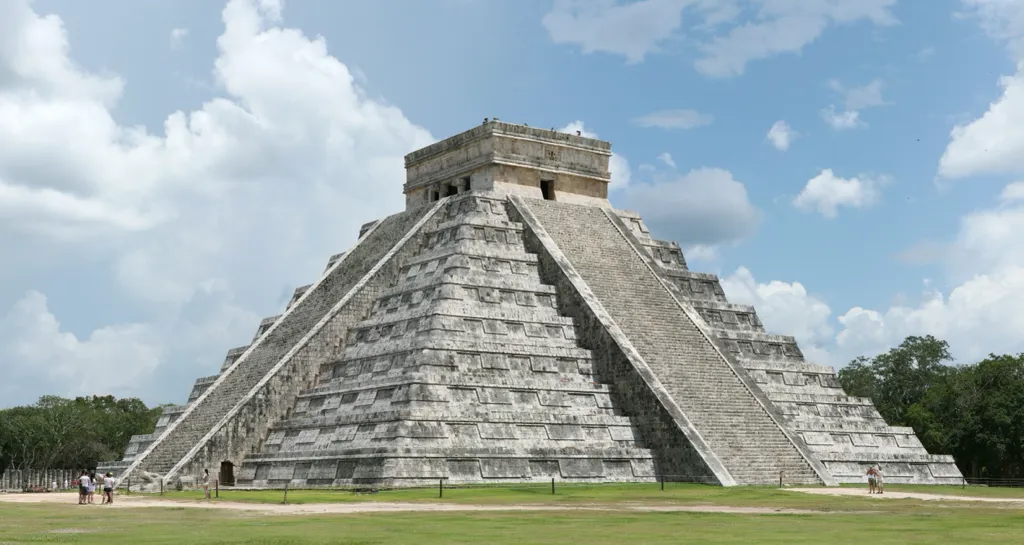
A World Unfolding:
The Pyramid Map is a living document, which is constantly evolving as new discoveries come to light. The world is ever-expanding, and with it are discoveries of new Pyramids, buried for centuries. With archaeologists and historians around the globe tirelessly unraveling the mysteries of these captivating structures, we are bound to keep unearthing more. So, check back often to see the latest additions and embark on a continuous journey through history.
By looking at this you may be wondering….
How many countries have pyramids in the world?
As of now, several countries around the world have pyramids, each with unique historical and cultural significance. Here are the countries who have pyramids:
Egypt, Sudan, Cambodia, Indonesia, France, Italy, Germany, Holland, England, Scotland, Ireland, Mexico, Guatamala, Belize, Hondoras, Libya, Lebanon, Peru, Bolivia, Japan, Poland, South Korea, China, South Africa, United States, Nigeria, French Polynesia, Tenerife, Mali, Mauritius, Pakistan
This pyramid map is a work in progress! New discoveries are constantly being made, revealing even more secrets about these amazing structures. Thanks to dedicated archaeologists and historians worldwide, the world of pyramids keeps expanding. We’ll keep this list and the linked map updated with the latest finds, so check back often!
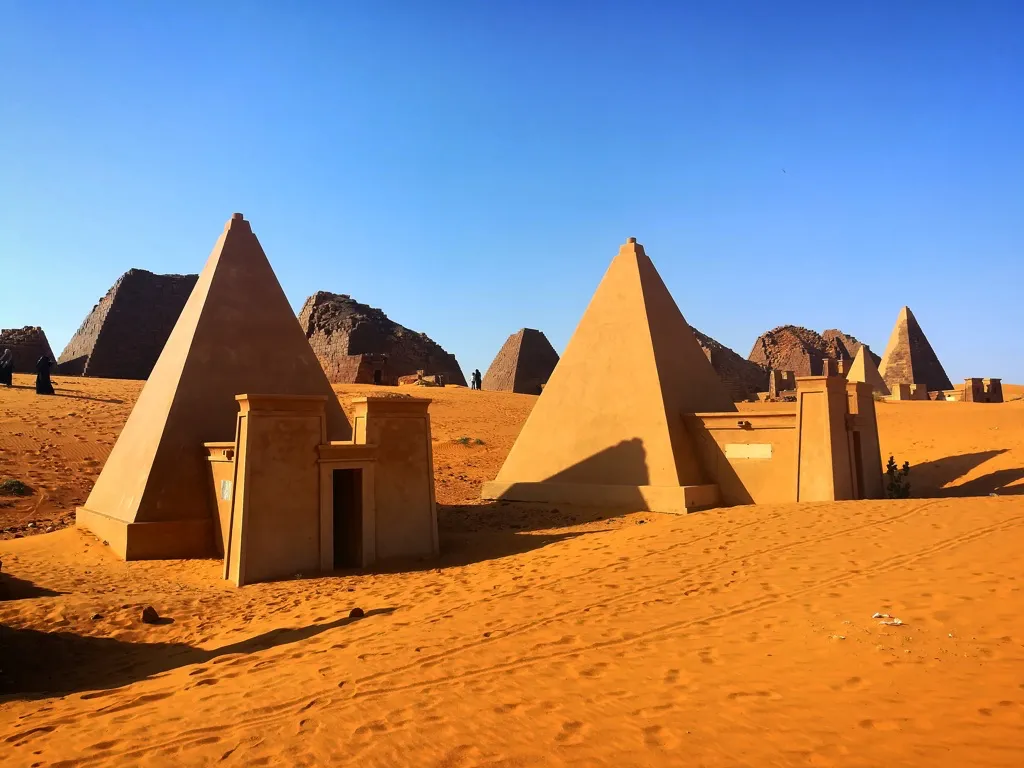
Think you spotted a missing pyramid? Have a captivating story about one of these wonders? Share them in the comments! Let’s build a community of pyramid enthusiasts together, uncovering the secrets these magnificent structures hold.
And if you love Pyramids as much as I do, head over and see these before and after excavation pictures, which are truly fascinating.
Full List of Pyramids built before 1900
Cambodia has 2 structures which can be referred to as pyramids. These structures are step pyramids, differing from the smooth-sided pyramids of Egypt. Koh Ker Pyramid and Baksei Chamkrong.
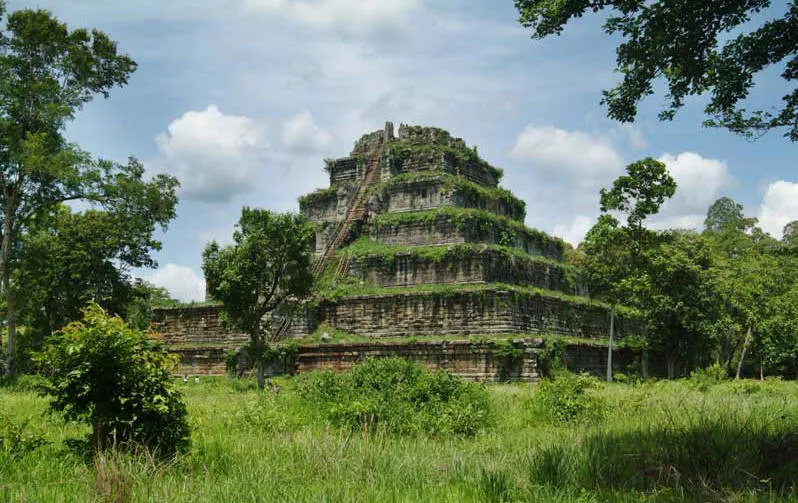
| Koh Ker Pyramid The Koh Ker pyramid, also known as Prasat Thom, is a significant archaeological site in Cambodia. Construction Period: Built in the early 10th century (928-944 AD) | Baksei Chamkrong Baksei Chamkrong is a significant temple located in the Angkor region of Cambodia. Construction Period: Built around 947 AD |
How many pyramids are in Egypt?
According to Wikipedia At least 118 Egyptian pyramids have been identified, however I have only been able to find 66 so far, which are listed in detail below.
Here you can see the Egyptian Pyramids on a Map or you can see the table below.
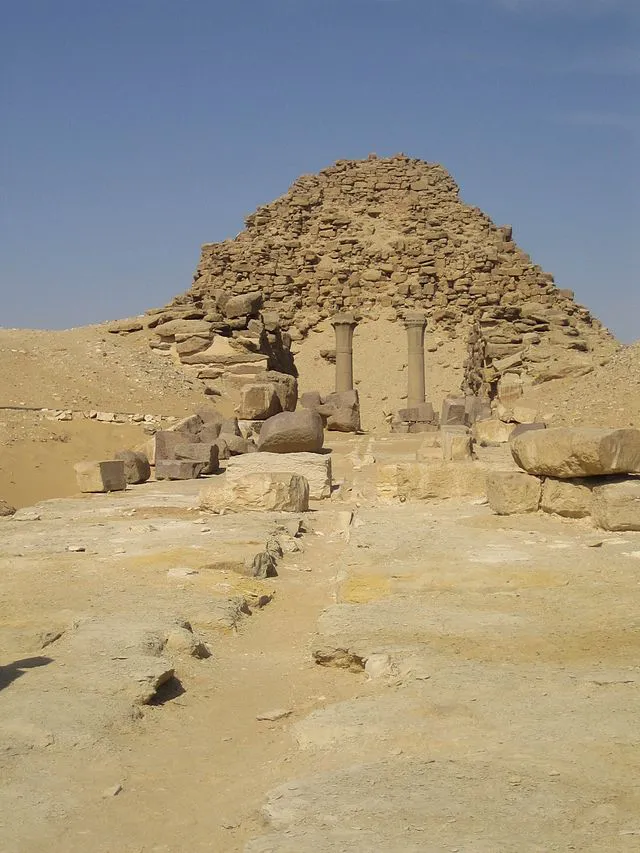
| Pyramid of Djoser The Pyramid of Djoser, located in Saqqara, Egypt, is an ancient step pyramid and the earliest colossal stone building in Egypt. Key features include its six stacked mastabas, designed by the architect Imhotep, which represent an evolutionary step towards the smooth-sided pyramids. Period: Constructed during the 27th century BC (Third Dynasty of Egypt). | Meidum Pyramid (Snefru) The Meidum Pyramid, located near the Faiyum Oasis in Egypt, is an ancient pyramid that initially began as a step pyramid and was later modified into a true pyramid. Key features include its partially collapsed structure, which reveals the original steps, and its significance as an early attempt at a smooth-sided pyramid. Period: Constructed during the 26th century BC (Fourth Dynasty of Egypt). |
| Pyramid of Menkaure The Pyramid of Menkaure, located on the Giza Plateau in Egypt, is the smallest of the three main pyramids at Giza. Key features include its relatively modest height of 65 meters (213 feet), the high-quality granite used in its casing, and its association with the pharaoh Menkaure. Period: Constructed during the 25th century BC (Fourth Dynasty of Egypt). | The Bent Pyramid (Snefru) The Bent Pyramid, located at Dahshur, Egypt, is an ancient pyramid known for its unique shape, with a change in angle partway up its sides. Key features include its original polished limestone casing, which is still largely intact, and its importance as an architectural transition between step pyramids and smooth-sided pyramids. Period: Constructed during the 26th century BC (Fourth Dynasty of Egypt) under Pharaoh Sneferu. |
| The Red Pyramid The Red Pyramid, also located at Dahshur, Egypt, is the first successful attempt at constructing a smooth-sided pyramid. Key features include its reddish hue from the limestone used, its height of 104 meters (341 feet), and its role as the burial place of Pharaoh Sneferu. Period: Constructed during the 26th century BC (Fourth Dynasty of Egypt). | Pyramid of Khafre The Pyramid of Khafre, located on the Giza Plateau in Egypt, is the second largest of the three main pyramids at Giza. Key features include its distinctive smooth-sided structure, standing at 136 meters (446 feet), and the Great Sphinx of Giza, which is part of its complex and often associated with Khafre. Period: Constructed during the 26th century BC (Fourth Dynasty of Egypt). |
| The Great Pyramid of Giza The Great Pyramid of Giza, located on the Giza Plateau in Egypt, is the largest and most famous of the pyramids at Giza. It was constructed as a tomb for the Pharaoh Khufu. Key features include its original height of 146.6 meters (481 feet), making it the tallest man-made structure in the world for over 3,800 years, and its precise alignment with the cardinal points. Period: Constructed during the 26th century BC (Fourth Dynasty of Egypt). | Pyramid of Userkaf The Pyramid of Userkaf, located in Saqqara, Egypt, is the first pyramid of the Fifth Dynasty. Key features include its unusual structure, combining elements of both pyramid and mastaba architecture, and its associated mortuary temple, reflecting significant architectural innovation. Period: Constructed during the 25th century BC (Fifth Dynasty of Egypt). |
| Pyramid of Sahure The Pyramid of Sahure, located in Abusir, Egypt, is notable for its refined architectural style and the intricate reliefs found in its mortuary temple. Key features include its original height of about 47 meters (154 feet) and its significant contributions to the development of pyramid complexes. Period: Constructed during the 25th century BC (Fifth Dynasty of Egypt). | Pyramid of Neferirkare The Pyramid of Neferirkare, also located in Abusir, Egypt, is the tallest of the Fifth Dynasty pyramids, initially intended as a step pyramid and later modified to a true pyramid. Key features include its height of approximately 72 meters (236 feet) and its complex internal structure. Period: Constructed during the 24th century BC (Fifth Dynasty of Egypt). |
| Pyramid of Nyuserre The Pyramid of Nyuserre, located in Abusir, Egypt, is one of the best-preserved pyramids of the Fifth Dynasty. Key features include its height of about 52 meters (171 feet), well-preserved causeway, and extensive reliefs depicting various aspects of ancient Egyptian life. Period: Constructed during the 24th century BC (Fifth Dynasty of Egypt). | Pyramid of Djedkare-Isesi The Pyramid of Djedkare-Isesi, located in South Saqqara, Egypt, marks the transition from the Fifth to the Sixth Dynasty. Key features include its original height of approximately 52 meters (171 feet) and its associated mortuary temple, which shows significant architectural developments. Period: Constructed during the late 24th century BC (Fifth Dynasty of Egypt). |
| Pyramid of Unas The Pyramid of Unas, located in Saqqara, Egypt, is notable for being the first pyramid to include the Pyramid Texts, a collection of religious inscriptions. Key features include its relatively small size compared to earlier pyramids, with a height of about 43 meters (141 feet), and its intricately decorated burial chamber. Period: Constructed during the 24th century BC (Fifth Dynasty of Egypt). | Pyramid of Teti The Pyramid of Teti, also located in Saqqara, Egypt, is the burial place of Pharaoh Teti, the first ruler of the Sixth Dynasty. Key features include its original height of approximately 52 meters (171 feet), its Pyramid Texts inscribed on the walls of the burial chamber, and its associated mortuary temple and causeway. Period: Constructed during the 23rd century BC (Sixth Dynasty of Egypt). |
| Pyramid of Pepi II The Pyramid of Pepi II, located in South Saqqara, Egypt, is the pyramid of one of Egypt’s longest-reigning pharaohs. Key features include its height of about 52 meters (171 feet), extensive use of Pyramid Texts, and the well-preserved substructure. The associated mortuary complex includes a causeway and valley temple. Period: Constructed during the 22nd century BC (Sixth Dynasty of Egypt). | Pyramid of Amenemhet I The Pyramid of Amenemhet I, located in Lisht, Egypt, is the burial place of the founder of the Twelfth Dynasty. Key features include its original height of approximately 55 meters (180 feet), a complex of subsidiary pyramids, and its integration into a larger mortuary complex that includes temples and enclosures. Period: Constructed during the 20th century BC (Twelfth Dynasty of Egypt). |
| Pyramid of Senusret I The Pyramid of Senusret I, also located in Lisht, Egypt, is a significant Twelfth Dynasty pyramid. Key features include its height of about 61 meters (200 feet), a complex of smaller pyramids for queens, and the extensive use of limestone in its construction. Period: Constructed during the 20th century BC (Twelfth Dynasty of Egypt). | Pyramid of Senusret II The Pyramid of Senusret II, located in El-Lahun, Egypt, is known for its innovative architectural techniques and extensive surrounding complex. Key features include its original height of approximately 48 meters (157 feet), the inclusion of a labyrinthine substructure, and its large surrounding funerary complex with workers’ villages and temples. Period: Constructed during the 19th century BC (Twelfth Dynasty of Egypt). |
| Pyramid of Senusret III The Pyramid of Senusret III, located in Dahshur, Egypt, is one of the major pyramids of the Middle Kingdom. Key features include its core structure made of mud bricks, an outer casing of limestone (now mostly missing), and a complex substructure with multiple burial chambers and corridors. It reflects significant advancements in pyramid construction techniques during this period. Period: Constructed during the 19th century BC (Twelfth Dynasty of Egypt). | Pyramid of Amenemhat III The Pyramid of Amenemhat III, also known as the Black Pyramid, is located in Dahshur, Egypt. Key features include its dark, mudbrick core, giving it the name “Black Pyramid,” and its unique construction challenges that led to significant structural issues. The pyramid was intended as the burial place of Amenemhat III, but he was later buried at Hawara. Period: Constructed during the 19th century BC (Twelfth Dynasty of Egypt). |
| Pyramid of Hawara The Pyramid of Hawara, located near the Faiyum Oasis in Egypt, is the second pyramid built by Amenemhat III, after the structural failures of his first pyramid at Dahshur. Key features include its original height of approximately 58 meters (190 feet), a complex labyrinthine substructure, and its close association with the famous Labyrinth, a large mortuary temple complex adjacent to the pyramid. Period: Constructed during the 19th century BC (Twelfth Dynasty of Egypt). | Edfu South Pyramid The Edfu South Pyramid, located near Edfu in southern Egypt, is one of the seven small provincial pyramids. Key features include its core constructed from rough local limestone blocks and its original height of about 5 meters (16 feet), indicating its function as a regional marker or ceremonial structure rather than a royal tomb. Period: Constructed during the Third Dynasty (circa 2670 BC). |
| Pyramid of Elephantine (Huni) The Pyramid of Elephantine, located on Elephantine Island near Aswan, Egypt, is another one of the seven provincial pyramids. Key features include its small size, with a base length of about 18 meters (59 feet), and its construction from local stone, reflecting its purpose as a symbolic structure. Period: Constructed during the Third Dynasty (circa 2600 BC). | The Pyramid of Seila (Snefru) The Pyramid of Seila, located near the Faiyum Oasis, Egypt, is a small step pyramid. Key features include its five-stepped structure and construction from local limestone blocks, indicating its role in demonstrating royal power and religious significance in the region. Period: Constructed during the Third Dynasty (circa 2600 BC). |
| Pyramid of el-Kula The Pyramid of el-Kula, located near the village of el-Kula in Upper Egypt, is one of the provincial pyramids. Key features include its simple stepped design and rough stone construction, reflecting its likely ceremonial or symbolic purpose rather than serving as a tomb. Period: Constructed during the Third Dynasty (circa 2670 BC). | Pyramid of Naqada (Pyramid of Ombos) The Pyramid of Naqada, also known as the Pyramid of Ombos, is located near the town of Naqada in Upper Egypt. It is one of the seven provincial pyramids. Key features include its small size and rough stone construction, reflecting its likely ceremonial or symbolic purpose. Period: Constructed during the Third Dynasty (circa 2670 BC). |
| Pyramid of Saujet el-Meitin The Pyramid of Saujet el-Meitin, located in Middle Egypt near the modern village of Saujet el-Meitin, is another one of the provincial pyramids. Key features include its small, stepped structure built from local stone, indicating its function as a regional marker or ceremonial site. Period: Constructed during the Third Dynasty (circa 2670 BC). | Pyramid of Sinki The Pyramid of Sinki, located near the village of Sinki in Upper Egypt, is one of the provincial pyramids. Key features include its simple, stepped design and rough stone construction, serving as a symbolic structure rather than a royal tomb. Period: Constructed during the Third Dynasty (circa 2670 BC). |
| Pyramid of Khentkaus I The Pyramid of Khentkaus I, located in Giza, Egypt, is the burial place of Queen Khentkaus I, who held significant power during the Fourth Dynasty. Key features include a mastaba base topped with a pyramid, intricate burial chambers, and a small mortuary temple, reflecting her royal status. Period: Constructed during the Fourth Dynasty (circa 2500 BC). | Pyramid of Khentkaus II The Pyramid of Khentkaus II, located in Abusir, Egypt, is the burial site of Queen Khentkaus II, wife of King Neferirkare. Key features include a large base, a relatively well-preserved burial chamber, and remnants of a mortuary temple, indicating her significant status during the Fifth Dynasty. Period: Constructed during the Fifth Dynasty (circa 2450 BC). |
| Sekhemkhet Buried Pyramid The Sekhemkhet Buried Pyramid, located in Saqqara, Egypt, is an unfinished step pyramid built for Pharaoh Sekhemkhet. Key features include an incomplete stepped structure and an underground burial chamber, reflecting its halted construction during the king’s short reign. Period: Constructed during the Third Dynasty (circa 2648 BC). | Khaba’s Layer Pyramid The Layer Pyramid, located near Zawyet El Aryan, Egypt, is an unfinished step pyramid attributed to Pharaoh Khaba. Key features include its unique layered appearance and core structure of large, rough blocks, indicating its early design phase. Period: Constructed during the Third Dynasty (circa 2645 BC). |
| Pyramid of Djedefre The Pyramid of Djedefre, located at Abu Rawash, Egypt, is the burial site of Pharaoh Djedefre, son of Khufu. Key features include its ruined state, with only the base and core remaining, and its originally intended height, which would have made it one of the tallest pyramids in Egypt. Period: Constructed during the Fourth Dynasty (circa 2566 BC). | Northern Pyramid of Zawyet el’Aryan The Northern Pyramid of Zawyet el’Aryan, located near Zawyet el’Aryan, Egypt, is an unfinished pyramid attributed to a pharaoh of the Third Dynasty, possibly Khaba. Key features include a large square base and an unfinished core, reflecting its incomplete construction. Period: Constructed during the Third Dynasty (circa 2645 BC). |
| Pyramid of Neferefre The Pyramid of Neferefre, located in Abusir, Egypt, is an unfinished pyramid built for Pharaoh Neferefre. Key features include its truncated state, with only the lower steps completed, and a large mortuary complex indicating its intended significance. Period: Constructed during the Fifth Dynasty (circa 2445 BC). | Unfinished pyramid of North Abusir The Unfinished Pyramid of North Abusir, located in North Abusir, Egypt, is attributed to an unknown pharaoh, likely from the Fifth Dynasty. Key features include its incomplete state, with only the foundations and some lower layers completed, indicating its construction was abruptly halted. Period: Constructed during the Fifth Dynasty (circa 2400 BC). |
| Headless Pyramid The Headless Pyramid, located in Saqqara, Egypt, is attributed to Pharaoh Menkauhor. Key features include its largely destroyed structure, with the top portion missing, and remnants of its base and lower courses. Period: Constructed during the Fifth Dynasty (circa 2420 BC). | Pyramid of Pepi I The Pyramid of Pepi I, located in South Saqqara, Egypt, is the burial site of Pharaoh Pepi I. Key features include its relatively well-preserved core structure, extensive Pyramid Texts inscribed within its burial chambers, and a complex of associated temples and pyramids. Period: Constructed during the Sixth Dynasty (circa 2332 BC). |
| Pyramid of Merenre The Pyramid of Merenre, located in South Saqqara, Egypt, is the burial site of Pharaoh Merenre I. Key features include its partially collapsed structure, well-preserved inner chambers with Pyramid Texts, and an associated mortuary temple. Period: Constructed during the Sixth Dynasty (circa 2287 BC). | Pyramid of Ibi The Pyramid of Ibi, located in South Saqqara, Egypt, is the burial site of Pharaoh Ibi of the Eighth Dynasty. Key features include its small size compared to earlier pyramids, its ruinous state, and remnants of an associated mortuary temple. Period: Constructed during the Eighth Dynasty (circa 2181 BC). |
| Pyramid of Khui The Pyramid of Khui, located in Dara, near the Faiyum region of Egypt, is attributed to the obscure ruler Khui. Key features include its small size and ruinous state, with a core constructed from rough limestone blocks and mudbrick. The pyramid reflects the decline in pyramid construction quality during the First Intermediate Period. Period: Constructed during the Ninth or Tenth Dynasty (circa 2150-2050 BC). | Pyramid of Merikare The Pyramid of Merikare, located in Saqqara, Egypt, is attributed to Pharaoh Merikare, a ruler of the Tenth Dynasty. Key features include its unfinished state, with only the base and some inner structures remaining, reflecting the turmoil and reduced resources of the First Intermediate Period. Period: Constructed during the Tenth Dynasty (circa 2075-2040 BC). |
| White Pyramid The White Pyramid, located in Dahshur, Egypt, is attributed to Pharaoh Amenemhat II. Key features include its original white limestone casing, which has mostly been removed, and a complex of associated temples and subsidiary pyramids. The pyramid’s core remains largely intact. Period: Constructed during the Twelfth Dynasty (circa 1929-1895 BC). | Southern Mazghuna pyramid The Southern Mazghuna Pyramid, located in Mazghuna, south of Dahshur, Egypt, is attributed to an unknown ruler, possibly Amenemhat IV or Sobekneferu. Key features include its unfinished state, with a partially completed substructure and no evidence of a superstructure. Period: Constructed during the Thirteenth Dynasty (circa 1800 BC). |
| Northern Mazghuna pyramid The Northern Mazghuna Pyramid, also located in Mazghuna, Egypt, is attributed to an unknown ruler, possibly Sobekneferu. Key features include an incomplete substructure with intricate corridors and chambers, reflecting an attempt at continuing the pyramid-building tradition during a period of decline. Period: Constructed during the Thirteenth Dynasty (circa 1800 BC). | Pyramid of Ameny Qemau The Pyramid of Ameny Qemau, located in Dahshur, Egypt, is attributed to the relatively obscure Pharaoh Ameny Qemau. Key features include its collapsed and ruinous state, with remnants of the substructure and burial chamber. The pyramid reflects the challenges of maintaining pyramid construction during the late Middle Kingdom. Period: Constructed during the Thirteenth Dynasty (circa 1790 BC). |
| Pyramid of Khendjer The Pyramid of Khendjer, located in South Saqqara, Egypt, is the burial site of Pharaoh Khendjer, a ruler of the Thirteenth Dynasty. Key features include a well-preserved substructure with intricate burial chambers and Pyramid Texts, as well as an associated mortuary temple. Period: Constructed during the Thirteenth Dynasty (circa 1764-1759 BC). | Pyramid of Ahmose The Pyramid of Ahmose, located in Abydos, Egypt, is the last royal pyramid built in Egypt, belonging to Pharaoh Ahmose I, the founder of the Eighteenth Dynasty. Key features include its ruined state, with only the base and some core masonry remaining, and its historical significance as marking the end of the pyramid-building era in ancient Egypt. Period: Constructed during the early Eighteenth Dynasty (circa 1550 BC). |
| Southern South Saqqara pyramid The Southern South Saqqara Pyramid, located in South Saqqara, Egypt, is attributed to an unknown ruler, possibly from the Thirteenth Dynasty. Key features include its unfinished state and its proximity to other pyramids from the Middle Kingdom period, suggesting it was part of a larger necropolis. Period: Constructed during the Thirteenth Dynasty (circa 1800 BC). | Tomb S9 Tomb S9, located in South Saqqara, Egypt, is a significant burial site from the Second Intermediate Period. Key features include its rock-cut structure, elaborate burial chambers, and associated artifacts, reflecting the burial practices and architectural styles of the period. Period: Constructed during the Second Intermediate Period (circa 1650-1550 BC). |
| Tomb S10 Tomb S10, also located in South Saqqara, Egypt, is another important burial site from the Second Intermediate Period. Key features include its rock-cut design, intricate decoration, and the presence of numerous grave goods, indicating the tomb’s importance and the high status of its occupant. Period: Constructed during the Second Intermediate Period (circa 1650-1550 BC). | Pyramid of Ity The Pyramid of Ity, located near Saqqara, Egypt, is a relatively unknown pyramid attributed to a minor king named Ity. Key features include its small size and ruinous state, reflecting the lesser-known rulers of ancient Egypt. Period: Constructed during the First Intermediate Period (circa 2100 BC). |
| Lepsius Pyramid The Lepsius Pyramid, located in Abu Rawash, Egypt, is one of the lesser-known pyramids and was identified by Karl Richard Lepsius, a pioneering Egyptologist. Key features include its heavily eroded structure and its identification as potentially one of the earliest attempts at pyramid construction, often attributed to the Third Dynasty. Period: Constructed during the Third Dynasty (circa 2600 BC). | Huni’s Small Pyramid This small pyramid, located about 7 kilometers south of Minya, in Zawiyet el-Meiyitin, it is the only one situated on the east bank of the Nile. The ruins of the pyramid currently reach a height of barely 5 meters. Constructed of limestone bound with a mortar made of mud, sand, and lime, the pyramid was investigated by Raymond Weill in 1911 and later by Philippe Lauer. The pyramid is attributed to Pharaoh Huni, who is believed to have constructed numerous step cenotaphs, according to W. Kaiser and G. Dreyer. Period: Constructed around 2600 BC |
| Pyramid at el-Kuhla Located near the village of Naga el-Mamariya, about 6 km north of Hierakonpolis, on the west bank of the Nile. The pyramid at el-Kuhla is constructed of rough pieces of limestone held together with mortar made of clay, mud, sand, and small bits of limestone. When first investigated and described by Perring and Vyse in 1837, it stood at about 12 meters high. This pyramid is attributed to Pharaoh Huni, who is believed to have built numerous step cenotaphs, according to W. Kaiser and G. Dreyer. Period: Constructed around 2600 BC | Khufu’s Cult Pyramid – G1d Discovered in 1992-93 by Zahi Hawass, near the southeast corner of the Great Pyramid, are the ruins of a small cult pyramid, including fragments of its pyramidion. The pyramid was almost completely ruined, with only a few core and casing blocks remaining in situ along the east and south sides. Its substructure was cut into the bedrock and consisted of a simple design: a descending passage leading to a 9-foot deep rectangular chamber with slightly inward-sloping walls. Period: Constructed during the 26th century BC (Fourth Dynasty of Egypt). |
| Hetepheres I’s Pyramid – G1a The northernmost pyramid was initially attributed to Queen Meritit, but today, Mark Lehner considers it to be the tomb of Queen Hetepheres I. The core of G1a, which originally consisted of three or perhaps even four steps, was built of yellowish-gray limestone. The entrance in the north wall is located slightly above the base of the pyramid. The descending corridor turns to the right and leads to a small burial chamber cut into the rock and surfaced with limestone blocks. No sarcophagus was found in it. A small mortuary temple stood before the east wall of the pyramid. South of G1a, a pit for a boat burial was dug in the rock, but no traces of the boat have been found. It is listed as L.V on Lepsius Pyramid List. Period: Late 26th century BC to early 25th century BC | Meritit’s Pyramid – G1b The pyramid resembles G1a. No remains of a buried boat were found. Consequently, it is unclear which queen was buried there; it may have been Meritit, who was probably one of Khufu’s older wives. She is thought to be the mother of Prince Kawab and may have transitioned from Snefru’s harem to Khufu’s. It is listed as L.VI on Lepsius Pyramid List. Period: Late 26th century BC to early 25th century BC |
| Henutsen’s Pyramid – G1c The southernmost of the queens’ pyramids, G1c, is thought to belong to Queen Henutsen. According to G. Reisner, its casing remained unfinished. In many respects, its architecture resembles that of the other two pyramids. Some scholars believe this pyramid was not part of Khufu’s original plan. If Stadelmann is correct in thinking that the double mastaba belonged to Prince Khufukhaf before he became king and was known as Khafre, then the latter was probably the builder of pyramid G1c. It is listed as L.VII on Lepsius Pyramid List. Period: Late 26th century BC to early 25th century BC | Cult Pyramid by Khafre’s Pyramid – G2a This completely destroyed pyramid on the south side of Khafre’s tomb had its own perimeter wall. Its substructure is simple, consisting of a descending corridor and an underground chamber. In the chamber, bits of wood, carnelian beads, fragments of animal bones, and covers for vessels were found. Stadelmann thinks that it is a cult pyramid. Opposite to Maragioglio and Rinaldi, he concludes that one of Khafre’s consorts was buried in the pyramid. Period: Mid 26th century BC |
| Baka’s Pyramid Zawiyet el-Aryan The Northern Pyramid of Zawyet el-Aryan, also known as the Pyramid of Baka and Pyramid of Bikheris, is a massive, unfinished pyramid located at Zawyet el-Aryan in Egypt. Its ownership is uncertain, but most Egyptologists believe it belonged to a king known under his Hellenized name, Bikheris, although some scholars dispute this dating. Period: Possibly 4th dynasty, around 2500 BC | Pyramid G3a by Menkaure’s Pyramid The entrance to this easternmost and largest of the small pyramids near the tomb of Menkaure was in the middle of the north wall, not far above ground level. The burial chamber was dug out of the rock under the center of the pyramid’s base. In front of the pyramid’s east side stood a small, east-west oriented mortuary temple. G. Reisner hypothesized that G3a belonged to Menkaure’s consort Khamerernebti II. It is listed on Lepsius Pyramid List as L.XII. Period: circa 2500 BC |
| Pyramid G3b of unknown queen by Menkaure’s Pyramid Pyramid G3b differs from G3a in certain details, such as the placement of the descending corridor and the lack of a barrier. In the pink granite sarcophagus, which stood against the west wall of the burial chamber, the bones of a young woman were found. The small brick temple in front of the pyramid’s west wall is oriented north-south, in contrast to that of G3a. This pyramid probably belonged to one of Menkaure’s consorts. It is listed on Lepsius Pyramid List as L.XI. Period: Circa 2500 BC | Pyramid G3c of unknown queen by Menkaure’s Pyramid Pyramid G3c never had a complete casing. As in G3b, its burial chamber was under the northwest part of the pyramid and was not finished. No traces of a burial were found, which contrasts with the clear evidence of a cult in the small mortuary temple in front of the east side of the pyramid. The brick temple is oriented in the same way as Pyramid G3b. This pyramid probably belonged to one of Menkaure’s consorts. It is listed on Lepsius Pyramid List as L.X. Period: Circa 2500 BC |
| Khentkawes I’s Step Tomb This large two-step tomb structure near Menkaure’s valley temple was thought by some early Egyptologists to be the fourth pyramid in Giza. The superstructure consists of two steps. The lower step, which has the form of a low, truncated pyramid, was built by cutting and preparing the rock outcropping. It has an almost square ground plan, oriented north-south. Originally, the surfaces of all four side walls were decorated with niches resembling false doors. A huge gateway of pink granite provided access to the tomb from the southeast. In the antechamber, there were entrances into rooms on the west and the north. The substructure has a unique architecture, including six small storerooms near the burial chamber, which has a pair of false doors. Period: Around 2500 BC | Mastabat al-Fir’aun Shepseskaf, son and successor of Menkaure, did not build a pyramid but erected a large mastaba at South Sakkara, known as Mastabat el-Fara’un. Its dimensions are 99.6 x 74.4 meters, resembling the mastabas of the 1st Dynasty at North Sakkara. A descending corridor from the north side leads 20.95 meters down, continues 19.5 meters horizontally, and enters the antechamber. The vestibule is 3.1 x 8.3 meters with a sloped roof starting at 5.6 meters. A 10.6-meter corridor with niches leads to the funerary chamber, which measures 3.85 x 7.79 meters, with a sloped roof starting at 4.9 meters. Remnants of the sarcophagus were found in the funerary chamber, and pieces of a diorite statue of Shepseskaf were discovered in the mortuary temple. Period: Approximately 2500 BC |
Are there pyramids in Indonesia?
Yes, there are pyramids in Indonesia. The most notable is the Gunung Padang pyramid, which is located in West Java. It is an ancient megalithic site that is believed to be one of the oldest pyramids in the world.
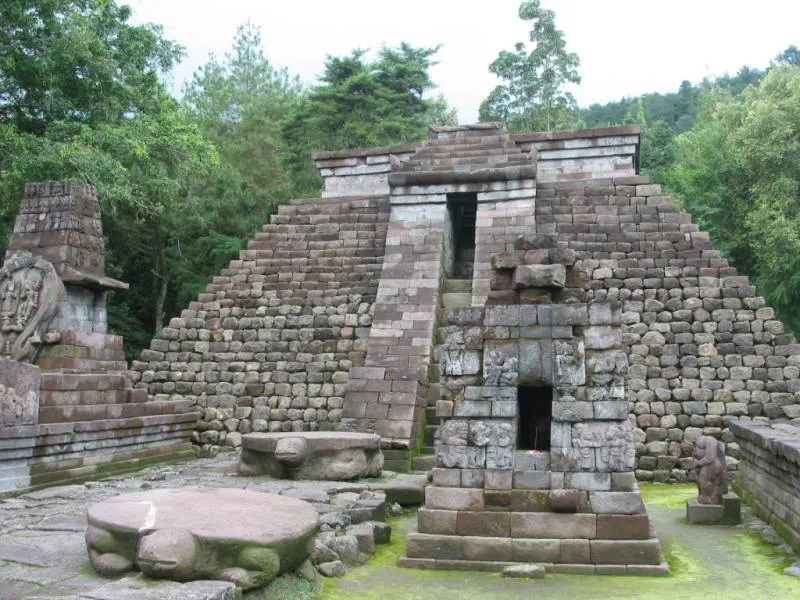
| Candi Sukuh Pyramid – Indonesia Candi Sukuh is an ancient Hindu temple on the slopes of Mount Lawu in Central Java, Indonesia. Known for its unique pyramid-like structure and intricate carvings. Construction Period: 15th century (circa 1437 AD). | Pugung Raharjo Pyramid Pugung Raharjo is an archaeological site located in Lampung, Sumatra, Indonesia. It is notable for its megalithic structures, including a pyramid-like monument Construction Period: Believed to be around the 1st millennium AD |
| Candi Kethek Pyramid Candi Kethek is an intriguing archaeological site located in Central Java, Indonesia. It is particularly notable for its terraced, pyramid-like structure Construction Period: Estimated to date back to the 15th century, during the late Majapahit period. | Lebak Cibedug Pyramid Lebak Cibedug is an ancient megalithic site located in Banten, Indonesia. It features a pyramid-like structure. Construction Period: Estimated to date back to the 1st millennium AD |
| Gunung Padang Gunung Padang is a prehistoric megalithic site located in West Java, Indonesia. It is considered one of the largest and oldest megalithic sites in Southeast Asia, known for its pyramid-like terraced structure and significant archaeological findings. Construction Period: Estimated to date back to between 5,000 and 20,000 years ago, making it potentially one of the oldest known structures in the world. | Borobudur – Indonesia Borobudur is a majestic Mahayana Buddhist temple in Central Java, Indonesia. Renowned as one of the greatest Buddhist monuments in the world, it reflects the pinnacle of ancient Javanese architecture and art. Construction Period: 8th to 9th century (around 750-850 AD). |
| Pangguyangan Pangguyangan is a lesser-known megalithic site located in Java, Indonesia. It features pyramid-like structures that offer a glimpse into the prehistoric culture and architectural practices of the region. | |
The Green Pyramids of Palau, also known as the Ngerchelong Terraces, are an intriguing archaeological site located in the Micronesian region of Palau. These ancient structures are notable for their terraced pyramid-like formations and their significance in the local culture and history.
- Location: Ngerchelong, Palau, Micronesia.
- Period: Estimated to date back to 1000-1600 AD
Are there pyramids in Belize?
Yes, there are pyramids in Belize. The country is home to several ancient Maya pyramids, notably the historical sites Lamanai, Xunantunich, Altun Ha, Caracol, Lubaantun, Nim Li Punit, Santa Rita all have Pyramids.
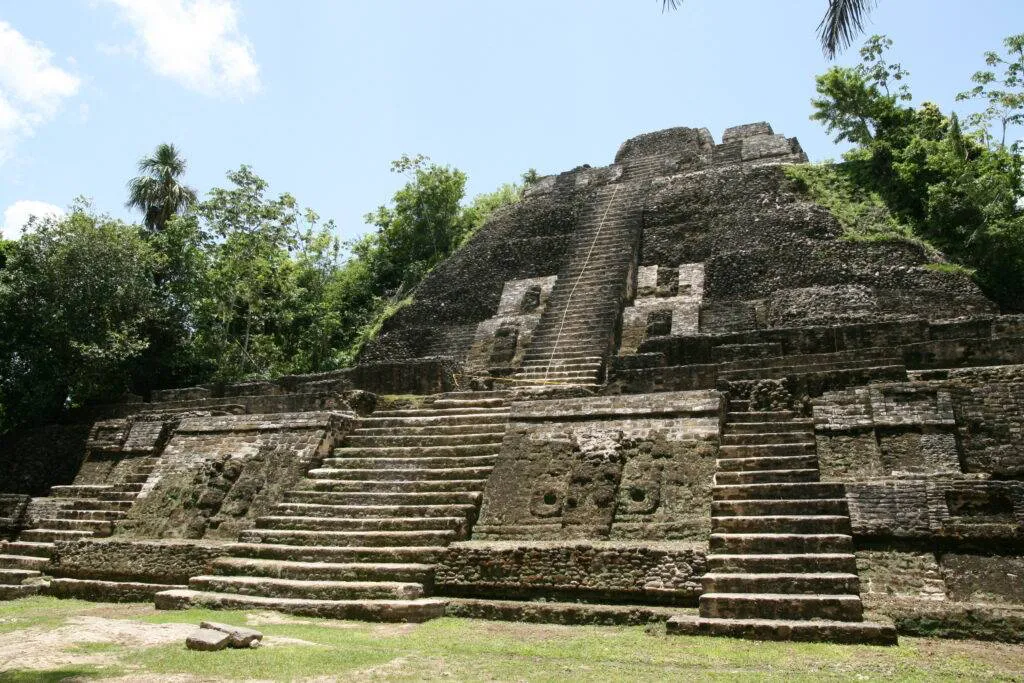
| Lamanai Lamanai is an ancient Maya city located in northern Belize. Renowned for its impressive pyramids, extensive ruins, and continuous occupation spanning over 3,000 years. The main pyramids at Lamanai include the High Temple, Jaguar Temple, and Mask Temple. Period: Occupied from around 1500 BC to the 17th century AD. | Xunantunich Xunantunich, located in western Belize, is an ancient Maya city known for its impressive pyramids and rich historical significance. Key structures include El Castillo and various groups of residential and ceremonial buildings. Period: Flourished during the Late Classic period (approximately 600-890 AD). |
| Altun Ha Altun Ha, located in northern Belize, is an ancient Maya city known for its well-preserved pyramids and significant archaeological finds. Key structures include the Temple of the Masonry Altars and the Temple of the Green Tomb. Period: Occupied from around 900 BC to 1000 AD, with its peak during the Classic period (250-900 AD). | Caracol Caracol, located in the Chiquibul Forest Reserve of western Belize, is one of the largest and most significant ancient Maya cities. Key structures include Caana, Plaza B, and multiple ball courts. Known for its political, military, and economic importance. Period: Occupied from around 1200 BC to 950 AD, with its peak during the Classic period (250-900 AD). |
| Lubaantun Lubaantun, located in southern Belize, is an ancient Maya city known for its unique dry-stone construction and distinctive architectural style. Key features include several pyramids, temples, and ball courts. Period: Flourished during the Late Classic period (approximately 730-890 AD). | Nim Li Punit Nim Li Punit, located in southern Belize, is an ancient Maya city known for its large stelae and distinctive architectural features. Key areas include the Plaza of the Stelae, East Group, and West Group. |
| Santa Rita Santa Rita, located in northern Belize near Corozal, is an ancient Maya site known for its long history of occupation and significance as a trade and ceremonial center. Key structures include the main pyramid, residential complexes, and a ball court. Period: Occupied from the Preclassic period (around 1200 BC) through to the Postclassic period (around 1530 AD). | |
Does El Salvador have Pyramids?
Yes, pyramids can be found at 4 main sites in El Salvador. Tazumal, Cihuatán, San Andrés, Casa Blanca.
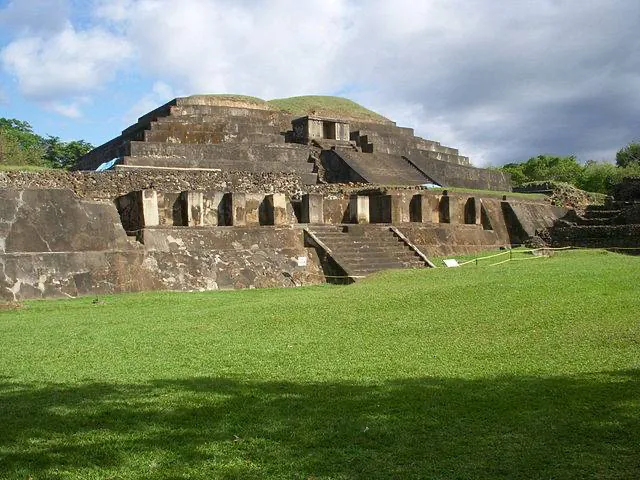
| Tazumal Tazumal, located in Chalchuapa, El Salvador, is an ancient Maya site known for its impressive pyramids and extensive history. Key structures include the main pyramid B1-1, a ball court, and multiple plazas. Period: Occupied from the Classic period (circa 250-900 AD) to the Postclassic period (circa 900-1200 AD). | Cihuatán Cihuatán, located in Aguilares, El Salvador, is an important ancient Mesoamerican site known for its extensive ruins and historical significance. Key features include the main pyramid, a large ball court, and residential areas. The site served as a major urban and ceremonial center. Period: Occupied primarily during the Late Classic to Early Postclassic periods (approximately 900-1200 AD). |
| San Andrés San Andrés, located in the Zapotitán Valley of El Salvador, is an ancient Maya site known for its impressive pyramids and ceremonial structures. Key features include the acropolis, main pyramid, plaza, and ball court. Serving as a major ceremonial and political center. Period: Occupied primarily during the Late Classic period (600-900 AD) and continued to be an important center until the Spanish conquest. | Casa Blanca Casa Blanca, located in Chalchuapa, El Salvador, is an ancient Maya site known for its impressive pyramids and ceremonial structures. Key features include Pyramid Structures 5 and 6, and several plazas. Period: Occupied from the Preclassic period (circa 1200 BC) through the Classic period (circa 250-900 AD). |
How many pyramids are in Guatemala?
There are 13 Ancient sites in Guatemala, all of which have pyramids. These historical places were built and occupied by the Ancient Maya Civilization.
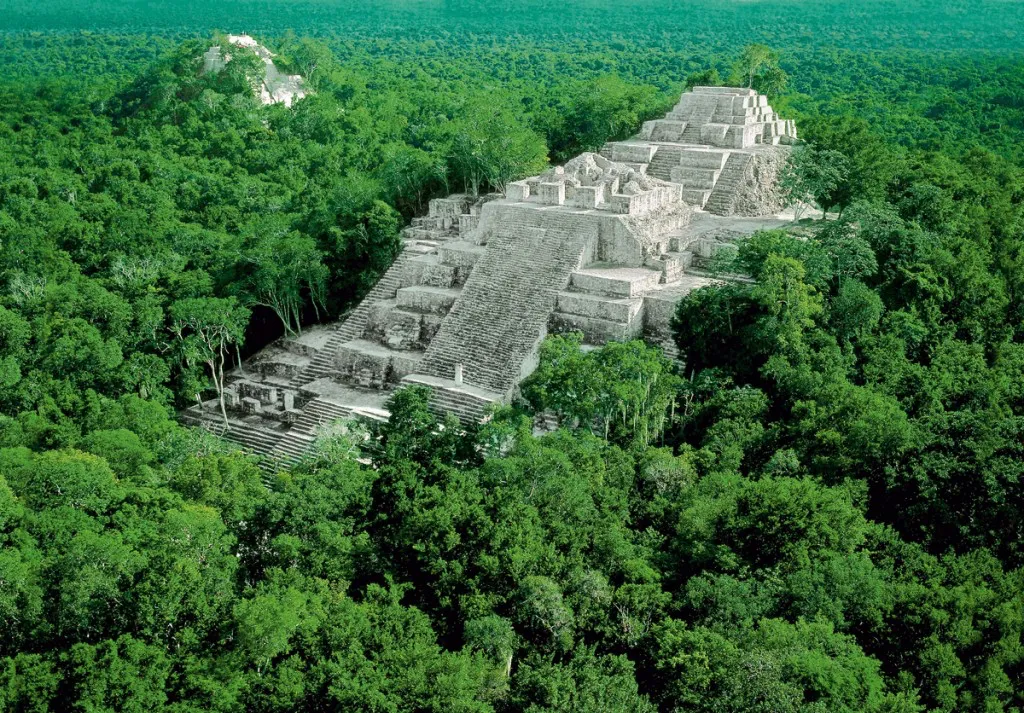
| Nakum Nakum, located in the Petén Basin of northern Guatemala, is an ancient Maya site known for its impressive pyramids, temples, and other structures. Key features include Temple U, the acropolis, the ball court, and the central plaza. Period: Occupied from the Preclassic period (circa 600 BC) to the Postclassic period (circa 1200 AD), with its peak during the Classic period (250-900 AD). | Tikal Tikal, located in the Petén Basin of northern Guatemala, is one of the most iconic ancient Maya cities, known for its towering pyramids and extensive historical significance. Key features include Temple I, Temple II, Temple IV, the Great Plaza, the North Acropolis, and the Central Acropolis. Period: Occupied from the Preclassic period (circa 400 BC) to the Postclassic period (circa 900 AD), with its peak during the Classic period (200-900 AD). |
| Yaxha Yaxha, located in the Petén Basin of northern Guatemala, is an ancient Maya city known for its impressive pyramids, temples, and other structures. Key features include Temple 216, the East and West Acropolises, multiple ball courts, and Plaza C Period: Occupied from the Preclassic period (circa 600 BC) to the Postclassic period (circa AD 900), with its peak during the Classic period (AD 250-900). | Mixco Viejo Mixco Viejo, located in the highlands of Guatemala near San Martín Jilotepeque, is an ancient Maya site known for its well-preserved ruins and strategic military significance. Key features include the main plaza, several pyramids, ball courts, and defensive fortifications. Serving as a major military stronghold and center of resistance against the Spanish conquest. Period: Occupied from the Postclassic period (circa AD 1200-1525). |
| Aguateca Aguateca, located in the Petexbatun region of Guatemala, is an ancient Maya site known for its well-preserved structures and extensive fortifications. Key features include the main plaza, palace group, defensive walls, and temples. Period: Late Classic period (circa AD 600-900) | El Mirador El Mirador, located in the Petén Basin of northern Guatemala, is an ancient Maya city known for its massive structures and early urban development. Key features include the La Danta pyramid, one of the largest pyramids in the world by volume, and the El Tigre complex. Period: Primarily during the Middle Preclassic to Late Preclassic periods (circa 600 BC to AD 150). |
| Zaculeu Zaculeu, located in the highlands of western Guatemala near the modern city of Huehuetenango, is an ancient Maya city known for its defensive structures and unique architectural style. Key features include several pyramids, plazas, and fortified walls, which highlight its strategic military importance and the influence of the Mam Maya. Period: Primarily during the Postclassic period (circa AD 900 to 1525). | Kaminaljuyu Kaminaljuyu, located in the highlands of Guatemala City, Guatemala, is an ancient Maya city known for its extensive ruins and early urban development. Key features include large earthen mounds, pyramids, and complex water management systems, reflecting its significance as a major political and economic center. Period: Occupied from the Preclassic period to the Early Classic period (circa 1500 BC to AD 600). |
| Quiriguá Quiriguá, located in the Izabal Department of southeastern Guatemala, is an ancient Maya city known for its impressive stelae and monumental sculptures. Key features include the Great Plaza, which contains some of the tallest stone monuments ever erected in the Maya world, and the Acropolis complex. Period: Primarily during the Late Classic period (circa AD 200 to 900). | Topoxte Topoxte, located on an island in Lake Yaxha in northern Guatemala, is an ancient Maya site known for its well-preserved temples and residential structures. Key features include three main temples, plazas, and evidence of post-Classic Maya occupation, which is relatively rare in the region. Period: Primarily during the Late Classic to Postclassic periods (circa AD 600 to 1200). |
| Takalik Abaj Takalik Abaj, located in the southwestern region of Guatemala in the Retalhuleu Department, is an ancient Maya and Olmec city known for its early urban development and cultural exchange between the two civilizations. Key features include large stone sculptures, altars, and stelae, as well as evidence of early hieroglyphic writing. Period: Occupied from the Middle Preclassic to the Early Classic periods (circa 800 BC to AD 300). | El Naranjo El Naranjo, located in the Petén Department of northern Guatemala, is an ancient Maya city known for its extensive ruins and significant role in regional politics. Key features include large pyramids, stelae, and the central acropolis, reflecting its importance as a major ceremonial and administrative center. Period: Primarily during the Late Classic period (circa AD 600 to 900). |
| Dos Pilas Dos Pilas, located in the Petén Basin region of Guatemala, is an ancient Maya city known for its impressive ruins and historical significance. Key features include its large pyramids, hieroglyphic stairways, and extensive palace complexes, reflecting its role as a major political and military center during the Late Classic period. Period: Occupied from the Late Classic period (circa AD 629 to 761). |
Are there any pyramids in Honduras?
Yes. Pyramids can be found at the Ancient sites of Copán, El Puente and Yarumela.
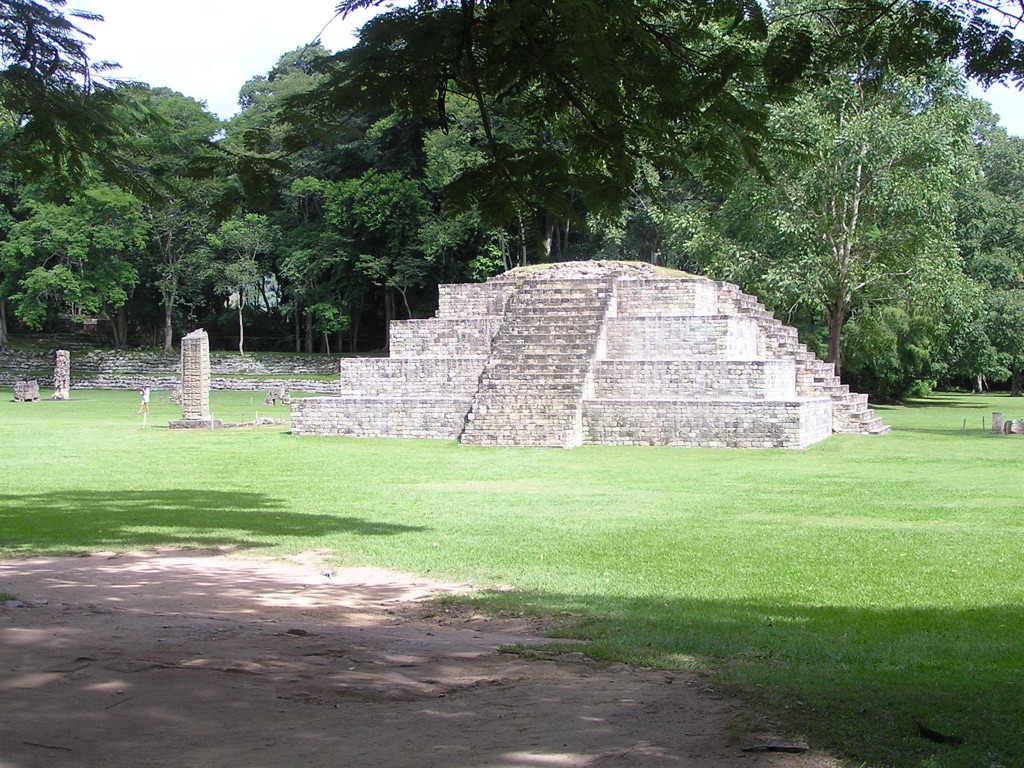
| Copán Copán, located in the Copán Department of western Honduras, is an ancient Maya city renowned for its impressive stone carvings and hieroglyphic inscriptions. Key features include the Hieroglyphic Stairway, the Acropolis, and the Great Plaza, which contains numerous stelae and altars depicting rulers and deities. Period: Occupied from the Early Classic to the Late Classic periods (circa AD 250 to 900). | El Puente El Puente, located in the Copán Valley of western Honduras, is an ancient Maya site known for its ceremonial center and well-preserved structures. Key features include pyramids, plazas, and a ball court, highlighting its role as a secondary site to the nearby city of Copán. Period: Primarily during the Late Classic period (circa AD 600 to 900). |
| Yarumela Yarumela, located in the Comayagua Valley of central Honduras, is an ancient pre-Columbian site known for its early settlement and significant architectural remains. Key features include large platform mounds, residential structures, and evidence of agricultural terraces, reflecting its role as a major regional center. Period: Occupied from the Middle Preclassic to the Late Preclassic periods (circa 1000 BC to AD 250). |
Where are the pyramids in Mexico?
The Pyramids are located in many of the regions of Mexico. Including Campeche, Chiapas, Colima, Guanajuato, Guerrero, Hidalgo, Jalisco, Mexico City, Michoacán, Morelos, Nayarit, Oaxaca, Puebla, Querétaro, Quintana Roo, San Luis Potosí, Tabasco, Tamaulipas, Tlaxcala, Veracruz, Yucatán Peninsula, Zacatecas.
How many pyramids are in Mexico?
There are at least 100 Pyramids over 85 different ancient sites in Mexico. This list grows as we uncover new pyramids year after year.
Who built the pyramids in Mexico?
Many Civilizations are responsible for the contruction of the Mexican Pyramids, including the Aztec, Chichimeca, Cuicuilco, Huastec, Matlatzinca, Maya, Mixtec, Olmec, Otomi, Purépecha, Puuc, Teotihuacan, Teuchitlan, Toltec, Totonac, Zacatecas, Zacateco and Zapotec Civilizations.
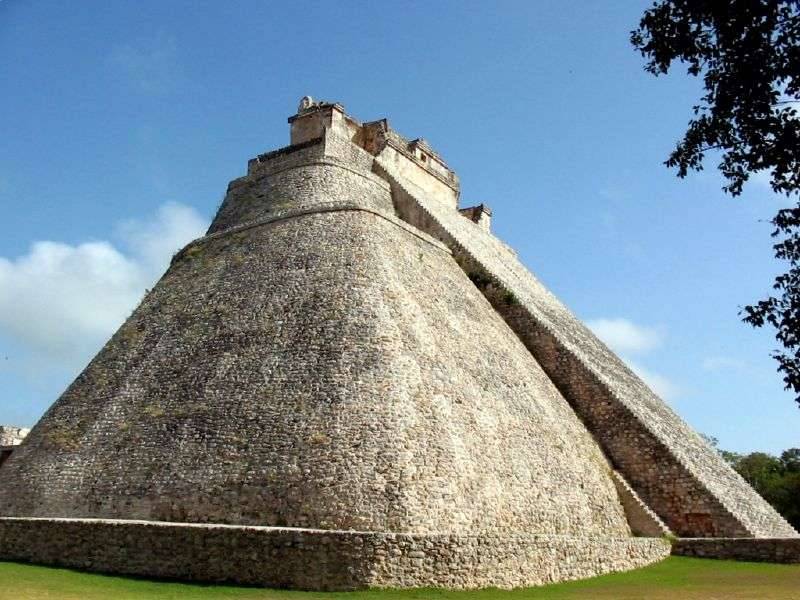
| San Jose Mogote San Jose Mogote, located in the Valley of Oaxaca, Mexico, is one of the earliest and most significant pre-Columbian settlements in the region. Key features include early examples of Zapotec architecture, public buildings, and a ball court, marking it as a major center of early Zapotec culture. Period: Occupied from the Early Formative period (circa 1500 BC) to the Classic period (circa AD 250). | Toniná Toniná, located in the Chiapas highlands of Mexico, is a significant ancient Maya city known for its impressive acropolis and monumental art. Key features include a large pyramid, intricate stucco sculptures, and a series of terraced structures that rise steeply above the surrounding landscape. Period: Occupied primarily during the Late Classic period (circa AD 600 to 900). |
| Tulum Tulum, located on the eastern coast of the Yucatán Peninsula in Mexico, is a well-preserved ancient Maya city known for its coastal setting and defensive walls. Key features include El Castillo, the Temple of the Frescoes, and the Temple of the Descending God, highlighting its role as a significant trading and ceremonial center. Period: Occupied primarily during the Postclassic period (circa AD 1200 to 1521). | Huapalcalco Huapalcalco, located in the state of Hidalgo, Mexico, is an archaeological site associated with the Toltec civilization. Key features include pyramid structures, a ball court, and residential areas, reflecting its role as an important regional center. Period: Occupied primarily during the Early Postclassic period (circa AD 900 to 1200). |
| Angamuco – lost pyramid city Angamuco, located in the state of Michoacán, Mexico, is a recently discovered ancient Purépecha city known for its extensive ruins and pyramid structures. Key features include numerous pyramids, terraces, and residential complexes, indicating a highly developed urban center. Period: Occupied primarily during the Late Postclassic period (circa AD 1000 to 1520). | La Venta La Venta, located in the state of Tabasco, Mexico, is a major Olmec archaeological site known for its colossal heads and ceremonial complex. Key features include the Great Pyramid, large stone sculptures, and a complex layout that reflects the site’s significance as a center of Olmec culture and religion. Period: Occupied primarily during the Middle Formative period (circa 900 to 400 BC). |
| La Quemada La Quemada, located in the state of Zacatecas, Mexico, is an ancient Mesoamerican archaeological site known for its massive stone structures and defensive fortifications. Key features include the Votive Pyramid, large terraced platforms, and a network of defensive walls and towers, reflecting its significance as a regional center. Period: Occupied primarily during the Epiclassic period (circa AD 600 to 900). | Comalcalco Comalcalco, located in the state of Tabasco, Mexico, is a notable Maya archaeological site unique for its brick construction. Key features include large pyramids, the Great Acropolis, and residential structures built from fired bricks and mortar, showcasing a distinctive architectural style among Maya cities. Period: Occupied primarily during the Late Classic period (circa AD 700 to 900). |
| El Cerrito El Cerrito, located in the state of Querétaro, Mexico, is an important pre-Columbian archaeological site associated with the Toltec civilization. Key features include a large pyramid base, terraces, and a series of ceremonial and residential structures, indicating its role as a significant religious and administrative center. Period: Occupied primarily during the Epiclassic to Early Postclassic periods (circa AD 600 to 1200). | Teotihuacan Teotihuacan, located in the Basin of Mexico, is one of the most famous and largest ancient Mesoamerican cities. Key features include the Pyramid of the Sun, the Pyramid of the Moon, the Avenue of the Dead, and the Temple of the Feathered Serpent, reflecting its importance as a major cultural, religious, and political center. Period: Occupied from the Late Preclassic to the Early Classic periods (circa 100 BC to AD 650). |
| Mayapan Mayapan, located in the Yucatán Peninsula, Mexico, is an important post-Classical Maya city known for its defensive walls and dense urban layout. Key features include the main pyramid, the Temple of Kukulkan, and numerous residential and administrative buildings, representing the last great Maya city before the Spanish conquest. Period: Occupied primarily during the Postclassic period (circa AD 1200 to 1440). | Great Pyramid of Cholula The Great Pyramid of Cholula, located in the state of Puebla, Mexico, is the largest pyramid in the world by volume. Key features include its massive base, which measures 450 by 450 meters (1,480 by 1,480 feet), and its multiple construction phases that resulted in a complex structure with a central pyramid and surrounding buildings. It served as a major religious and cultural center. Period: Constructed starting in the Preclassic period (circa 3rd century BC) and expanded through the Postclassic period (circa AD 900 to 1500). |
| Moral Reforma Moral Reforma, located in the state of Tabasco, Mexico, is an ancient Maya site known for its impressive pyramids and stelae. Key features include large ceremonial platforms, pyramid structures, and intricately carved stelae depicting Maya rulers, reflecting its importance as a regional political and ceremonial center. Period: Occupied primarily during the Late Classic period (circa AD 600 to 900). | Coba Coba, located in the state of Quintana Roo, Mexico, is an extensive ancient Maya city known for its large network of causeways, or sacbeob. Key features include the Nohoch Mul pyramid, one of the tallest in the Yucatán Peninsula, and numerous stelae and structures spread across the site, indicating its significant urban and political role. Period: Occupied from the Late Preclassic to the Postclassic periods (circa AD 100 to 1550). |
| Palenque Palenque, located in the state of Chiapas, Mexico, is one of the most famous Maya archaeological sites, known for its architectural and artistic achievements. Key features include the Temple of the Inscriptions, the Palace, and the Temple of the Cross Complex, showcasing exquisite stucco carvings, hieroglyphic inscriptions, and sophisticated construction techniques. Period: Occupied primarily during the Late Classic period (circa AD 600 to 750). | Chacchoben Chacchoben, located in the state of Quintana Roo, Mexico, is an ancient Maya site known for its large pyramidal structures and residential complexes. Key features include several restored pyramids and plazas, which indicate its role as a significant regional center. Period: Occupied primarily during the Late Preclassic to the Early Classic periods (circa AD 200 to 700). |
| Chichen Itza Chichen Itza, located in the state of Yucatán, Mexico, is one of the most famous and well-preserved ancient Maya cities. Key features include the Temple of Kukulkan (El Castillo), the Great Ball Court, the Temple of the Warriors, and the observatory known as El Caracol, reflecting its significance as a major political, economic, and ceremonial center. Period: Occupied from the Late Classic to the Early Postclassic periods (circa AD 600 to 1200). | Monte Alban Monte Alban, located in the state of Oaxaca, Mexico, is one of the earliest and most important Mesoamerican cities, associated with the Zapotec civilization. Key features include large terraced platforms, the Great Plaza, numerous pyramids, tombs, and carved stelae, reflecting its role as a major political and ceremonial center. Period: Occupied from the Preclassic to the Late Classic periods (circa 500 BC to AD 850). |
| Calakmul Calakmul, located in the state of Campeche, Mexico, is an ancient Maya city known for its vast size and numerous monumental structures. Key features include two massive pyramids (Structures I and II), an extensive network of plazas and causeways, and numerous stelae depicting rulers and historical events, indicating its significance as a major political and ceremonial center. Period: Occupied from the Late Preclassic to the Terminal Classic periods (circa 300 BC to AD 900). | Cuyuxquihui Cuyuxquihui, located in the state of Veracruz, Mexico, is an ancient Totonac archaeological site known for its well-preserved pyramidal structures and defensive fortifications. Key features include several pyramids, plazas, and a unique defensive wall, reflecting its importance as a regional administrative and ceremonial center. Period: Occupied primarily during the Classic period (circa AD 600 to 900). |
| El Tajín El Tajín, located in the state of Veracruz, Mexico, is a pre-Columbian archaeological site known for its distinctive architectural style and intricate relief carvings. Key features include the Pyramid of the Niches, numerous ball courts, and a variety of temples and palaces, indicating its role as a major political and religious center. Period: Occupied from the Classic to the Early Postclassic periods (circa AD 600 to 1200). | Izamal Izamal, located in the state of Yucatán, Mexico, is an ancient Maya city known for its large ceremonial platforms and extensive colonial architecture. Key features include the massive Kinich Kak Moo pyramid, large plazas, and the Franciscan monastery built atop ancient Maya structures, reflecting its continued importance through the Spanish colonial period. Period: Occupied from the Late Preclassic to the Postclassic periods (circa 750 BC to AD 1500). |
| Uxmal Uxmal, located in the state of Yucatán, Mexico, is a significant ancient Maya city known for its elaborate Puuc architectural style. Key features include the Pyramid of the Magician, the Nunnery Quadrangle, the Governor’s Palace, and the Great Pyramid, showcasing intricate stone carvings and complex construction techniques. Period: Occupied primarily during the Late Classic to the Terminal Classic periods (circa AD 600 to 1000). | Yaxchilan Yaxchilan, located on the banks of the Usumacinta River in the state of Chiapas, Mexico, is an ancient Maya city known for its impressive architecture and detailed sculptural art. Key features include the Great Acropolis, the Temple of the Red Hands, and numerous stelae and lintels depicting dynastic history and ritual scenes. Period: Occupied from the Late Preclassic to the Terminal Classic periods (circa 300 BC to AD 900). |
| Tulum Tulum, located on the eastern coast of the Yucatán Peninsula in Mexico, is an ancient Maya city known for its stunning coastal views and defensive walls. Key features include El Castillo (the Castle), the Temple of the Frescoes, and the Temple of the Descending God, which highlight its role as a major trading port and ceremonial center. Period: Occupied primarily during the Postclassic period (circa AD 1200 to 1521). | Bonampak Bonampak, located in the state of Chiapas, Mexico, is renowned for its well-preserved murals that provide vivid insights into ancient Maya culture. Key features include the Temple of the Murals, which houses detailed frescoes depicting courtly life, warfare, and ritual ceremonies, reflecting the city’s cultural and political significance. Period: Occupied primarily during the Late Classic period (circa AD 580 to 800). |
| Santa Cecilia Acatitlan Santa Cecilia Acatitlan, located in the state of Mexico, is an archaeological site associated with the Aztec civilization. Key features include a reconstructed pyramid and a temple platform, which provide insights into Aztec architectural styles and religious practices. Period: Occupied primarily during the Postclassic period (circa AD 1200 to 1521). | Los Guachimontones Los Guachimontones, located in the state of Jalisco, Mexico, is an archaeological site known for its unique circular stepped pyramids. Key features include the concentric circles of pyramids, plazas, and terraces, which reflect the distinctive architectural style of the Teuchitlan tradition. Period: Occupied from the Late Formative to the Early Classic periods (circa 300 BC to AD 900). |
| Tenayuca Tenayuca, located in the state of Mexico, is an important pre-Columbian archaeological site associated with the Chichimeca and Aztec cultures. Key features include a large pyramid with dual temples dedicated to Tlaloc and Huitzilopochtli, reflecting its religious significance. Period: Occupied from the Late Postclassic period (circa AD 1200 to 1500). | Cuicuilco Pyramid The Cuicuilco Pyramid, located in the southern part of modern-day Mexico City, is one of the oldest pyramid structures in Mesoamerica. Key features include its circular shape and construction from volcanic stone, indicative of early monumental architecture in the region. The site provides valuable insights into early urbanization and religious practices. Period: Occupied primarily from the Late Preclassic period (circa 800 BC to AD 150). |
| El Tepozteco El Tepozteco, located in the state of Morelos, Mexico, is an archaeological site known for its temple dedicated to the Aztec god Tepoztecatl. Key features include the small pyramid temple perched on a hill, offering panoramic views of the surrounding valley, indicating its religious and strategic significance. Period: Occupied primarily during the Postclassic period (circa AD 1200 to 1521). | Templo mayor Templo Mayor, located in the heart of Mexico City, Mexico, is the main temple of the Aztec capital Tenochtitlán. Key features include its twin temples dedicated to Huitzilopochtli, the god of war, and Tlaloc, the god of rain, reflecting the religious and political center of the Aztec Empire. Period: Constructed in several phases from the 14th to the early 16th centuries AD (circa AD 1325 to 1521). |
| Xochicalco Xochicalco, located in the state of Morelos, Mexico, is a pre-Columbian archaeological site known for its impressive hilltop fortress and astronomical observatories. Key features include the Pyramid of the Feathered Serpent, ball courts, and cave systems, indicating its role as a major ceremonial and administrative center. Period: Occupied primarily during the Epiclassic period (circa AD 650 to 900). | Tlatelolco Tlatelolco, located in modern-day Mexico City, Mexico, was a significant pre-Columbian city-state and market center. Key features include the Tlatelolco Plaza, the Temple of the Calendar, and the remains of multiple structures that highlight its economic and religious importance within the Aztec Empire. Period: Occupied from the 14th century AD until its conquest by the Spanish in AD 1521. |
| Xochitecatl Xochitecatl, located in the state of Tlaxcala, Mexico, is an ancient ceremonial center known for its large pyramids and fertility-related rituals. Key features include the Pyramid of Flowers, the Serpent Building, and other monumental structures that reflect its religious significance. Period: Occupied from the Middle Preclassic to the Late Classic periods (circa 800 BC to AD 900). | Dzibanche Dzibanche, located in the state of Quintana Roo, Mexico, is a significant ancient Maya city known for its large pyramids and extensive urban layout. Key features include the Temple of the Owl, the Temple of the Cormorants, and the Temple of the Captives, indicating its importance as a political and ceremonial center. Period: Occupied from the Early Classic to the Late Classic periods (circa AD 200 to 900). |
| Tzintzuntzan Tzintzuntzan, located in the state of Michoacán, Mexico, was the capital of the Purépecha Empire. Key features include the distinctive yácatas, which are terraced pyramidal structures, reflecting the city’s importance as a political and ceremonial center. Period: Occupied from the Postclassic period (circa AD 1200 to 1521). | Yohualichan Yohualichan, located in the state of Puebla, Mexico, is an ancient Totonac site known for its similarity to El Tajín. Key features include several pyramidal structures with niches, ball courts, and plazas, indicating its role as a significant regional center. Period: Occupied from the Classic period (circa AD 600 to 900). |
| Chunyaxche (Muyil) Chunyaxche, also known as Muyil, is located in the state of Quintana Roo, Mexico, near the Sian Ka’an Biosphere Reserve. Key features include the Castillo, a prominent pyramid, and a series of other structures connected by sacbeob (white roads), reflecting its role as an important trade and ceremonial site. Period: Occupied from the Late Preclassic to the Postclassic periods (circa 300 BC to AD 1500). | Cuauhtinchan Cuauhtinchan, located in the state of Puebla, Mexico, is an ancient site with significant historical and cultural importance. Key features include various pyramidal structures, ceremonial platforms, and artifacts that provide insights into the region’s pre-Columbian history. Period: Occupied primarily during the Postclassic period (circa AD 900 to 1521). |
| Cempoala Cempoala, located in the state of Veracruz, Mexico, was a major Totonac city known for its large stone structures and close interaction with the Spanish during the conquest. Key features include the Great Pyramid, the Temple of the Chimneys, and the Temple of the Caritas, highlighting its significance as a political and ceremonial center. Period: Occupied from the Late Postclassic period (circa AD 1200 to 1521). | Ixtlán del Rio Ixtlán del Rio, located in the state of Nayarit, Mexico, is an important archaeological site associated with the Aztatlán culture. Key features include several circular pyramids, plazas, and a ball court, reflecting its role as a significant ceremonial and residential center. Period: Occupied from the Late Classic to the Early Postclassic periods (circa AD 600 to 900). |
| Pahñú Pahñú, located in the state of Hidalgo, Mexico, is an ancient Otomi site known for its pyramidal structures and ceremonial platforms. Key features include a main pyramid, several smaller structures, and extensive terraces, indicating its role as a religious and cultural center. Period: Occupied primarily during the Epiclassic period (circa AD 600 to 900). | Cantona Cantona, located in the state of Puebla, Mexico, is one of the largest and most complex pre-Columbian archaeological sites in Mesoamerica. Key features include a network of roads, over 20 ball courts, and numerous pyramids and residential areas, reflecting its extensive urban planning and significance as a regional power. Period: Occupied from the Late Preclassic to the Early Postclassic periods (circa 100 AD to 1000 AD). |
| Laguna de los Cerros Laguna de los Cerros, located in the state of Veracruz, Mexico, is an ancient Olmec site known for its large earthen mounds and ceremonial structures. Key features include numerous pyramid-shaped mounds and plazas, reflecting its significance as a major Olmec political and religious center. Period: Occupied from the Early Formative to the Late Formative periods (circa 1500 BC to 400 BC). | Cañada de la Virgen Cañada de la Virgen, located in the state of Guanajuato, Mexico, is a pre-Columbian site associated with the Otomi or Toltec cultures. Key features include a large pyramid known as the House of the Thirteen Heavens, ceremonial platforms, and a complex of plazas and buildings aligned with celestial events, indicating its role as an astronomical and ceremonial center. Period: Occupied from the Late Classic to the Early Postclassic periods (circa AD 600 to 1050). |
| Teopanzolco Teopanzolco, located in Cuernavaca, Morelos, Mexico, is an archaeological site associated with the Tlahuica culture and later the Aztecs. Key features include the main pyramid, which has twin temples dedicated to Tlaloc and Huitzilopochtli, similar to the Templo Mayor in Tenochtitlán, reflecting its religious significance. Period: Occupied from the Late Postclassic period (circa AD 1200 to 1521). | Tamtoc Tamtoc, located in the state of San Luis Potosí, Mexico, is an ancient Huastec city known for its complex urban layout and ceremonial structures. Key features include large plazas, pyramid-shaped mounds, and a series of carved monoliths and stelae, indicating its importance as a political and ceremonial center. Period: Occupied from the Late Preclassic to the Postclassic periods (circa 600 BC to AD 1000). |
| Acozac Acozac, located in the state of Hidalgo, Mexico, is a lesser-known archaeological site with evidence of pre-Columbian occupation. Key features include pyramid bases, ceremonial platforms, and residential structures, reflecting its role as a local ceremonial and habitation site. Period: Occupied from the Classic to the Postclassic periods (circa AD 200 to 900). | Chimalhuacán Chimalhuacán, located in the state of Mexico, is an archaeological site associated with the pre-Columbian cultures of the Basin of Mexico. Key features include pyramid bases, plazas, and residential areas, reflecting its role as a significant regional center in the pre-Columbian era. Period: Occupied from the Late Formative to the Late Postclassic periods (circa 600 BC to AD 1521). |
| Oxkintok Oxkintok, located in the state of Yucatán, Mexico, is an ancient Maya city known for its long occupation and complex architecture. Key features include the Tzat Tun Tzat (Labyrinth), a multi-level building with intricate passageways, and various pyramid structures and plazas, indicating its significance as a major ceremonial and residential center. Period: Occupied from the Late Preclassic to the Late Classic periods (circa 600 BC to AD 1000). | Ocomtún – Lost Maya City Ocomtún, located in the state of Campeche, Mexico, is a recently discovered Maya city in the dense jungle. Key features include several large pyramid structures, extensive plazas, and other ceremonial buildings, indicating its importance as a significant, though largely unexplored, Maya urban center. Period: Likely occupied from the Late Preclassic to the Late Classic periods (circa 600 BC to AD 900). |
| Edzna Edzna, located in the state of Campeche, Mexico, is a significant Maya site known for its well-preserved structures and hydraulic systems. Key features include the Great Acropolis, the Pyramid of the Five Floors, and an extensive network of canals and reservoirs, reflecting its role as a major political and ceremonial center. Period: Occupied from the Late Preclassic to the Postclassic periods (circa 400 BC to AD 1500). | Dzibilchaltun Dzibilchaltun, located in the state of Yucatán, Mexico, is an ancient Maya city known for its long history and the famous Temple of the Seven Dolls. Key features include the central plaza, sacbeob (white roads), and cenote Xlakah, reflecting its importance as a significant residential and ceremonial center. Period: Occupied from the Middle Preclassic to the Postclassic periods (circa 1000 BC to AD 1500). |
| Becan Becan, located in the state of Campeche, Mexico, is an ancient Maya city known for its defensive moat and extensive architecture. Key features include large pyramids, plazas, and residential complexes, with a prominent moat that encircles the main part of the city, indicating its role as a fortified political and ceremonial center. Period: Occupied from the Late Preclassic to the Terminal Classic periods (circa 300 BC to AD 900). | Calixtlahuaca Calixtlahuaca, located in the state of Mexico, is an archaeological site associated with the Matlatzinca culture and later the Aztecs. Key features include a circular temple dedicated to Ehecatl (the wind god), pyramids, and residential structures, reflecting its role as an important regional center. Period: Occupied from the Postclassic period (circa AD 1100 to 1521). |
| Castillo de Teayo Castillo de Teayo, located in the state of Veracruz, Mexico, is an ancient site with a large pyramid-temple structure. Key features include the main pyramid, various sculptures, and stone carvings, indicating its importance as a ceremonial center for the Huastec culture. Period: Occupied from the Postclassic period (circa AD 900 to 1521). | El Teúl El Teúl, located in the state of Zacatecas, Mexico, is an archaeological site associated with the pre-Columbian cultures of the region, including the Caxcan and Zacateco. Key features include pyramid structures, ball courts, and residential areas, reflecting its significance as a regional political and ceremonial center. Period: Occupied from the Late Preclassic to the Postclassic periods (circa 400 BC to AD 1521). |
| Huamuxtitlán Pyramid Huamuxtitlán Pyramid, located in the state of Guerrero, Mexico, is an ancient site with a distinctive pyramid structure. Key features include its large pyramid base and terraced design, reflecting its significance as a ceremonial center for the Mixtec civilization. Period: Occupied from the Postclassic period (circa AD 900 to 1521). | Acanceh Acanceh, located in the state of Yucatán, Mexico, is an ancient Maya city known for its impressive architecture and stucco masks. Key features include the Pyramid of the Stuccoes and the Palace of the Stuccoes, which display intricate carvings and sculptures, indicating its importance as a religious and ceremonial center. Period: Occupied from the Late Preclassic to the Early Classic periods (circa 300 BC to AD 600). |
| Huatusco Pyramid Huatusco Pyramid, located in the state of Veracruz, Mexico, is an ancient Totonac site featuring a large pyramidal structure. Key features include its stepped design and stone construction, reflecting its role as a significant ceremonial and possibly administrative center. Period: Occupied from the Classic to the Postclassic periods (circa AD 300 to 900). | Rio Bec Rio Bec, located in the state of Campeche, Mexico, is an ancient Maya site known for its unique architectural style. Key features include twin-towered structures with steep, false staircases and elaborate facades, reflecting its significance as a regional center of the Rio Bec architectural style. Period: Occupied primarily during the Late Classic period (circa AD 600 to 900). |
| La Joya La Joya, located in the state of Veracruz, Mexico, is an ancient Totonac site characterized by its pyramid and plaza complexes. Key features include the main pyramid and associated structures, which provide insights into the region’s ceremonial and residential practices. Period: Occupied from the Classic to the Postclassic periods (circa AD 600 to 1200). | Mesa de Cacahuatenco Mesa de Cacahuatenco, located in the state of Veracruz, Mexico, is an archaeological site with significant pre-Columbian ruins. Key features include pyramidal structures and terraced platforms, indicating its role as a ceremonial and residential center. Period: Occupied from the Classic to the Postclassic periods (circa AD 300 to 900). |
| Chunchucmil Chunchucmil, located in the state of Yucatán, Mexico, is an ancient Maya city known for its extensive urban layout and dense population. Key features include numerous residential compounds, marketplaces, and a large central pyramid, reflecting its importance as a major economic and trade center. Period: Occupied from the Late Preclassic to the Early Classic periods (circa 300 BC to AD 600). | Tammapul Tammapul, located in the state of Tamaulipas, Mexico, is an ancient site with pyramid structures and plazas. Key features include a large main pyramid and associated ceremonial buildings, reflecting its significance as a regional religious and administrative center for the Huastec culture. Period: Occupied from the Late Preclassic to the Postclassic periods (circa 600 BC to AD 1200). |
| Tingambato Tingambato, located in the state of Michoacán, Mexico, is an ancient pre-Columbian site associated with the Purépecha culture. Key features include a large pyramid, ball court, and ceremonial platforms, reflecting its significance as a regional ceremonial and administrative center. Period: Occupied from the Late Preclassic to the Early Classic periods (circa AD 450 to 600). | Xihuacan Xihuacan, located in the state of Guerrero, Mexico, is an ancient Mesoamerican archaeological site known for its pyramid structures and ball courts. Key features include the main pyramid, a large ball court, and various stelae, indicating its importance as a major regional center. Period: Occupied from the Late Preclassic to the Postclassic periods (circa 200 BC to AD 1400). |
| Peralta Peralta, located in the state of Guanajuato, Mexico, is an ancient pre-Columbian site known for its pyramid complexes and sunken plazas. Key features include large pyramids with terraced platforms and residential areas, reflecting its role as a significant ceremonial and residential center in the region. Period: Occupied from the Late Preclassic to the Classic periods (circa 300 BC to AD 900). | La Campana La Campana, located in the state of Colima, Mexico, is an archaeological site associated with the shaft tomb tradition. Key features include large platform mounds, residential structures, and intricate tombs, reflecting its importance as a ceremonial and residential center. Period: Occupied from the Late Preclassic to the Classic periods (circa 200 BC to AD 600). |
| El Chanal El Chanal, located in the state of Colima, Mexico, is an ancient site known for its ceremonial complexes and residential areas. Key features include pyramid structures, ball courts, and plazas, indicating its role as a significant religious and administrative center in the region. Period: Occupied from the Late Preclassic to the Classic periods (circa AD 1100 to 1400). | Aké Aké, located in the state of Yucatán, Mexico, is an ancient Maya site known for its monumental architecture. Key features include a large pyramid with a wide staircase, extensive columned halls, and residential structures, reflecting its significance as a major ceremonial center. Period: Occupied from the Late Preclassic to the Early Postclassic periods (circa 300 BC to AD 1100). |
| Teotenango Teotenango, located in the state of Mexico, Mexico, is an ancient pre-Columbian site known for its defensive walls and extensive urban layout. Key features include large pyramids, plazas, ball courts, and residential complexes, indicating its role as a major political, ceremonial, and residential center. Period: Occupied from the Late Preclassic to the Postclassic periods (circa AD 650 to 1150). | El Cuajilote El Cuajilote, located in the state of Veracruz, Mexico, is an archaeological site associated with the Totonac culture. Key features include pyramid structures, plazas, and numerous carved stone monuments, reflecting its importance as a ceremonial and residential center. Period: Occupied from the Classic to the Postclassic periods (circa AD 600 to 1200). |
| Izapa Izapa, located in the state of Chiapas, Mexico, is an ancient Mesoamerican site known for its large collection of stone stelae and altars. Key features include numerous carved monuments depicting mythological and historical scenes, along with pyramidal structures and plazas, indicating its role as a major ceremonial center. Period: Occupied from the Late Preclassic to the Early Classic periods (circa 1500 BC to AD 300). | Ihuatzio Ihuatzio, located in the state of Michoacán, Mexico, is an important archaeological site of the Purépecha Empire. Key features include large pyramid structures, terraces, and ceremonial platforms, reflecting its significance as a political and ceremonial center. Period: Occupied from the Postclassic period (circa AD 1200 to 1521). |
| Pomona Pomona, located in the state of Tabasco, Mexico, is an ancient Maya city known for its well-preserved stelae and hieroglyphic inscriptions. Key features include pyramid structures, plazas, and a ball court, indicating its role as a significant regional center. Period: Occupied primarily during the Late Classic period (circa AD 600 to 800). | Cerro del Judío (Mazatepetl) Cerro del Judío, also known as Mazatepetl, located in the state of Mexico, is an ancient pre-Columbian site known for its pyramidal structures and ceremonial platforms. Key features include a large pyramid, terraces, and residential areas, indicating its role as a ceremonial and defensive site. Period: Occupied from the Late Preclassic to the Classic periods (circa 600 BC to AD 900). |
| Zirahuato Pyramids Zirahuato Pyramids, located in the state of Guerrero, Mexico, are ancient structures associated with the Mezcala culture. Key features include a series of pyramids and terraces built on a hillside, reflecting their ceremonial significance. Period: Occupied from the Late Preclassic to the Classic periods (circa 200 BC to AD 900). | Malinalco archeological site Malinalco, located in the state of Mexico, is known for its unique cliffside temple complex. Key features include the Temple of the Eagles and Jaguars, carved directly into the hillside, along with other ceremonial structures and residential areas, indicating its role as a major Aztec ceremonial and military center. Period: Occupied from the Postclassic period (circa AD 1100 to 1521). |
| Zona arqueológica de Paxil (Misantla) Zona Arqueológica de Paxil, located in the state of Veracruz, Mexico, is an ancient Totonac site. Key features include pyramid structures, plazas, and ball courts, reflecting its significance as a regional ceremonial and residential center. Period: Occupied from the Classic to the Postclassic periods (circa AD 600 to 1200). | Ancanceh Acanceh, located in the state of Yucatán, Mexico, is an ancient Maya site known for its impressive architecture and stucco masks. Key features include the Pyramid of the Stuccoes and the Palace of the Stuccoes, which display intricate carvings and sculptures, indicating its importance as a religious and ceremonial center. Period: Occupied from the Late Preclassic to the Early Classic periods (circa 300 BC to AD 600). |
| Xcaret Xcaret, located in the state of Quintana Roo, Mexico, is an ancient Maya archaeological site known for its coastal location and diverse structures. Key features include pyramidal temples, plazas, residential areas, and a network of cenotes and underground rivers, reflecting its significance as a trading port and ceremonial center. Period: Occupied from the Late Preclassic to the Postclassic periods (circa 300 BC to AD 1500). | Tenam Puente Tenam Puente, located in the state of Chiapas, Mexico, is an ancient Maya site known for its strategic hilltop location and defensive structures. Key features include large terraced platforms, pyramidal structures, and a ball court, indicating its role as a political and military center. Period: Occupied primarily during the Late Classic period (circa AD 600 to 900). |
| Xcambo Xcambó, located in the state of Yucatán, Mexico, is an ancient Maya site known for its proximity to the Gulf coast and salt production. Key features include pyramidal structures, plazas, and residential areas, reflecting its role as a significant trade and production center, particularly for salt. Period: Occupied from the Early Classic to the Postclassic periods (circa AD 300 to 1100). |
Are there pyramids in Ecuador?
Yes. The Pyramids of Cochasqui are located in the Andes Mountains of Ecuador, about 52 kilometers north of Quito. This archaeological site consists of 15 pyramids and 21 funerary mounds, dating back to the Quitu-Cara culture, which thrived between 500 and 1500 AD. The site is notable for its unique pyramidal structures made from earth and volcanic stone.
Are there pyramids in Peru?
Yes. There are 13 ancient sites in Peru which have pyramids, with a total of at least 68 pyramids among them. With new pyramids being discovered all the time, it’s worth checking back from time to time to see if this number changes.
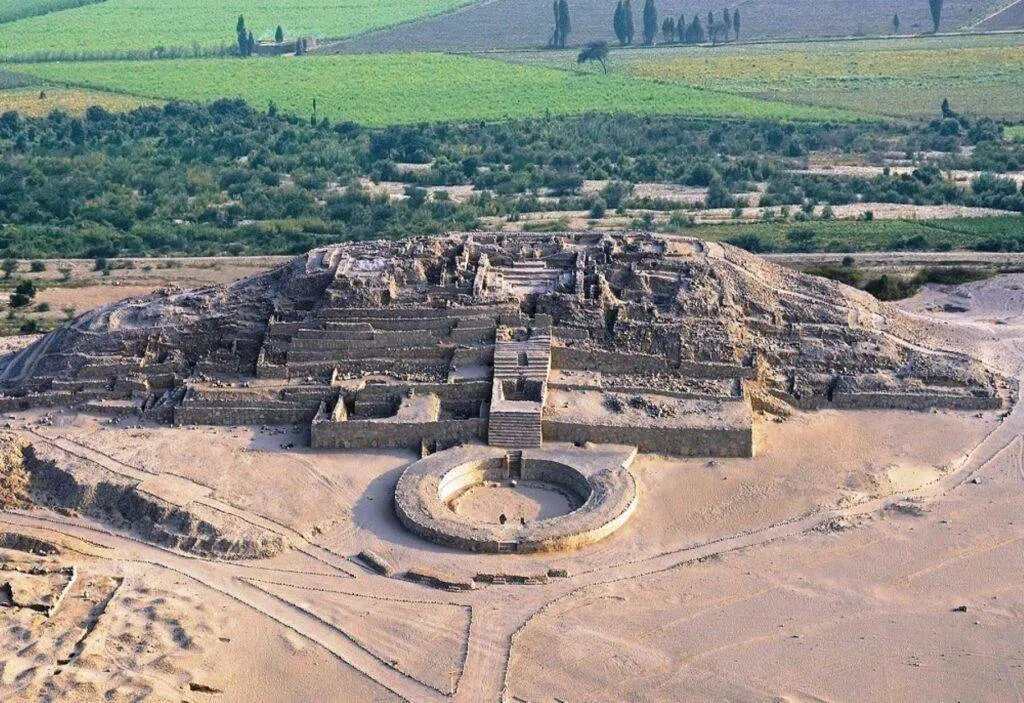
| Pachacamac Pachacamac, located near Lima, Peru, is an ancient archaeological site that served as a major religious center for several pre-Columbian cultures, including the Lima, Wari, and Inca. Key features include the Temple of the Sun, the Temple of Pachacamac, and various other pyramidal structures and plazas, reflecting its importance as a pilgrimage site. Period: Occupied from the Early Intermediate Period to the Late Horizon (circa AD 200 to 1533). | Huaca Huallamarca Huaca Huallamarca, located in the district of San Isidro in Lima, Peru, is an ancient adobe pyramid. Key features include its stepped pyramid structure, originally used for ceremonial and burial purposes, and the museum on-site that displays artifacts uncovered during excavations. Period: Occupied from the Early Intermediate Period to the Middle Horizon (circa AD 200 to 800). |
| Caral – Pyramid city Caral, located in the Supe Valley, Peru, is one of the oldest known cities in the Americas. Key features include large pyramidal structures, plazas, and residential complexes, demonstrating advanced urban planning and architectural skills, reflecting its role as a significant urban center in ancient Peru. Period: Occupied from the Late Archaic period (circa 3000 to 1800 BC). | Tucume Pyramids Túcume, located in the Lambayeque region of Peru, is an archaeological site known for its numerous adobe pyramids. Key features include the Huaca Larga, one of the largest pyramids, and other significant structures, reflecting its role as a major cultural and ceremonial center for the Lambayeque and Chimú cultures. Period: Occupied from the Late Intermediate Period to the Late Horizon (circa AD 1000 to 1500). |
| Huaca del Sol Huaca del Sol, located in the Moche Valley near Trujillo, Peru, is a large adobe pyramid built by the Moche civilization. Key features include its massive size, terraced construction, and use as a political and ceremonial center. The pyramid is heavily eroded but remains an important archaeological site. Period: Constructed during the Early Intermediate Period (circa AD 100 to 800). | La Huaca de la Luna Huaca de la Luna, also located in the Moche Valley near Trujillo, Peru, is another major Moche pyramid. Key features include its intricate murals depicting deities and ritual scenes, multiple platforms and courtyards, and its use as a religious and ceremonial center. Period: Constructed during the Early Intermediate Period (circa AD 100 to 800). |
| Mateo Salado archaeological complex The Mateo Salado Archaeological Complex, located in Lima, Peru, comprises five pyramidal structures. Key features include the main pyramid, various ceremonial and administrative buildings, and extensive plazas, reflecting its significance during the Late Intermediate Period. Period: Occupied during the Late Intermediate Period (circa AD 1100 to 1450). | Huaca Pucllana Huaca Pucllana, located in the Miraflores district of Lima, Peru, is a large adobe pyramid built by the Lima culture. Key features include its stepped pyramid structure, plazas, and various tombs, indicating its role as a ceremonial and administrative center. Period: Occupied from the Early Intermediate Period to the Middle Horizon (circa AD 200 to 700). |
| Chavín de Huántar Chavín de Huántar, located in the Ancash region of Peru, is an important archaeological site associated with the Chavín culture. Key features include the flat-topped pyramid known as the Castillo, intricate stone carvings, and subterranean galleries, reflecting its significance as a religious and ceremonial center. Period: Occupied from the Early Horizon period (circa 900 to 200 BC). | Bandurria Bandurria, located in the Huaura Valley of Peru, is an ancient coastal site known for its large pyramidal structures and residential areas. Key features include pyramid-shaped mounds, plazas, and evidence of early urban planning, indicating its importance as a preceramic ceremonial center. Period: Occupied from the Late Archaic period (circa 4000 to 2000 BC). |
| Batán Grande Batán Grande, located in the Lambayeque region of Peru, is an extensive archaeological complex with numerous pyramidal structures. Key features include over 50 identified pyramids, large adobe platforms, and tombs, reflecting its role as a major ceremonial and burial site for the Sicán culture. Period: Occupied from the Middle Horizon to the Late Intermediate period (circa AD 800 to 1375). | Huaca El Paraíso Huaca El Paraíso, located in the Chillón Valley near Lima, Peru, is one of the oldest known monumental sites in Peru. Key features include large adobe pyramids and rectangular platforms, indicating its significance as a ceremonial center during the preceramic period. Period: Occupied from the Late Archaic period (circa 3500 to 1800 BC). |
| Chotuna-Chornancap Chotuna-Chornancap, located near the city of Chiclayo in the Lambayeque region of Peru, consists of two large truncated pyramids. Key features include pyramid platforms, burial sites, and elaborate tombs, reflecting the site’s importance as a ceremonial and administrative center for the Lambayeque culture. Period: Occupied from the Middle Horizon to the Late Intermediate period (circa AD 800 to 1375). |
Akapana Pyramid, located in the ancient city of Tiwanaku in western Bolivia, is a significant pre-Columbian structure known for its massive size and complex construction. Key features include a stepped platform with a flat summit, intricately designed drainage systems, and impressive stonework, reflecting the advanced engineering skills of the Tiwanaku civilization.
Period: Primarily during the Middle Horizon period (circa AD 500 to 1000).
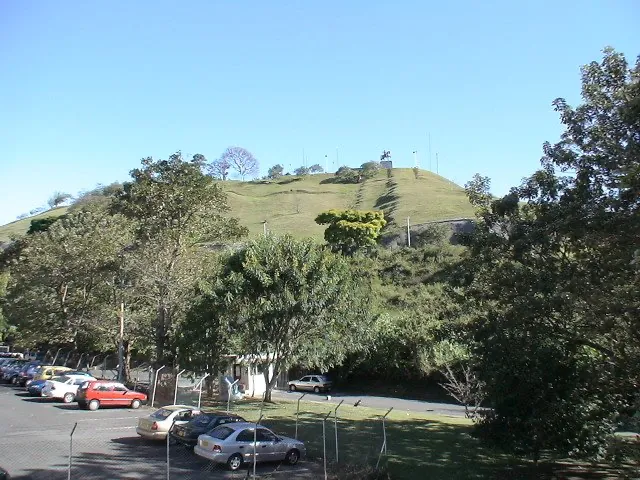
El Morro del Tulcán is an ancient earthen pyramid, which was mistaken for a mountain for a long time. Radiocarbon dating places the mound’s construction between 500 and 1600 AD. Its exact purpose remains a mystery, but several theories prevail.
The Kazakhstan Hexagon Pyramid, also known as the Aktau Pyramid, is a mysterious structure located in the Karaganda region of Kazakhstan. It has sparked interest and debate among archaeologists and historians due to its unique shape and the lack of clear historical records about its purpose and origin. The structure’s hexagonal form sets it apart from other ancient constructions, leading to various theories about its use and significance.
Period: It’s thought to be around 3,400 years old
European Pyramids
The Waldviertel Pyramid, also known as the “Keltenpyramide” or “Keltenwall,” is located in the Waldviertel region of Lower Austria, is a mysterious terraced earthwork structure. Its origins and purpose remain uncertain, with theories ranging from prehistoric to early medieval times.
Are there pyramids in Germany?
Yes, The Karlsruhe Pyramid, but this is not the same as those found in Egypt or Central America. The Pyramid is a mausoleum / memorial for Karlsruhe City Founder – Karl Wilhelm.
The Karlsruhe Pyramid, located in the heart of Karlsruhe, Germany, is a historical monument built between 1823 and 1825 to mark the tomb of the city’s founder, Karl Wilhelm. Made from red sandstone, the pyramid stands as a central feature of the Marktplatz and symbolizes the city’s planned layout.
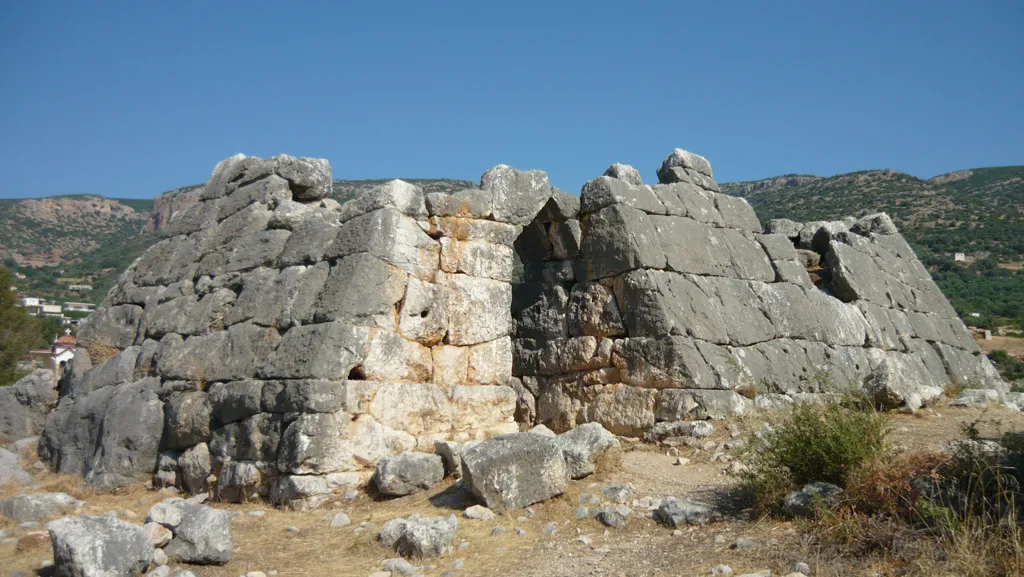
Are there pyramids in Greece?
Yes, there are structures known as the Greek pyramids, although they are not as well-known or as grand as the pyramids of Egypt. The most notable Greek pyramid is the Pyramid of Hellinikon, located in the Argolis region of the Peloponnese, near the village of Elliniko. The Pyramids collectively are known as the Pyramids of Argolis.
Here you can find more information on the Greek Pyramids. Note that some of these structures only have the base remaining.
| Pyramid of Hellinikon The Pyramid of Hellinikon, located near the village of Elliniko in the Argolis region of Greece, is an ancient structure known for its unique pyramid shape and mysterious origins. Key features include its limestone construction and small, enclosed chamber, which has led to various theories about its purpose, ranging from a tomb to a defensive structure. Period: Estimated to date back to the late 4th century BC. | Pyramid of Ligourio The Pyramid of Ligourio, located near the village of Ligourio in the Argolis region of Greece, is an ancient structure notable for its pyramid shape and historical mystery. Key features include its limestone blocks and relatively small size compared to Egyptian pyramids, with debates surrounding its original function, which might have included a tomb, watchtower, or small fort. Period: Estimated to date back to the late 4th century BC. |
| Pyramid of Elliniko The Pyramid of Elliniko, located near the village of Elliniko in the Argolis region of Greece, is an ancient pyramid-shaped structure known for its historical intrigue and unique architecture. Key features include its limestone construction and small, enclosed chamber. The exact purpose of the pyramid remains debated, with theories suggesting it could have been a tomb, a watchtower, or a small fortification. Period: Estimated to date back to the late 4th century BC | Pyramid of Dalamanara The Pyramid of Dalamanara, located near the village of Dalamanara in the Argolis region of Greece, is another ancient pyramid-shaped structure shrouded in mystery. Similar to the Pyramid of Elliniko, it is constructed from local limestone blocks. Theories about its function range from serving as a tomb to a defensive structure or territorial marker. Period: Estimated to date back to the late 4th century BC. |
Are there pyramids in Italy?
es, Italy is home to several ancient pyramids:
- Etruscan Pyramid of Bomarzo: An ancient rock pyramid located in the region of Lazio.
- Monte d’Accoddi: A unique prehistoric ziggurat-like structure in Sardinia, often referred to as a pyramid.
- Pyramid of Cestius: A well-preserved pyramid in Rome, built as a tomb for Gaius Cestius in the 1st century BC.
Additionally, the Piramide Vaticana once existed but was demolished in the 16th century during the construction of St. Peter’s Basilica and Vatican City.

| Etruscan Pyramid of Bomarzo The Etruscan Pyramid of Bomarzo, located near the town of Bomarzo in the Lazio region of Italy, is a unique rock-cut structure attributed to the Etruscan civilization. Key features include its stepped design carved directly into the bedrock and an altar-like platform at the top, suggesting it was used for religious or ceremonial purposes. Period: Estimated to date back to the 7th-6th century BC. | Monte d’Accoddi Monte d’Accoddi, located near Sassari on the island of Sardinia, Italy, is an ancient megalithic structure known for its unique ziggurat-like design. Key features include a large, rectangular stepped platform, an altar, and a ramp leading to the top. The site shows evidence of multiple construction phases. Period: Neolithic period (circa 4th millennium BC) to the Early Bronze Age (circa 1800 BC). |
| The Pyramid of Cestius The Pyramid of Cestius, also known as The Pyramid of Romulus is located in Rome, Italy, is a well-preserved ancient pyramid built as a tomb for the Roman magistrate Gaius Cestius. Key features include its sharp-angled, white marble-clad exterior, standing 27 meters (89 feet) high, and its interior burial chamber decorated with frescoes. Period: Constructed around 18-12 BC. | The Piramide Vaticana The Piramide Vaticana, also known as the Piramide di Borgo, was an ancient Roman pyramid located near the Vatican in Rome, Italy. It was similar in design to the Pyramid of Cestius and served as a prominent landmark. However, it was demolished in the 16th century during the construction of St. Peter’s Basilica and Vatican City. Period: Estimated to have been constructed during the Roman period, around the 1st century BC. |
Does France have Pyramids?
Yes. France has 4 known pyramids. The Falicon pyramid, Pyramide dite La Penelle, Pierre de Couhard, also known as the Couhard Pyramid and the The Parc Monceau Pyramid.
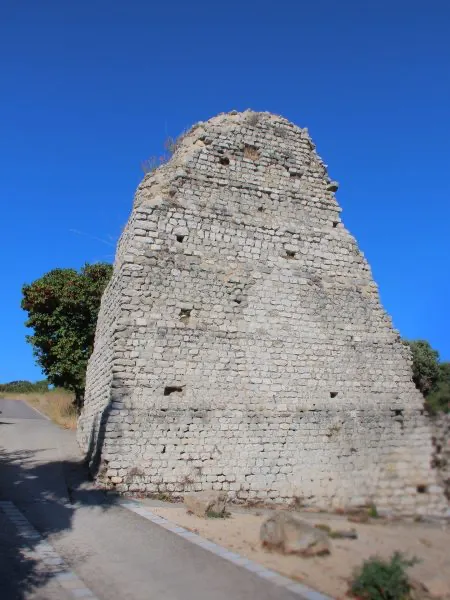
| Falicon pyramid The Falicon Pyramid, located near the village of Falicon in the Alpes-Maritimes department of southeastern France, is an enigmatic structure whose origins and purpose are still debated. Key features include its stone construction and proximity to the Cave of the Bats (Grotte des Ratapignata), suggesting a possible connection to ancient or medieval ceremonial activities. The pyramid’s precise history is unclear, with theories ranging from it being a Roman monument to a more recent 19th-century construction. Period: Uncertain, with estimates ranging from ancient Roman times to the 19th century. | Pyramide dite La Penelle The Pyramide dite La Penelle, located in the Lorraine region of France, is a mysterious pyramid-shaped structure whose origins and purpose are not well-documented. Key features include its conical shape and construction from local stones. It is often associated with local legends and believed to have been used for ancient or medieval ceremonial purposes. Period: The precise period of construction is uncertain, with estimates ranging from ancient times to the medieval period. |
| Pierre de Couhard (Couhard Pyramid) The Pierre de Couhard, also known as the Couhard Pyramid, is an ancient Gallo-Roman pyramid-shaped monument located near Autun in the Burgundy region of France. Key features include its square base and solid stone construction, standing about 33 feet high. It is believed to be a funerary monument, possibly marking the grave of a prominent individual or family. Period: Constructed in the 1st century AD. | The Parc Monceau Pyramid The pyramid in Parc Monceau Pyramid is a small-scale replica inspired by the ancient pyramids of Egypt. It adds a touch of exoticism and historical intrigue to the park. Period: Built in 1778 |
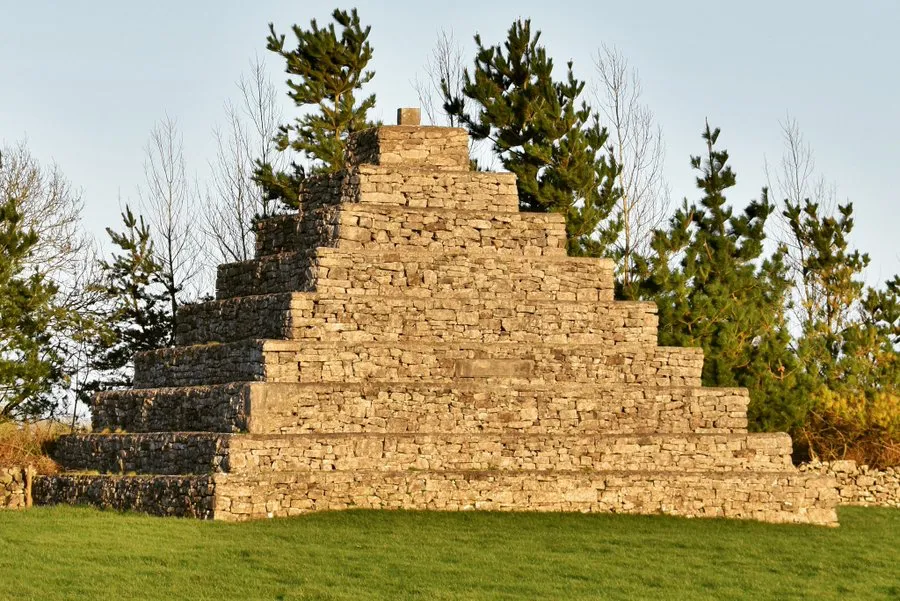
| Pyramid in the Neale The Pyramid in the Neale, located in the village of The Neale in County Mayo, Ireland, is a unique 18th-century pyramid monument. Key features include its stone construction and relatively small size compared to traditional pyramids. It was erected by the local landowner, John Browne, as a decorative folly and as a commemoration of his travels in Egypt. Period: Constructed in the 18th century AD. | The Pyramid of Dublin The Pyramid of Dublin, also known as the “O’Connell Monument,” is an architectural feature located within Glasnevin Cemetery in Dublin. It resembles a small pyramid atop a tall obelisk and serves as a commemorative monument to Daniel O’Connell, a significant Irish political leader. Key features include its granite construction and prominent location within the cemetery. Period: Constructed in 1869 AD. |
| Kinnitty Pyramid The Kinnitty Pyramid, located on the grounds of Kinnitty Castle in County Offaly, Ireland, is a stone pyramid that serves as a mausoleum for the Bernard family. Key features include its distinctive pyramid shape and use of local stone, making it a unique example of funerary architecture in Ireland. Period: Constructed in the early 19th century AD. | Howard Mausoleum The Howard Mausoleum, located in Ardgillan Castle Demesne in County Dublin, Ireland, is a pyramidal structure that serves as the burial site for members of the Howard family. Key features include its stone construction and pyramid shape, reflecting the influence of Egyptian architectural styles. Period: Constructed in the mid-19th century AD. |
| The Garvagh Pyramid The Garvagh Pyramid, located in the Garvagh area of County Londonderry, Northern Ireland, is a pyramid-shaped mausoleum built for the Canning family. Key features include its stone construction and distinctive pyramidal design, which stands out in the local landscape. Period: Constructed in the early 19th century AD. | Swifte Family Pyramid The Swifte Family Pyramid, located in the graveyard of St. John’s Church in Laracor, County Meath, Ireland, is a unique pyramid-shaped mausoleum built for the Swifte family. Key features include its stone construction, small size compared to traditional pyramids, and historical inscriptions detailing the family’s lineage and significance. Period: Constructed in the mid-19th century AD. |
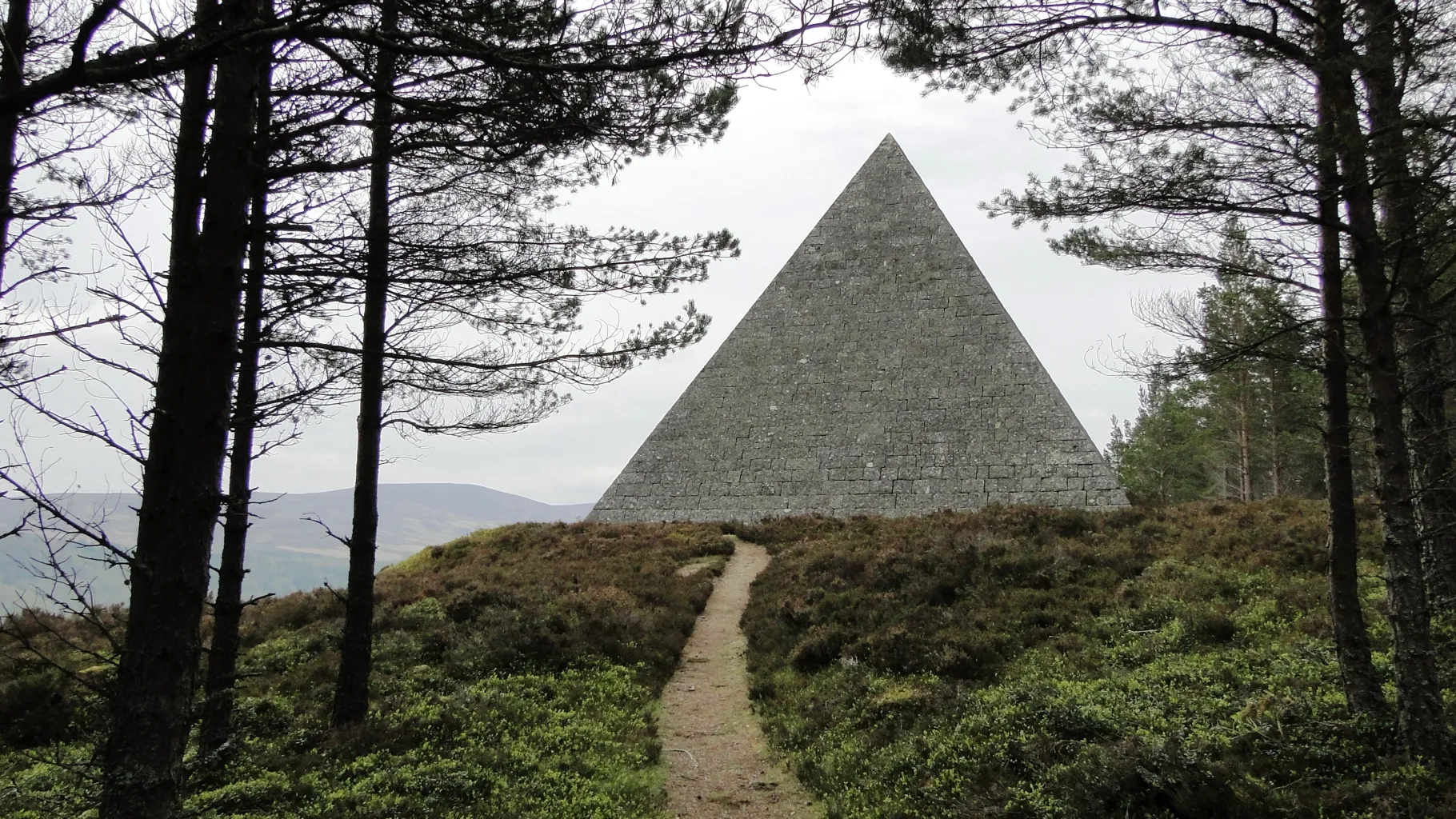
| Duchess of Richmond Memorial Cairn The Duchess of Richmond Memorial Cairn, located in the Scottish Highlands near the village of Tomintoul, is a stone cairn erected to commemorate the Duchess of Richmond. Key features include its conical shape, traditional cairn construction using local stones, and its role as a historical landmark in the region. Period: Constructed in the 19th century AD. | Balmoral Cairns The Balmoral Cairns, located on the Balmoral Estate in Aberdeenshire, Scotland, are a series of stone cairns erected by Queen Victoria and her family. Key features include various shapes and sizes, each commemorating significant events and family members, with the most prominent being the Prince Albert Cairn, a large pyramid-shaped cairn dedicated to Queen Victoria’s consort, Prince Albert. Period: Constructed in the 19th century AD. |
| The Star Pyramid The Star Pyramid, located in the Old Town Cemetery in Stirling, Scotland, is a distinctive pyramid-shaped monument built by local stonemason William Drummond. Key features include its sandstone construction, star-shaped inscriptions, and dedication to the principles of education and the Bible. Period: Constructed in 1863 AD. |
Below you will find a list of pyramids in England.
| Silbury Hill Silbury Hill, located near Avebury in Wiltshire, England, is a prehistoric artificial mound and one of the largest of its kind in Europe. Key features include its impressive height of about 40 meters (131 feet) and its layered construction of chalk and earth. The exact purpose of Silbury Hill remains unknown, but it is believed to have had ceremonial or religious significance. Period: Constructed during the Neolithic period, around 2400 BC. | Emmanuel Head Daymark – Holy Island The Emmanuel Head Daymark, located on Holy Island (Lindisfarne) off the coast of Northumberland, England, is a stone navigational marker. Key features include its pyramid-like shape and function as a daymark to aid maritime navigation. It is one of the earliest surviving navigational aids in the region. Period: Constructed in the early 19th century AD. |
| Needle’s Eye The Needle’s Eye, located in Wentworth, South Yorkshire, England, is a decorative folly in the form of a stone pyramid with a central archway. Key features include its unusual design, built from sandstone, and the legend that it was constructed as part of a bet to drive a carriage through it. Period: Constructed in the mid-18th century AD. | Blickling Park mausoleum The Blickling Park Mausoleum, located on the grounds of Blickling Hall in Norfolk, England, is a pyramid-shaped mausoleum built for the Hobart family. Key features include its brick and stone construction, pyramid shape, and classical architectural details, reflecting the influence of Egyptian design. Period: Constructed in the late 18th century AD. |
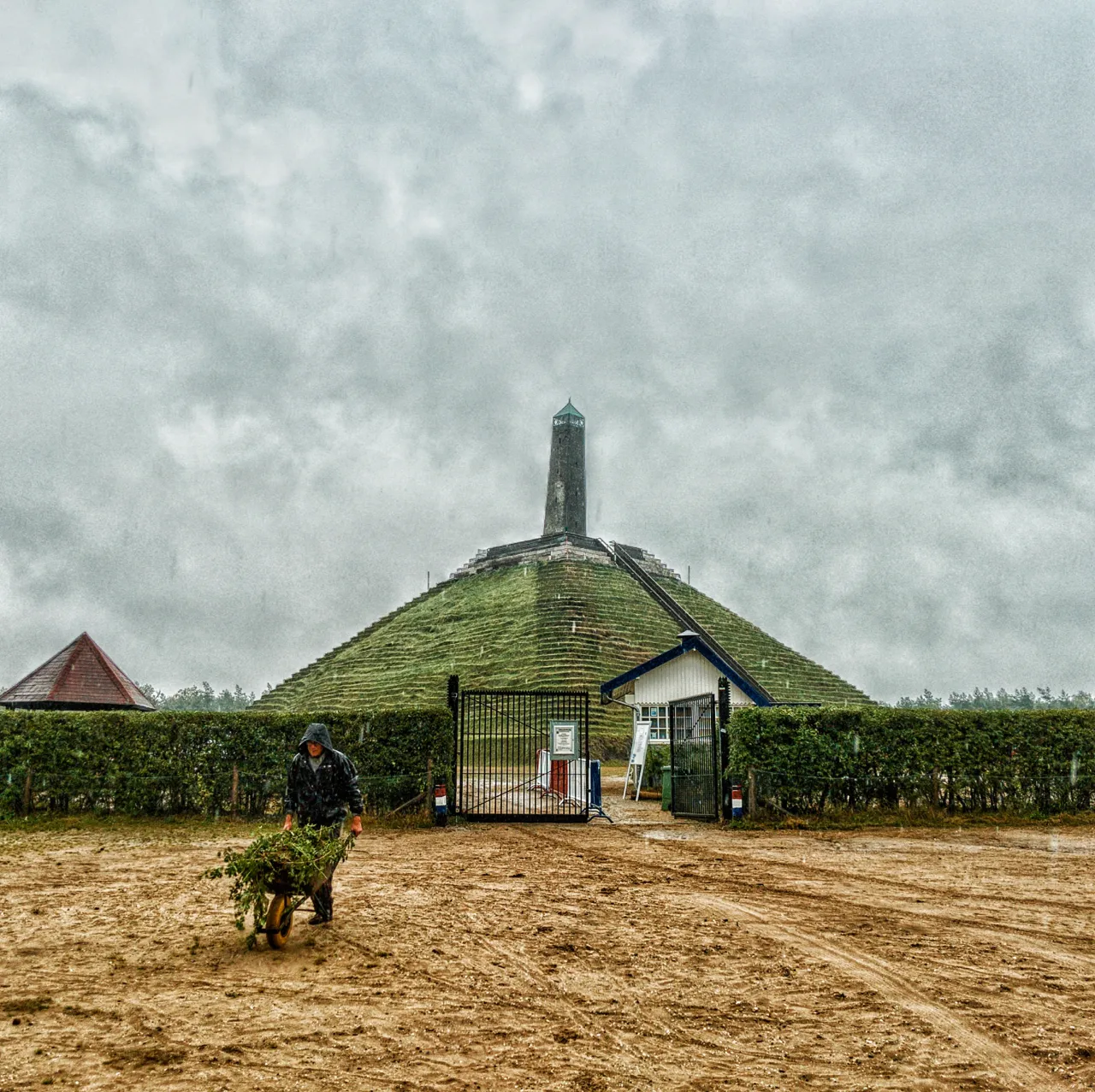
The Pyramid of Austerlitz, located near the village of Woudenberg in the Netherlands, is an artificial hill built by Napoleon’s soldiers. Key features include its step-pyramid design, made from earth and turf, and an obelisk at the summit, constructed to commemorate Napoleon’s victories.
Period: Constructed in 1804 AD.
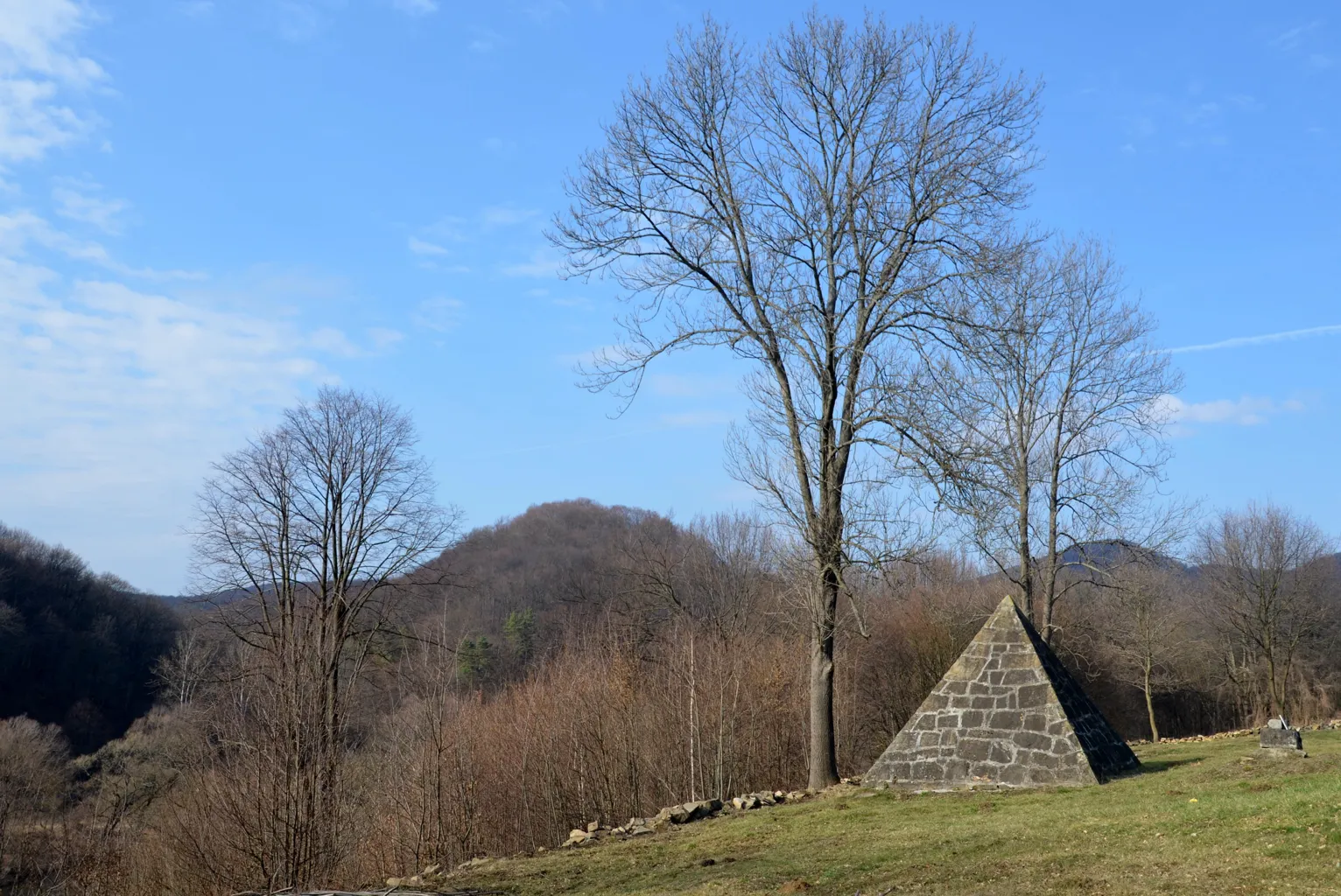
Tomb of Kulczycki and Dobrianski families
The Tomb of Kulczycki and Dobrianski Families, located in the Lychakiv Cemetery in Lviv, Ukraine (formerly Poland), is a pyramid-shaped mausoleum. Key features include its stone construction and historical significance as a burial site for notable families, with intricate carvings and inscriptions.
Period: Believed to have been constructed in the 19th century.
Long Barrows of Wietrzychowice
The Long Barrows of Wietrzychowice, located in the Kuyavian-Pomeranian Voivodeship of Poland, are ancient burial mounds dating back to the Neolithic period. These structures are significant examples of early megalithic tombs constructed by the Funnelbeaker culture. These structures are sometimes refered to as pyramids, but more accurately they are burial mounds.
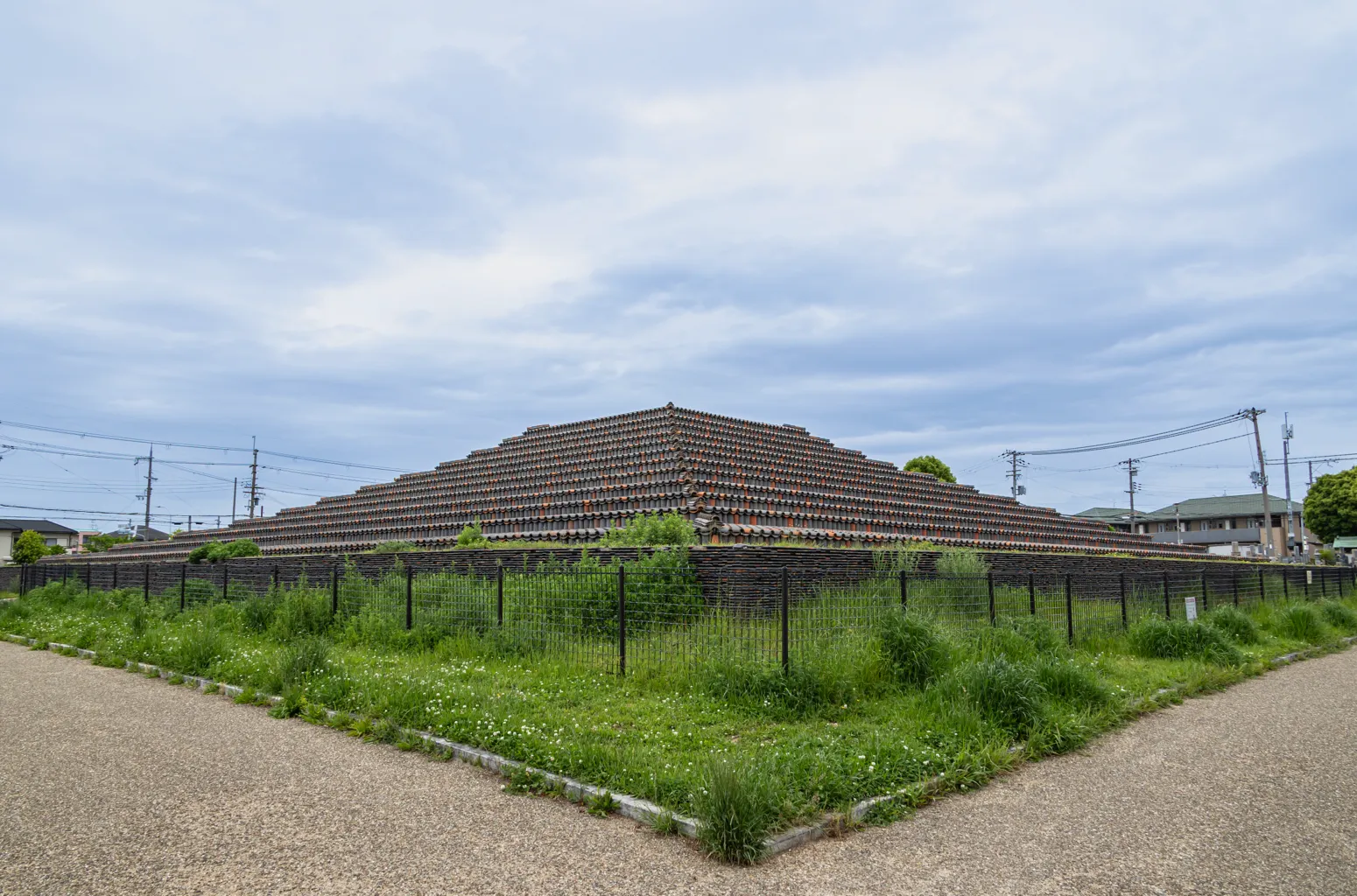
| Dotō Dotō, also known as the Doto Pagoda, is a notable ancient Buddhist structure located in the Chikugo region of Fukuoka Prefecture, Japan. Key features include its octagonal shape and construction from stone, representing a unique form of ancient Japanese pagodas. The pagoda is part of the ruins of the Tachibana Temple. Period: Constructed in the late 7th century AD. | Kumayama Iseki Kumayama Iseki is an archaeological site located in the Kumayama region of Okayama Prefecture, Japan. The site features remnants of ancient structures, including a stone-built pyramid-like mound, thought to be part of a larger complex used for religious or ceremonial purposes. Period: Occupied during the Yayoi period (circa 300 BC to AD 300). |
| Zuto Pagoda Zuto Pagoda, located in the ancient capital city of Nara, Japan, is an ancient earthen mound with a stone structure believed to be a Buddhist pagoda. Key features include its circular shape and terraced design, reflecting the influence of early Buddhist architecture in Japan. Period: Constructed in the 7th century AD. |

The Tomb of the General, also known as the Pyramid of the East, is an ancient burial site located near Ji’an in North Korea. Key features include its step-pyramid design, consisting of multiple tiers made from stone, and the belief that it served as the tomb for a Goguryeo king or general.
Period: Estimated to date back to the Goguryeo Kingdom (circa 37 BC to AD 668).
The Chinese pyramids are ancient burial mounds and tombs located primarily in the Shaanxi Province, China. These structures serve as the final resting places of emperors and notable figures from various dynasties, particularly during the early periods of Chinese history.
The Chinese Pyramids have their own blog post which you can find here. Most (if not all) of the Pyramids have not been excavated.
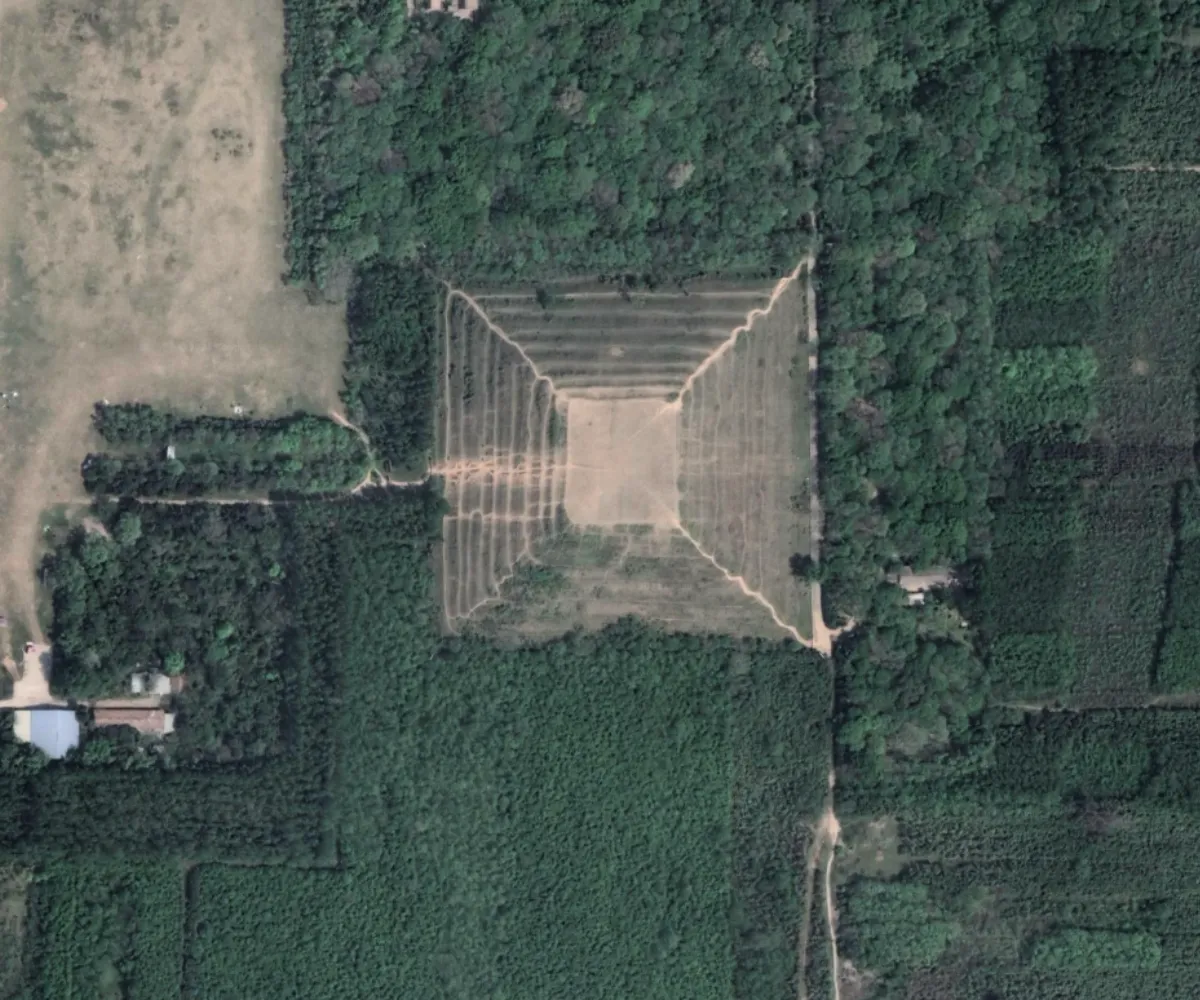
| Han Changling Han Changling, located near Xi’an in Shaanxi Province, China, is the mausoleum of Emperor Gaozu, the founder of the Han Dynasty. Key features include a large earthen mound and various satellite tombs for consorts and high-ranking officials, reflecting its significance as an imperial burial site. Period: Constructed during the early Han Dynasty (circa 202 BC to 195 BC). | Mausoleum of Shaohao The Mausoleum of Shaohao, located in Qufu, Shandong Province, China, is traditionally considered the burial site of Shaohao, a legendary Chinese ruler. Key features include a large earthen mound and ancient inscriptions, reflecting its cultural and historical significance. Period: The exact period is uncertain, but it is associated with ancient Chinese mythology and legend. |
| Mausoleum of the First Qin Emperor The Mausoleum of the First Qin Emperor, located near Xi’an in Shaanxi Province, China, is the burial site of Qin Shi Huang, the first emperor of China. Key features include the famous Terracotta Army, extensive underground palaces, and a massive burial mound, reflecting its importance as a monumental imperial tomb. Period: Constructed during the late 3rd century BC (circa 246 BC to 208 BC). | Qianling Mausoleum The Qianling Mausoleum, located in Shaanxi Province, China, is the joint tomb of Emperor Gaozong and Empress Wu Zetian of the Tang Dynasty. Key features include the Stone Lions, the Divine Path, and various satellite tombs, reflecting its significance as a major imperial burial site. Period: Constructed during the 7th century AD (circa 684 AD). |
| Western Han Dynasty Imperial Tombs The Western Han Dynasty Imperial Tombs, located in various sites around Xi’an, Shaanxi Province, China, are a series of mausoleums for emperors and nobles of the Western Han Dynasty. Key features include large earthen mounds, underground burial chambers, and numerous grave goods, reflecting their importance as imperial burial sites. Period: Constructed from the 2nd century BC to the 1st century AD. | Yangling Mausoleum of Han The Yangling Mausoleum of Han, located near Xi’an in Shaanxi Province, China, is the joint tomb of Emperor Jing of Han and his empress. Key features include a large earthen mound, extensive burial pits, and well-preserved terracotta figurines, reflecting its significance as an imperial tomb. Period: Constructed during the 2nd century BC (circa 153 BC). |
| Western Xia Mausoleums The Western Xia Mausoleums, located near Yinchuan in Ningxia, China, are the burial sites of the emperors of the Western Xia Dynasty. Key features include large pyramid-shaped tombs, earthen mounds, and remains of monumental structures, reflecting their importance as imperial tombs. Period: Constructed from the 11th to the 13th centuries AD. | Shimao Stepped Pyramid The Shimao Stepped Pyramid, located in the northern part of Shaanxi Province, China, is an ancient archaeological site known for its large, terraced pyramid structure. Key features include the pyramid’s stone construction, multiple levels, and surrounding complex, indicating its significance as a major ceremonial and residential center during the Neolithic period. Period: Occupied from the Late Neolithic period (circa 2300 to 1800 BC). |
| Tomb of Emperor Wu of Han The Tomb of Emperor Wu of Han, located near Xi’an in Shaanxi Province, China, is the mausoleum of Emperor Wu, one of the most notable emperors of the Han Dynasty. Key features include a large earthen mound, extensive burial pits with numerous grave goods, and satellite tombs for consorts and officials, reflecting its significance as an imperial burial site. Period: Constructed during the 2nd century BC (circa 87 BC). | Tomb of Empress Li The Tomb of Empress Li, also known as the Tomb of Empress Lihou, is located near the tomb of Emperor Wu of Han. Key features include a large burial mound and accompanying burial items, indicating her status as an empress of the Han Dynasty. Period: Constructed during the 2nd century BC (circa 126 BC). |
| Tomb of Emperor Zhao of Han The Tomb of Emperor Zhao of Han, located near Xi’an in Shaanxi Province, China, is the burial site of Emperor Zhao, the youngest son of Emperor Wu. Key features include a large earthen mound and a well-organized burial complex, reflecting his importance in the Han Dynasty. Period: Constructed during the 1st century BC (circa 74 BC). | Tomb of Empress Shangguan The Tomb of Empress Shangguan, located near the tomb of Emperor Zhao of Han, is the burial site of Empress Shangguan, who was the empress consort of Emperor Zhao. Key features include a burial mound and various grave goods, reflecting her status and role in the Han Dynasty. Period: Constructed during the 1st century BC (circa 37 BC). |
| Tomb of Emperor Cheng of Han The Tomb of Emperor Cheng of Han, located near Xi’an in Shaanxi Province, China, is the mausoleum of Emperor Cheng, known for his luxurious reign. Key features include a large burial mound and extensive burial artifacts, indicating the wealth and significance of his reign. Period: Constructed during the 1st century BC (circa 7 BC). | Tomb of Empress Xu The Tomb of Empress Xu, located near the tomb of Emperor Cheng of Han, is the burial site of Empress Xu, the first wife of Emperor Cheng. Key features include a burial mound and various artifacts, reflecting her status as empress. Period: Constructed during the 1st century BC (circa 8 BC). |
| Tomb of Empress Wang The Tomb of Empress Wang, located near the tomb of Emperor Cheng of Han, is the burial site of Empress Wang, the second wife of Emperor Cheng. Key features include a burial mound and accompanying grave goods, reflecting her status as a prominent empress. Period: Constructed during the 1st century BC (circa 8 BC). | Tomb of Emperor Jing of Han The Tomb of Emperor Jing of Han, also known as the Yangling Mausoleum, located near Xi’an in Shaanxi Province, China, is the joint tomb of Emperor Jing and his wife, Empress Wang. Key features include a large earthen mound, extensive burial pits filled with terracotta figurines, and a well-preserved mausoleum complex, reflecting its significance as an imperial burial site. Period: Constructed during the 2nd century BC (circa 141 BC). |
| Tomb of Consort Ban The Tomb of Consort Ban, also known as Ban Jieyu, is located near Xi’an in Shaanxi Province, China. Consort Ban was a well-known poet and scholar during the Han Dynasty. Key features include a simple burial mound and a memorial stele, reflecting her respected status and cultural contributions. Period: Constructed during the 1st century BC (circa 6 BC). | Tomb of Emperor Ping of Han The Tomb of Emperor Ping of Han, located near Xi’an in Shaanxi Province, China, is the burial site of Emperor Ping. Key features include a large earthen mound and an elaborate burial complex, reflecting his short but significant reign. Period: Constructed during the 1st century AD (circa AD 5). |
| Tomb of Emperor Yuan of Han The Tomb of Emperor Yuan of Han, located near Xi’an in Shaanxi Province, China, is the mausoleum of Emperor Yuan, known for his efforts to consolidate and centralize power. Key features include a large burial mound, extensive burial pits, and various grave goods, indicating the importance of his reign. Period: Constructed during the 1st century BC (circa 33 BC). | Tomb of Empress Wang The Tomb of Empress Wang, located near the tomb of Emperor Yuan of Han, is the burial site of Empress Wang Zhengjun, who played a significant role in the Han Dynasty as the empress, empress dowager, and grand empress dowager. Key features include a burial mound and extensive grave goods, reflecting her influence and status. Period: Constructed during the 1st century BC (circa 28 BC). |
| Tomb of Emperor Ai of Han The Tomb of Emperor Ai of Han, located near Xi’an in Shaanxi Province, China, is the mausoleum of Emperor Ai, known for his tragic and controversial reign. Key features include a burial mound and an elaborate burial complex, reflecting the tumultuous period of his rule. Period: Constructed during the 1st century BC (circa 1 BC). | Tomb of Empress Fu The Tomb of Empress Fu, located near the tomb of Emperor Ai of Han, is the burial site of Empress Fu, the wife of Emperor Ai. Key features include a burial mound and accompanying grave goods, reflecting her status as empress. Period: Constructed during the 1st century BC (circa 1 BC). |
| Tomb of Emperor Hui of Han The Tomb of Emperor Hui of Han, located near Xi’an in Shaanxi Province, China, is the burial site of Emperor Hui, the second emperor of the Han Dynasty. Key features include a large burial mound and extensive burial pits, indicating the significance of his reign and his efforts to consolidate his father’s achievements. Period: Constructed during the 2nd century BC (circa 188 BC). | Tomb of Empress Zhang Yan The Tomb of Empress Zhang Yan, located near the tomb of Emperor Hui of Han, is the burial site of Empress Zhang, the wife of Emperor Hui. Key features include a burial mound and various grave goods, reflecting her status as empress and her influence during her husband’s reign. Period: Constructed during the 2nd century BC (circa 180 BC). |
| Tomb of Marquis Zhang Ao The Tomb of Marquis Zhang Ao, located near Xi’an in Shaanxi Province, China, is the burial site of Zhang Ao, a notable nobleman and military commander during the early Han Dynasty. Key features include a burial mound and various grave goods, reflecting his high status and contributions to the Han Dynasty. Period: Constructed during the early Han Dynasty (circa 2nd century BC). | Tomb of Emperor Gaozu of Han The Tomb of Emperor Gaozu of Han, also known as Changling, is located near Xi’an in Shaanxi Province, China. It is the mausoleum of Liu Bang, the founder of the Han Dynasty. Key features include a large earthen mound, extensive burial pits, and satellite tombs for consorts and high-ranking officials, reflecting its significance as an imperial burial site. Period: Constructed during the early Han Dynasty (circa 195 BC). |
| Tomb of Empress Lü The Tomb of Empress Lü, located near the tomb of Emperor Gaozu of Han in Xi’an, Shaanxi Province, China, is the burial site of Empress Lü Zhi, the first empress of the Han Dynasty and a powerful political figure. Key features include a burial mound and various grave goods, reflecting her influence during the early Han Dynasty. Period: Constructed during the early Han Dynasty (circa 180 BC). | Tomb of Empress Dou The Tomb of Empress Dou, located near Xi’an in Shaanxi Province, China, is the burial site of Empress Dou Yifang, the wife of Emperor Wen and a significant political figure during the Han Dynasty. Key features include a large burial mound and various artifacts, reflecting her status and contributions to the Han Dynasty. Period: Constructed during the early Han Dynasty (circa 135 BC). |
| Tomb of Empress Dowager Bo The Tomb of Empress Dowager Bo, located near Xi’an in Shaanxi Province, China, is the burial site of Empress Dowager Bo, the mother of Emperor Wen. Key features include a burial mound and various grave goods, reflecting her status as an influential figure during the early Han Dynasty. Period: Constructed during the early Han Dynasty (circa 155 BC). | Tomb of Emperor Xuan of Han The Tomb of Emperor Xuan of Han, located near Xi’an in Shaanxi Province, China, is the burial site of Emperor Xuan, known for his efforts to restore and strengthen the Han Dynasty. Key features include a large earthen mound, extensive burial pits, and various artifacts, reflecting his importance as an emperor. Period: Constructed during the 1st century BC (circa 49 BC). |
| Tomb of Empress Wang The Tomb of Empress Wang, located near the tomb of Emperor Xuan of Han in Xi’an, Shaanxi Province, China, is the burial site of Empress Wang, the wife of Emperor Xuan. Key features include a burial mound and accompanying grave goods, reflecting her status and influence as empress. Period: Constructed during the 1st century BC (circa 49 BC). | Tomb of Empress Xu The Tomb of Empress Xu, located near the tomb of Emperor Yuan of Han in Xi’an, Shaanxi Province, China, is the burial site of Empress Xu, the wife of Emperor Yuan. Key features include a burial mound and various grave goods, reflecting her status as empress and her role in the Han Dynasty. Period: Constructed during the 1st century BC (circa 33 BC). |
| Tomb of Emperor Wen of Sui in Yangling, Shaanxi The Tomb of Emperor Wen of Sui, located in Yangling, Shaanxi Province, China, is the mausoleum of Emperor Wen, the founder of the Sui Dynasty. Key features include a large earthen mound and an extensive burial complex, reflecting his significant role in unifying China and laying the foundation for the Tang Dynasty. Period: Constructed during the early 7th century AD (circa 604 AD). | The Lianghu Altar in Xining, Qinghai The Lianghu Altar, located in Xining, Qinghai Province, China, is an ancient sacrificial altar associated with the Lianghu culture. Key features include its circular shape, multiple layers, and use as a site for ritualistic and ceremonial activities, reflecting its cultural and religious significance. Period: Estimated to date back to the Bronze Age (circa 1500 to 1000 BC). |
| Chongling Mausoleum of Emperor Dezong of Tang The Chongling Mausoleum, located in Shaanxi Province, China, is the burial site of Emperor Dezong of the Tang Dynasty. Key features include a large burial mound, various stone statues, and extensive underground chambers, indicating its importance as an imperial tomb. Period: Constructed during the late 8th century AD (circa 805 AD). | Jinling Mausoleum of Emperor Xianzong of Tang The Jinling Mausoleum, located in Shaanxi Province, China, is the burial site of Emperor Xianzong of the Tang Dynasty. Key features include a prominent earthen mound, stone carvings, and elaborate underground chambers, reflecting the grandeur of Tang Dynasty imperial burials. Period: Constructed during the early 9th century AD (circa 820 AD). |
| Tomb of Emperor Xiaojing of Tang near Goushi, Henan The Tomb of Emperor Xiaojing, located near Goushi in Henan Province, China, is the burial site of Emperor Xiaojing of the Tang Dynasty. Key features include a large burial mound and extensive grave goods, reflecting his status and the burial customs of the period. Period: Constructed during the mid-7th century AD (circa 664 AD). | Tomb of Princess Chengyang of Emperor Taizong The Tomb of Princess Chengyang, located in Shaanxi Province, China, is the burial site of Princess Chengyang, a daughter of Emperor Taizong of the Tang Dynasty. Key features include a burial mound and various grave goods, reflecting her status as a princess and the Tang Dynasty’s burial practices. Period: Constructed during the 7th century AD (circa 630 AD). |
| Tomb of Princess Xincheng of Emperor Taizong The Tomb of Princess Xincheng, located in Shaanxi Province, China, is the burial site of Princess Xincheng, another daughter of Emperor Taizong of the Tang Dynasty. Key features include a burial mound and various artifacts, reflecting her royal status and the Tang Dynasty’s burial customs. Period: Constructed during the 7th century AD (circa 650 AD). | Tomb of King Ling of Zhou The Tomb of King Ling of Zhou, located in Henan Province, China, is the burial site of King Ling, a ruler of the Eastern Zhou Dynasty. Key features include a large burial mound, extensive grave goods, and sacrificial pits, reflecting the burial practices and significance of Zhou Dynasty rulers. Period: Constructed during the 6th century BC (circa 545 BC). |
| Tomb of Three Kings of Zhou The Tomb of Three Kings of Zhou, located in the Zhouyuan area near Baoji in Shaanxi Province, China, is a significant archaeological site associated with the Western Zhou Dynasty. Key features include multiple large burial mounds believed to be the tombs of Kings Wen, Wu, and Cheng, reflecting their importance in early Chinese history. Period: Constructed during the 11th to 10th centuries BC. | Tomb of King of Zhao state The Tomb of the King of Zhao State, located near Handan in Hebei Province, China, is the burial site of a ruler from the Warring States period. Key features include a large burial mound, intricate tomb chambers, and numerous grave goods, reflecting the wealth and power of the Zhao state. Period: Constructed during the 4th to 3rd centuries BC. |
| Burial complex in ancient Xiadu The Burial Complex in Ancient Xiadu, located near modern-day Yi County in Hebei Province, China, is associated with the ancient capital of the Yan state during the Warring States period. Key features include multiple tombs, large burial mounds, and rich grave goods, indicating the site’s importance as a royal burial ground. Period: Constructed during the 5th to 3rd centuries BC. | Tomb of First Emperor in Lintong The Tomb of the First Emperor, located in Lintong District near Xi’an in Shaanxi Province, China, is the mausoleum of Qin Shi Huang, the first emperor of China. Key features include the famous Terracotta Army, extensive underground palaces, and a massive burial mound, reflecting its significance as one of the most monumental imperial tombs in history. Period: Constructed during the late 3rd century BC (circa 246 BC to 208 BC). |
| Tomb of Emperor Xiaojing of Tang The Tomb of Emperor Xiaojing of Tang, located near Goushi in Henan Province, China, is the burial site of Emperor Xiaojing, the father of Emperor Gaozu, the founder of the Tang Dynasty. Key features include a large burial mound and extensive grave goods, reflecting the burial customs and significance of the period. Period: Constructed during the early 7th century AD (circa 618 AD). | Tomb of Emperor Qin Ershi in Xi’an The Tomb of Emperor Qin Ershi, located in Xi’an, Shaanxi Province, China, is the burial site of Qin Ershi, the second emperor of the Qin Dynasty. Key features include a burial mound and an underground chamber, reflecting the Qin Dynasty’s burial practices. Period: Constructed during the late 3rd century BC (circa 207 BC). |
| Tomb of Princess Yang Xin The Tomb of Princess Yang Xin, located in Shaanxi Province, China, is the burial site of Princess Yang Xin, a member of the Tang Dynasty royal family. Key features include a burial mound, elaborate frescoes, and various grave goods, reflecting her high status and the burial customs of the Tang Dynasty. Period: Constructed during the 7th century AD (circa 630 AD). | Tomb of Empress Zhao Feiyan The Tomb of Empress Zhao Feiyan, located near Xi’an in Shaanxi Province, China, is the burial site of Empress Zhao Feiyan, the wife of Emperor Cheng of Han. Key features include a burial mound and various grave goods, reflecting her status as empress and her influence during the Han Dynasty. Period: Constructed during the 1st century BC (circa 1 BC). |
| Tomb of Empress Wang Kangling The Tomb of Empress Wang Kangling, located near Xi’an in Shaanxi Province, China, is the burial site of Empress Wang, the wife of Emperor Jing of Han. Key features include a burial mound and various artifacts, reflecting her status and influence during the Han Dynasty. Period: Constructed during the 2nd century BC (circa 141 BC). | Tomb of King Wu of Zhou The Tomb of King Wu of Zhou, located in the Zhouyuan area near Baoji in Shaanxi Province, China, is the burial site of King Wu, the founder of the Zhou Dynasty. Key features include a large burial mound and an extensive complex, reflecting his importance in Chinese history. Period: Constructed during the 11th century BC. |
| Tomb of King Wen of Zhou The Tomb of King Wen of Zhou, also located in the Zhouyuan area near Baoji in Shaanxi Province, China, is the burial site of King Wen, the father of King Wu of Zhou. Key features include a large burial mound and an extensive complex, reflecting his role as a significant precursor to the establishment of the Zhou Dynasty. Period: Constructed during the 11th century BC. | Tomb of Princess Lu of Yuan The Tomb of Princess Lu of Yuan, located near Beijing, China, is the burial site of Princess Lu, a member of the Yuan Dynasty royal family. Key features include a burial mound and richly decorated tomb chambers with murals, reflecting her high status and the artistic style of the Yuan Dynasty. Period: Constructed during the 13th to 14th centuries AD. |
| Tomb of Consort Qi The Tomb of Consort Qi, located in Xi’an, Shaanxi Province, China, is the burial site of Consort Qi, a favorite concubine of Emperor Gaozu of Han. Key features include a burial mound and various grave goods, reflecting her favored status in the imperial court. Period: Constructed during the 2nd century BC (circa 195 BC). | Tomb of Empress Ai The Tomb of Empress Ai, located near Xi’an in Shaanxi Province, China, is the burial site of Empress Ai, the wife of Emperor Ai of Han. Key features include a burial mound and various artifacts, reflecting her status and the burial customs of the Han Dynasty. Period: Constructed during the 1st century BC (circa 1 BC). |
Note: There are a lot of burial mounds in the US, some classify them as pyramids but I have not included those in this blog post.
| Schoenhofen Pyramid Mausoleum The Schoenhofen Pyramid Mausoleum, located in Chicago, Illinois, USA, is a burial site for the Schoenhofen family. Key features include its granite construction in the shape of an Egyptian pyramid and ornate interior design. Period: Constructed in the late 19th century (circa 1893). | Ames Monument The Ames Monument, located near Laramie, Wyoming, USA, is a pyramid-shaped monument built to commemorate Oakes and Oliver Ames, financiers of the Union Pacific Railroad. Key features include its granite construction and 60-foot height, designed by architect H.H. Richardson. Period: Constructed in 1882. |
Kamouh el Hermel, also known as the Pyramid of Hermel, is an ancient monument located near the town of Hermel in northern Lebanon. Key features include its tall, pyramid-like shape constructed from local stone, standing about 27 meters (89 feet) high, and its function as a funerary monument or territorial marker.
Period: Estimated to date back to the 2nd century BC.
The Tombs of the Garamantes are ancient burial structures located in the Fezzan region of Libya. Key features include pyramid-shaped tombs made from stone and mudbrick, reflecting the unique burial practices of the Garamantian civilization, which thrived in the Sahara Desert.
Period: Primarily during the Garamantian Kingdom (circa 500 BC to AD 700).
The Donkin Memorial, located in Port Elizabeth, South Africa, is a historical monument dedicated to the wife of Sir Rufane Donkin, the acting governor of the Cape Colony. Key features include its pyramid shape made from stone and an inscription dedicated to Elizabeth Donkin. Period: Constructed in 1820 AD.
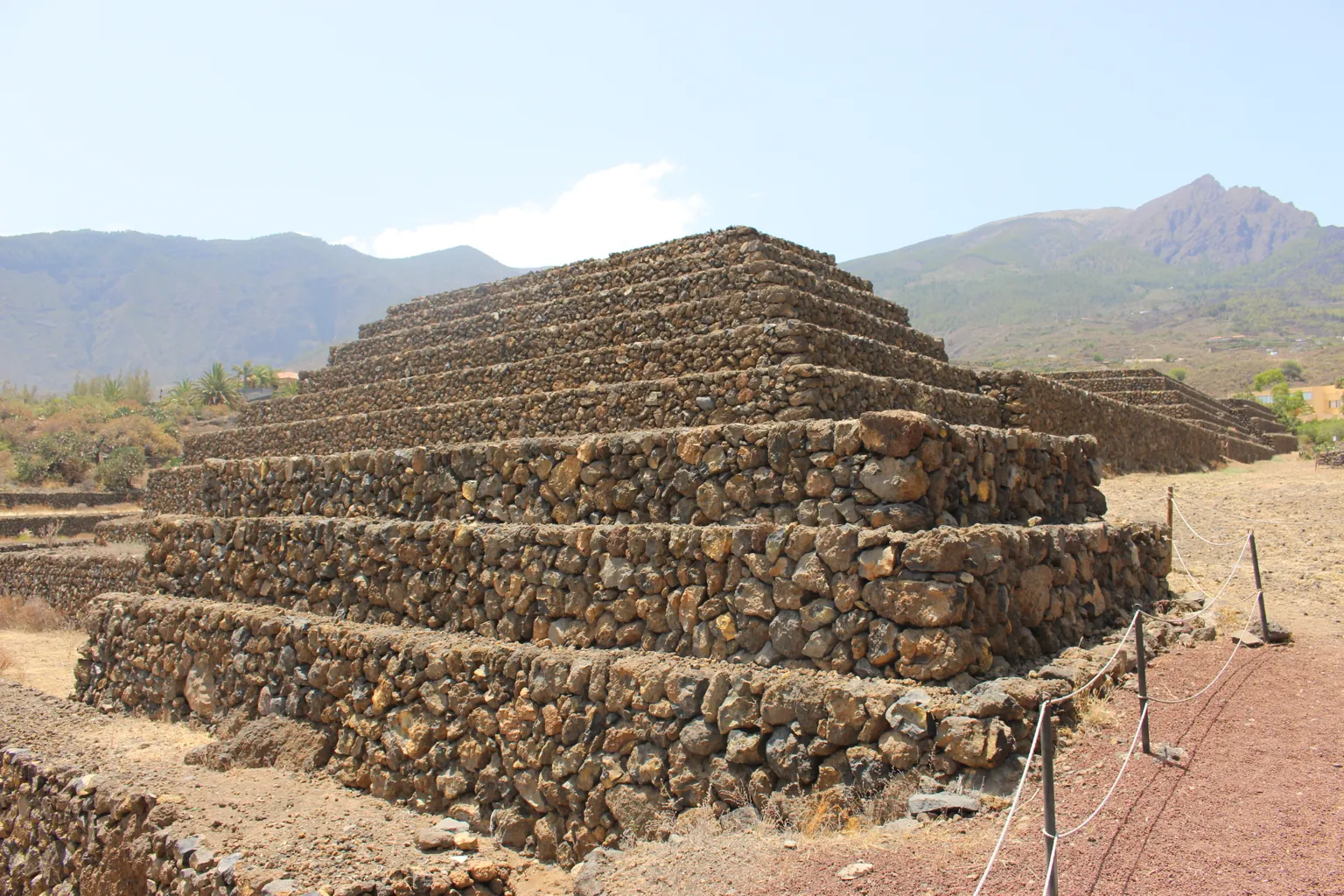
The Pyramids of Güímar, located on the island of Tenerife in the Canary Islands, Spain, are a series of step pyramids made from volcanic stone. Key features include their terraced construction and alignment with astronomical events such as the summer solstice. The origins and purpose of the pyramids remain debated, with some suggesting agricultural or ceremonial uses.
Period: The exact period of construction is uncertain
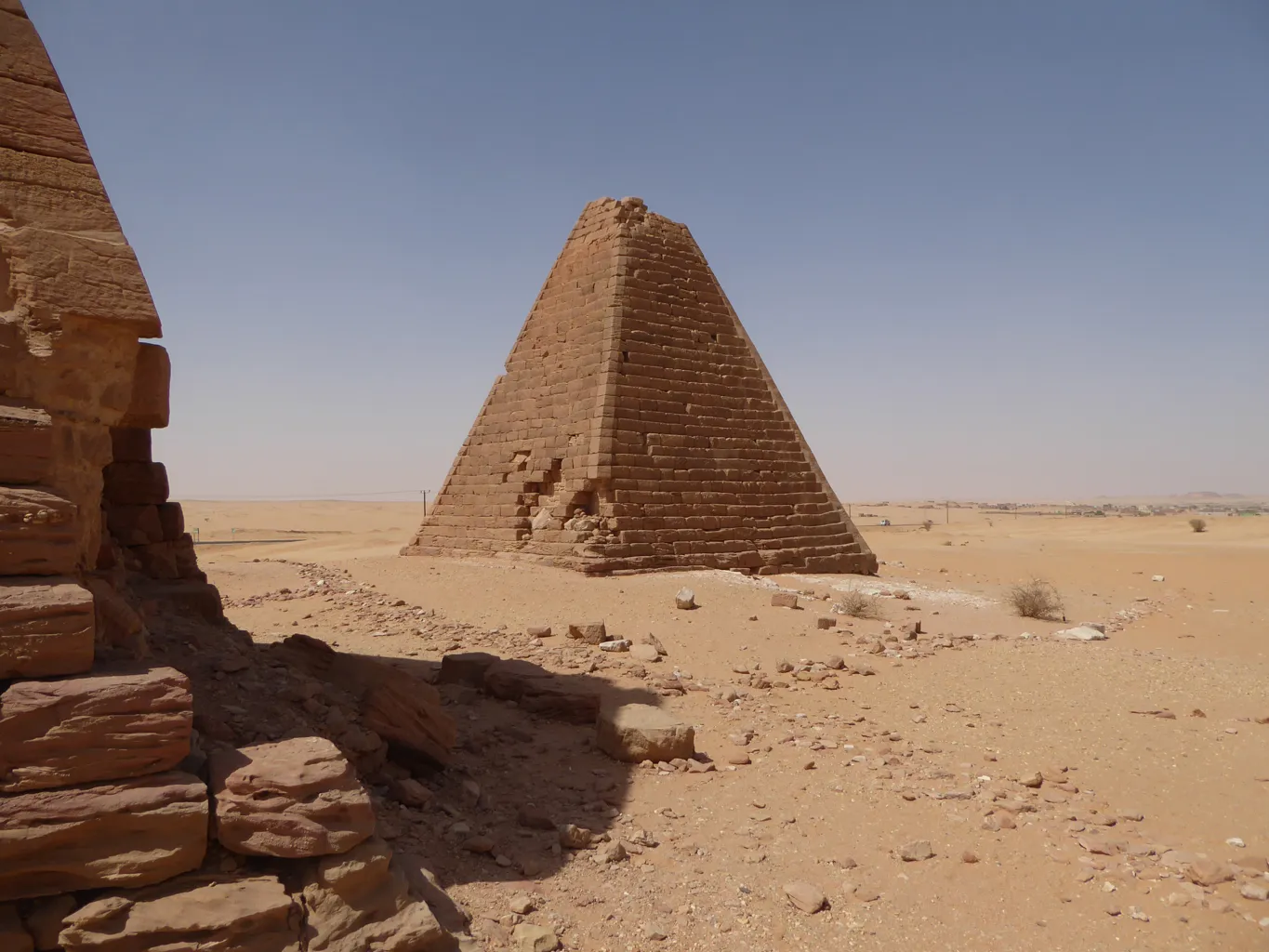
| Pyramids of Meroë The Pyramids of Meroë, located near the Nile River in Sudan, are part of the ancient city of Meroë, the capital of the Kingdom of Kush. Key features include over 200 pyramids built as royal tombs, characterized by their steep sides and small bases, differing from Egyptian pyramids. The site is a UNESCO World Heritage site. Period: Constructed between the 8th century BC and the 4th century AD. | Sedeinga pyramids The Sedeinga Pyramids are located in the Sedeinga necropolis in northern Sudan. These small pyramids served as tombs for the elites of the Kingdom of Kush. Key features include their dense concentration and varied sizes, reflecting different social statuses. Period: Primarily during the Napatan and Meroitic periods (circa 7th century BC to 4th century AD). |
| The Nuri Pyramids (Pyramids of Nubian kings) The Nuri Pyramids, located in the ancient cemetery of Nuri in northern Sudan, are burial sites for Nubian kings, including the famous Pharaoh Taharqa. Key features include around 20 pyramids with steep sides and relatively small bases, similar in style to those at Meroë. Period: Constructed during the Napatan period (circa 7th century BC to 3rd century BC). | Pyramids at Jebel Barkal The Pyramids at Jebel Barkal, located near the ancient city of Napata in northern Sudan, are part of a significant archaeological site. Key features include a group of pyramids that served as royal tombs for the rulers of the Kingdom of Kush, alongside a temple dedicated to the god Amun. The pyramids are smaller and steeper compared to Egyptian pyramids. Period: Constructed between the 8th century BC and the 4th century AD. |
| Pyramids at El-Kurru The Pyramids at El-Kurru, located near the modern town of Karima in Sudan, are part of a royal cemetery associated with the early rulers of the Kingdom of Kush. Key features include several pyramids built for kings and queens, characterized by their steep sides and burial chambers below ground. Period: Constructed during the Napatan period (circa 9th century BC to 4th century BC). |
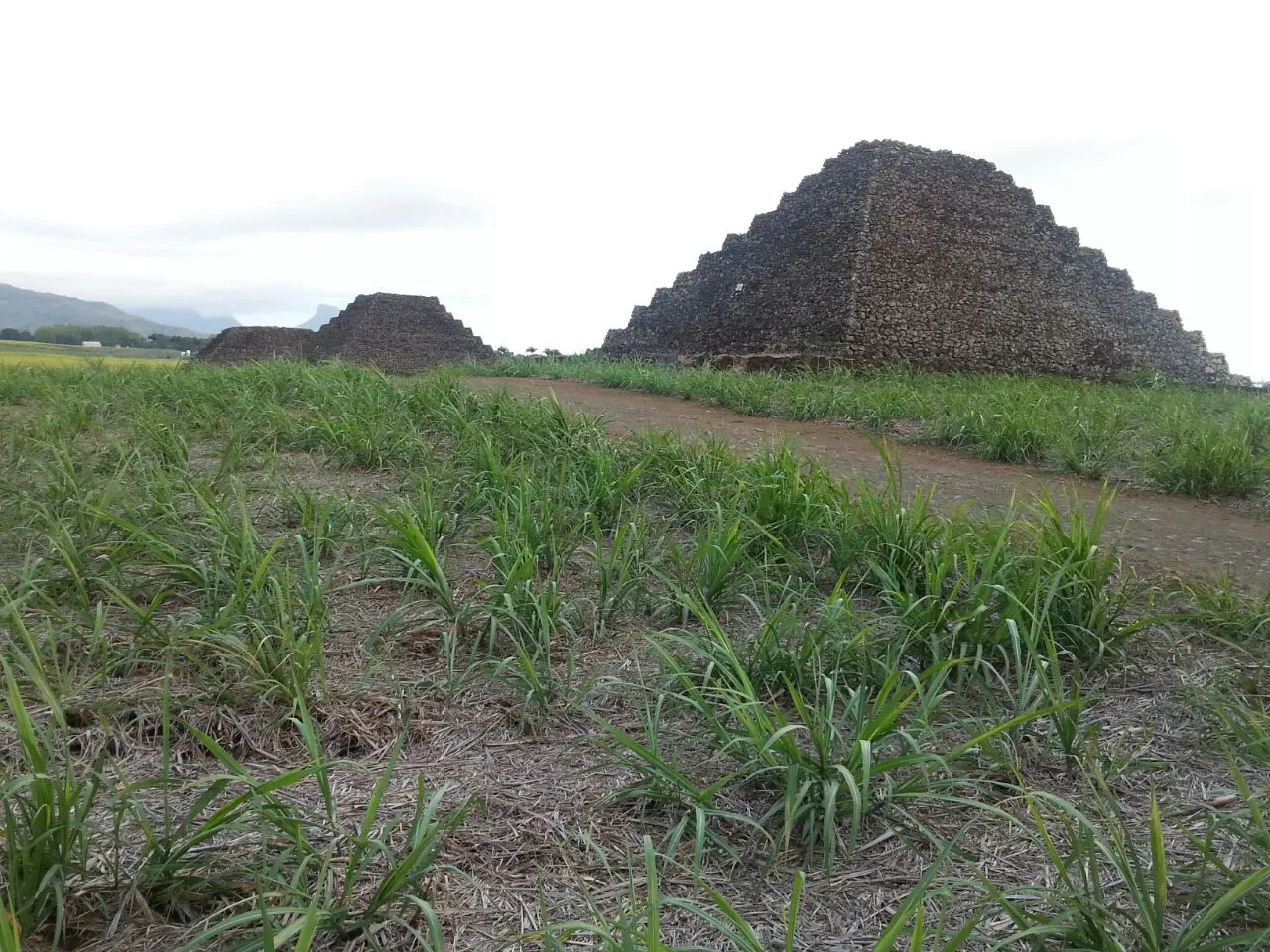
The Pyramids of Plaine Magnien, located in the Plaine Magnien region of Mauritius, are a set of six pyramid structures made from basalt rock. Key features include their terraced construction and uncertain origins, with various theories suggesting they were built for agricultural, astronomical, or ceremonial purposes.
Period: The exact period of construction is uncertain, but they are believed to date back to the early colonial period.
Taxila, located in the Punjab region of Pakistan, is an ancient city known for its rich history and archaeological significance. Key features include multiple sites such as Bhir Mound, Sirkap, and Jaulian, which encompass ruins of Buddhist stupas, monasteries, temples, and residential areas, reflecting the city’s importance as a center of learning and trade.
Period: Occupied from the 6th century BC to the 5th century AD.
The Tomb of Askia, located in Gao, Mali, is a monumental earthen structure attributed to Askia Mohammed I, an emperor of the Songhai Empire. Key features include its pyramidal shape, constructed using traditional mud-building techniques, and its status as a significant example of Sahelian architecture. Period: Constructed in the late 15th century AD.
The Nsude Pyramids, located in the Nsude region of southeastern Nigeria, are ancient step pyramids built by the Igbo people. Key features include a series of circular, mud-brick structures stacked in a conical form, each decreasing in diameter as they rise. These pyramids were likely used for religious or ceremonial purposes, although detailed historical records are sparse.
Period: Estimated to date back to pre-colonial times, likely between the 10th and 15th centuries AD.
The Pyramids in Tahiti, often referred to in local legends and historical accounts, are ancient structures believed to have been built by the early Polynesians. While physical evidence of these pyramids is limited, oral traditions suggest they were constructed from stone and used for religious and ceremonial purposes, similar to other Polynesian marae.
Period: Believed to date back to the early Polynesian settlement period, around the 11th to 15th centuries AD.
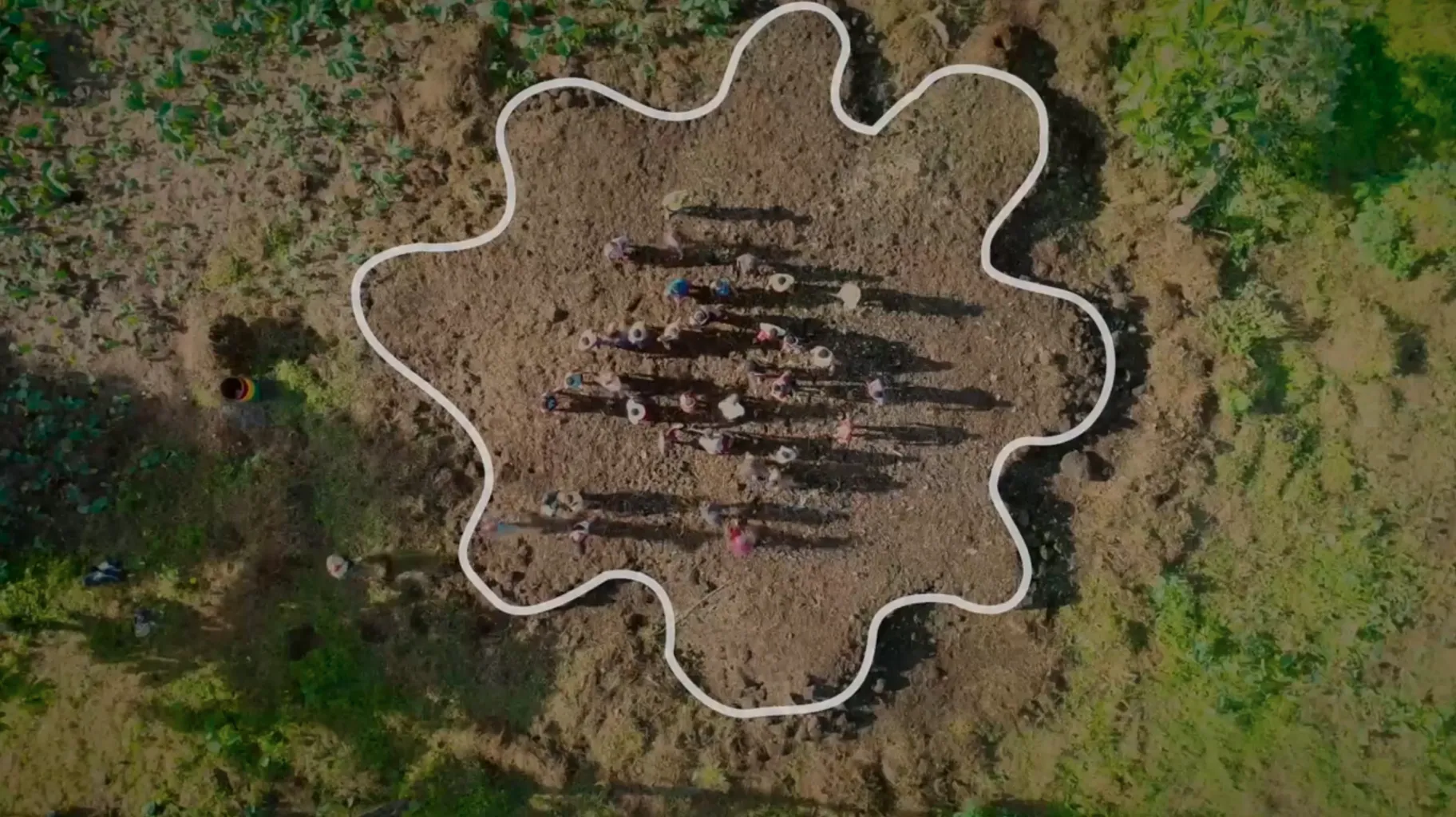
The Pulemelei Mound, located on the island of Savai’i in Samoa, is the largest and oldest ancient structure in Polynesia. Key features include its stepped, pyramid-like structure, constructed from stone, and its association with early Polynesian culture. What remains is called a “star mound”. There are thought to be a further 80 of these structures.
Period: Constructed during the period AD 1100 to 1400
This section includes Mountains claims of Pyramids which are unproven, debated or refuted.
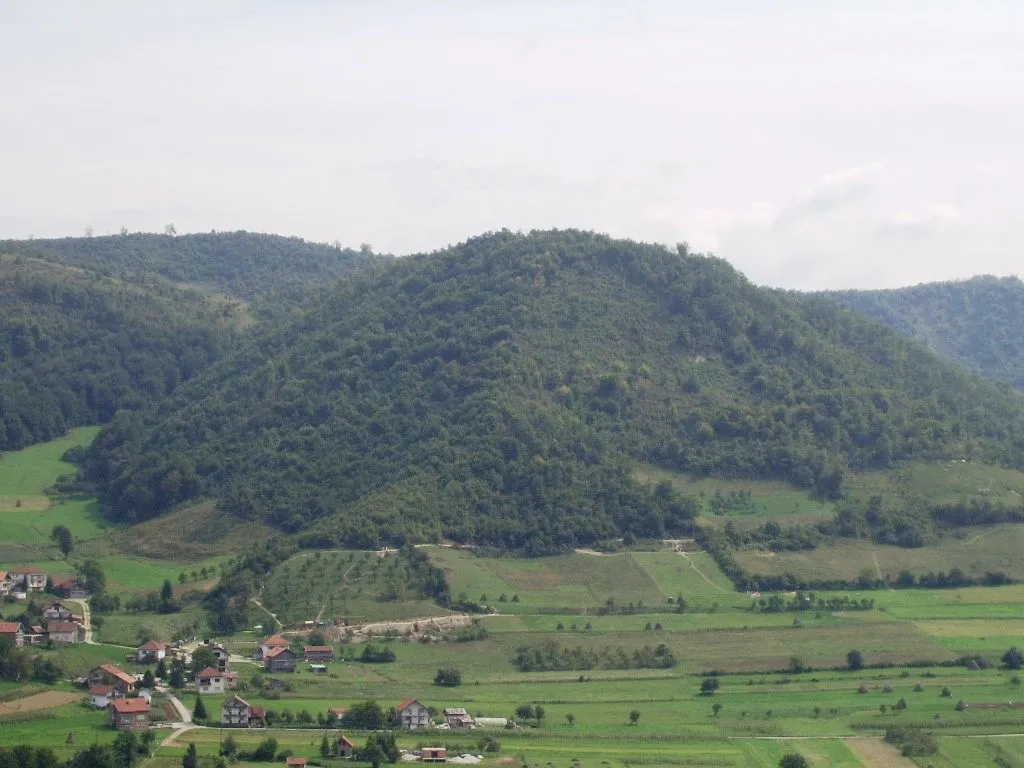
| Bosnian Pyramids The Bosnian Pyramids, located near the town of Visoko in Bosnia and Herzegovina, are a controversial and debated archaeological site. Key features include the Pyramid of the Sun, the largest and most prominent structure, along with several smaller pyramidal hills. The claims of these being ancient man-made pyramids have been widely disputed by mainstream archaeologists, who consider them natural formations. Period: Claims of construction date back to ancient civilizations, but mainstream archaeology attributes them to natural processes. | Faroe Island Pyramids The Faroe Island Pyramids are a set of natural geological formations located on the Faroe Islands in the North Atlantic. Key features include their distinctive pyramid-like shapes, which are the result of volcanic activity and erosion over time. Period: Natural formations with no evidence of human construction. |
| Antarctica Pyramid The Antarctica Pyramid refers to pyramid-shaped mountains found in the Ellsworth Mountains of Antarctica. Key features include their striking pyramid-like appearance, which has led to speculation and conspiracy theories about their origins, though geologists attribute them to natural processes such as glaciation and erosion. Period: Natural formations with no evidence of human construction. | Land based Azores Pyramids The Land Based Azores Pyramids, located on the islands of the Azores in the North Atlantic Ocean, are pyramid-like structures made from volcanic rock. Key features include their stepped design, which some believe were constructed by ancient civilizations, although their origins remain uncertain and could be linked to agricultural practices. Period: Unknown, possibly related to early settlement or agricultural activities. |
| Underwater Pyramids – The Azores The Underwater Pyramids in the Azores are submerged pyramid-like structures discovered off the coast of the Azores islands. Key features include their large, geometric shapes, which have sparked theories about ancient civilizations, though conclusive evidence and mainstream archaeological acceptance are lacking. Period: Unknown, with no conclusive evidence of construction date or origin. | Yonaguni Monument – Japan (Underwater) The Yonaguni Monument, located off the coast of Yonaguni Island, Japan, is an underwater rock formation that resembles a stepped pyramid. Key features include flat terraces, straight walls, and sharp angles, which have led to debates about whether it is a natural formation or a man-made structure. Period: Estimated to date back to 10,000 years ago if man-made, but most geologists consider it a natural formation. |
| Lake Toba Pyramid The Lake Toba Pyramid refers to a pyramid-like structure reported near Lake Toba in Sumatra, Indonesia. Key features are largely speculative, as there is little evidence or mainstream archaeological support for the existence of such a structure in the area. Period: Claims lack verification and are considered speculative. | Gympie Pyramid – Australia The Gympie Pyramid, located near Gympie in Queensland, Australia, is a terraced hill that has been claimed by some to be an ancient pyramid. Key features include its terraced slopes, which have been attributed to both ancient construction and more recent agricultural terracing. Period: Claims of ancient construction are disputed, with mainstream archaeology suggesting agricultural origins from the 19th century. |
| Black Pyramid in Alaska The Black Pyramid in Alaska is a purported large underground pyramid structure allegedly discovered by the U.S. military. Key features are speculative, as there is no verifiable evidence or mainstream archaeological support for its existence. Period: Claims are unverified and considered speculative. | Cuba Sunken Pyramids The Cuba Sunken Pyramids refer to a set of underwater structures discovered off the coast of Cuba. Key features include large geometric shapes that some believe are remnants of an ancient civilization, although conclusive evidence and mainstream archaeological acceptance are lacking. Period: Unknown, with ongoing debate and speculation about their origin. |
| Visočica (hill) – Bosnia Visočica Hill, located near the town of Visoko in Bosnia and Herzegovina, has been controversially claimed to be an ancient pyramid. Key features include its pyramid-like shape, though mainstream archaeology considers it a natural hill formed by geological processes. Period: Claims of ancient construction lack scientific verification and are widely considered speculative. | Mount Kailash Pyramid Mount Kailash, located in Tibet, is a mountain that has been claimed by some to resemble a pyramid. Key features include its symmetrical shape and significant religious importance in Hinduism, Buddhism, Jainism, and Bon, though mainstream science considers it a natural formation. Period: Natural formation with no evidence of human construction. |
| The Lost Pyramid of Puñay The Lost Pyramid of Puñay, located in the Andes of Ecuador, is an ancient stepped pyramid structure. Key features include its large size, stepped terraces, and its use for religious and ceremonial purposes by pre-Columbian cultures. Period: Constructed by the pre-Columbian Cañari culture, estimated to date back to AD 500 to 1500. |
This list includes Pyramids that were constructed after 1900 AD. Some of which are pretty cool and worth looking at, but most are Mausoleums, Burial Chambers or Tombs.
| Nicolas Cage Pyramid The Nicolas Cage Pyramid, located in the St. Louis Cemetery No. 1 in New Orleans, Louisiana, USA, is a modern pyramid-shaped tomb purchased by actor Nicolas Cage for his future burial. Key features include its stark white stone construction and the Latin inscription “Omnia Ab Uno,” meaning “Everything From One.” Period: Constructed in 2010. | Ballandean Pyramid The Ballandean Pyramid, located in Ballandean, Queensland, Australia, is a large stone pyramid constructed as a tourist attraction and private garden feature. Key features include its dry stone construction and height of approximately 15 meters (49 feet), serving as a striking landmark in the region. Period: Constructed in the late 20th century. |
| The Summum Pyramid The Summum Pyramid, located in Salt Lake City, Utah, USA, is a modern structure built by the Summum religion for mummification rituals. Key features include its precise geometric design, copper-covered exterior, and use as a sanctuary for meditation and religious ceremonies. Period: Constructed in 1979. | Stanley R. Mickelsen Safeguard Complex The Stanley R. Mickelsen Safeguard Complex, located in Nekoma, North Dakota, USA, is a Cold War-era military facility featuring a pyramid-shaped radar facility. Key features include its reinforced concrete construction and its role in the Safeguard anti-ballistic missile system. Period: Constructed in the early 1970s. |
| Rosicrucian Pyramid – USA The Rosicrucian Pyramid, located in San Jose, California, USA, is a structure on the grounds of the Rosicrucian Egyptian Museum. It is used for ceremonial purposes by the Rosicrucian Order and reflects ancient Egyptian architectural influences. Period: The exact age is unknown, but it is believed it may have been constructed in the 20th century. | Charles Poston’s Pyramid Tomb Charles Poston’s Pyramid Tomb, located in Florence, Arizona, USA, is the burial site of Charles Poston, known as the “Father of Arizona.” Key features include its concrete construction and its location atop Primrose Hill, offering panoramic views of the area. Period: Constructed in the early 20th century (1902). |
| The Pyramid at Anderston The Pyramid at Anderston, located in Glasgow, Scotland, is a distinctive modern church building known for its pyramid shape. Key features include its concrete construction and function as a community center and place of worship. Period: Constructed in the 1970s. | Sahlberg Pyramid The Sahlberg Pyramid, located in Superior, Wisconsin, USA, is a small pyramid-shaped mausoleum in Greenwood Cemetery. Key features include its stone construction and historical significance as a local landmark. Period: Constructed in the late 19th century. |
| Palace of Peace and Reconciliation The Palace of Peace and Reconciliation, located in Astana (now Nur-Sultan), Kazakhstan, is a modern pyramid-shaped building designed by architect Norman Foster. Key features include its glass and steel construction, and it serves as a venue for international religious and cultural events. Period: Constructed in 2006. | The Dorn Pyramid The Dorn Pyramid, located in South Carolina, USA, is a pyramid-shaped tomb built by William Dorn, a gold miner. Key features include its granite construction and its use as a personal mausoleum. Period: Constructed in the 1905 |
| Pyramid of Tirana The Pyramid of Tirana, located in Tirana, Albania, is a former museum dedicated to the late Albanian leader Enver Hoxha. Key features include its concrete construction and its current use as a venue for various cultural events. Period: Constructed in 1988. | The Pyramid of Light (Campbell Park) The Pyramid of Light, located in Campbell Park, Milton Keynes, United Kingdom, is an artistic installation designed by Liliane Lijn. Key features include its illuminated structure and role as a prominent public artwork. Period: Constructed in 2012. |
| Stockport Pyramid The Stockport Pyramid, located in Stockport, Greater Manchester, United Kingdom, is a modern office building known for its distinctive pyramid shape. Key features include its glass and steel construction and its use as commercial office space. Period: Constructed in 1992. | Yogya Kembali Monument The Yogya Kembali Monument, located in Yogyakarta, Indonesia, is a pyramid-shaped monument commemorating Indonesia’s struggle for independence. Key features include its concrete construction and various exhibits related to the Indonesian National Revolution. Period: Constructed in 1985. |
| Ryugyong Hotel The Ryugyong Hotel, located in Pyongyang, North Korea, is a large, unfinished pyramid-shaped skyscraper intended to be a luxury hotel. Key features include its concrete and glass construction and its status as one of the tallest structures in North Korea. Period: Construction began in 1987 and remains incomplete. | Mausoleum of Tangun The Mausoleum of Tangun, located near Pyongyang, North Korea, is a pyramid-shaped mausoleum said to be the burial site of Tangun, the legendary founder of Korea. Key features include its large stone pyramid structure and surrounding ceremonial grounds. Period: Claimed to be constructed in ancient times, but the current structure was built in the 1990s. |
| Tama-Re (Now Demolished) Tama-Re, located in Putnam County, Georgia, USA, was a complex of buildings constructed by the United Nuwaubian Nation of Moors, featuring numerous pyramid structures. Key features included its eclectic architectural style and use for religious and cultural gatherings. The site has since been demolished. Period: Constructed in the 1990s and demolished in the early 2000s. | Window of the World The Window of the World, located in Shenzhen, China, is a theme park featuring replicas of famous landmarks from around the world, including several pyramid structures. Key features include scaled-down replicas of the Great Pyramid of Giza and other iconic monuments. Period: Opened in 1993. |
| Edmonton City Hall Edmonton City Hall, located in Edmonton, Alberta, Canada, features a modern design with two glass pyramids incorporated into the structure. Key features include the pyramids’ function as skylights and their contribution to the building’s distinctive architectural style. Period: Constructed in 1992. | Pyramids (Bathgate) The Pyramids in Bathgate, West Lothian, Scotland, refer to a group of pyramid-shaped office buildings known as the Pyramids Business Park. Key features include their glass and steel construction and their use as commercial office space. Period: Constructed in the late 20th century. |
| Muttart Conservatory The Muttart Conservatory, located in Edmonton, Alberta, Canada, is a botanical garden featuring four glass pyramids. Key features include the themed plant collections within each pyramid and their iconic contribution to Edmonton’s skyline. Period: Opened in 1976. | Ha! Ha! Pyramid The Ha! Ha! Pyramid, located in La Baie, Quebec, Canada, is a monument commemorating the Saguenay Flood of 1996. Key features include its aluminum construction and the use of traffic signs to create its unique, reflective surface. Period: Constructed in 1997. |
| Hunt’s Tomb Hunt’s Tomb, located in Papago Park, Phoenix, Arizona, USA, is a white pyramid-shaped tomb built by George W.P. Hunt, the first governor of Arizona. Key features include its concrete construction and the burial site for Hunt and his family. Period: Constructed in 1931. | Felicity Pyramid The Felicity Pyramid, located in Felicity, California, USA, is a small pyramid built as a part of the Museum of History in Granite. Key features include its polished granite construction and its role as a landmark in the “Center of the World” monument area. Period: Constructed in the late 20th century. |
| Walter Pyramid The Walter Pyramid, located on the campus of California State University, Long Beach, USA, is a large, blue pyramid-shaped sports arena. Key features include its steel frame, distinctive color, and use as a venue for basketball and volleyball games. Period: Constructed in 1994. | Glass Pyramid The Glass Pyramid, also known as the Sabancı Congress and Exhibition Center, is located in Antalya, Turkey. Key features include its glass and steel construction, used as a venue for conferences, exhibitions, and cultural events. Period: Constructed in 1997. |
| Le Perthus Pyramid The Le Perthus Pyramid, located in Le Perthus, France, is a modern monument known for its pyramid shape. Key features include its stone construction and its historical significance related to the Treaty of the Pyrenees. Period: Constructed in the 20th century. | The Shard The Shard, located in London, United Kingdom, is a modern skyscraper that tapers to a pyramid-like point at its peak. Key features include its glass facade, height of 310 meters (1,016 feet), and use as a mixed-use building housing offices, restaurants, and a hotel. Period: Constructed in 2012. |
| Pirámide de Aguada The Pirámide de Aguada, located in Aguada, Puerto Rico, is a modern pyramid-shaped structure. Key features include its concrete construction and use as a cultural landmark in the region. Period: Constructed in the late 20th century. | Bass Pro Shops at the Pyramid Bass Pro Shops at the Pyramid, located in Memphis, Tennessee, USA, is a transformed sports and entertainment arena now housing a large retail store, hotel, and attractions. Key features include its steel frame, glass facade, and significant height, making it a prominent landmark. Period: Originally constructed in 1991, transformed in 2015. |
| Luxor Hotel & Casino The Luxor Hotel & Casino, located in Las Vegas, Nevada, USA, is a pyramid-shaped hotel and casino. Key features include its black glass exterior, a height of 107 meters (351 feet), and its Egyptian-themed decor, including a large sphinx and obelisk. Period: Constructed in 1993. | Louvre Pyramid The Louvre Pyramid, located in Paris, France, serves as the main entrance to the Louvre Museum. Key features include its glass and metal construction designed by architect I.M. Pei, and its role as a modern contrast to the classical architecture of the museum. Period: Constructed in 1989. |
| Plukkutjønnfjellet Pyramid of Remembrance The Plukkutjønnfjellet Pyramid of Remembrance, located in Norway, is a monument dedicated to World War II soldiers. Key features include its stone construction and its role as a memorial for those who served and sacrificed during the war. Period: Constructed in the 20th century. | Pyramids of Valle Nuevo The Pyramids of Valle Nuevo, located in the Valle Nuevo National Park, Dominican Republic, are small pyramid-shaped monuments. Key features include their stone construction and their role as landmarks within the national park, often visited by tourists. Period: Constructed in the 1950s. |
| San Diego Innovation Center The San Diego Innovation Center, located in San Diego, California, USA, features a modern pyramid-shaped office building. Key features include its glass and steel construction and use as a commercial space for various businesses and technology companies. Period: Constructed in the late 20th century. | Boora Pyramid The Boora Pyramid, located in Lough Boora Discovery Park in County Offaly, Ireland, is a modern artistic installation. Key features include its construction from peat and stone and its function as a sculpture within the park, symbolizing the transformation of the landscape. Period: Constructed in the early 21st century. |
| Pyramid in Merrion Square The Pyramid in Merrion Square, located in Dublin, Ireland, is a small, contemporary pyramid structure. Key features include its stone construction and function as part of the memorial dedicated to the poet W.B. Yeats. Period: Constructed in the late 20th century. | Transamerica Pyramid The Transamerica Pyramid, located in San Francisco, California, USA, is an iconic skyscraper known for its distinctive pyramid shape. Key features include its height of 260 meters (853 feet), its white quartz exterior, and its status as a landmark in the San Francisco skyline. Period: Constructed in 1972. |
| Joel Parker Whitney Pyramid Mausoleum The Joel Parker Whitney Pyramid Mausoleum, located in Rocklin, California, USA, is a pyramid-shaped tomb. Key features include its granite construction and function as the final resting place of Joel Parker Whitney, a prominent 19th-century landowner. Period: Constructed in the early 20th century. | Otomi Ceremonial Center The Otomi Ceremonial Center, located in Temoaya, Mexico, is a cultural and ceremonial complex dedicated to the Otomi people. Key features include its large pyramid-like structures, plazas, and traditional Otomi architectural elements, reflecting the cultural heritage of the Otomi community. Period: Constructed in the 1980s. |
| Monument La Raza The Monument La Raza, located in Mexico City, Mexico, is a large pyramid-shaped monument. Key features include its concrete construction and a central obelisk, serving as a tribute to the indigenous peoples of Mexico. Period: Constructed in the mid-20th century (1952). | Van Ness-Parsons Mausoleum The Van Ness-Parsons Mausoleum, located in Greenwood Cemetery in Brooklyn, New York, USA, is a pyramid-shaped mausoleum. Key features include its granite construction and the ornate design, serving as the final resting place for the Van Ness and Parsons families. Period: Constructed in the late 19th century. |
| Neungji-tap – South Korea A quadrangular pyramid with 2 stories. Reconstructed in 1979 using scattered debris with lotus decorations on the slope of the burial hill Nangsan (낭산 狼山). Many fragments still lie behind and beside, suggesting the reconstruction is far from its original shape, similar to the poor reconstruction of the Mexican pyramids. Period: Constructed in 1979. | Marcus Brown Pyramid Mausoleum The Marcus Brown Pyramid Mausoleum, located in Forest Lawn Memorial Park in Glendale, California, USA, is a pyramid-shaped mausoleum. Key features include its stone construction and use as a burial site for Marcus Brown and his family. Period: Constructed in the early 20th century (circa 1920s). |
| Joseph Frank Pyramid Mausoleum The Joseph Frank Pyramid Mausoleum, located in Forest Lawn Memorial Park in Glendale, California, USA, is another pyramid-shaped mausoleum. Key features include its elegant design and stone construction, serving as the final resting place for Joseph Frank. Period: Constructed in the early 20th century (circa 1920s). |
While pyramids and ziggurats might look like bulky cousins at first glance, they have key differences. Pyramids are like giant ramps with four triangular sides that meet at a point, often made from strong stone. Think of the Egyptian pyramids – that’s the classic pyramid shape. Ziggurats, on the other hand, are tiered structures.
Picture a wedding cake with layers getting smaller towards the top, and that’s the basic ziggurat form. They were usually built with mudbrick and might have ramps or stairs winding around them. So, next time you see a picture of an impressive stepped structure, remember, it’s probably a ziggurat, not a pyramid!
Ziggurats in Iraq
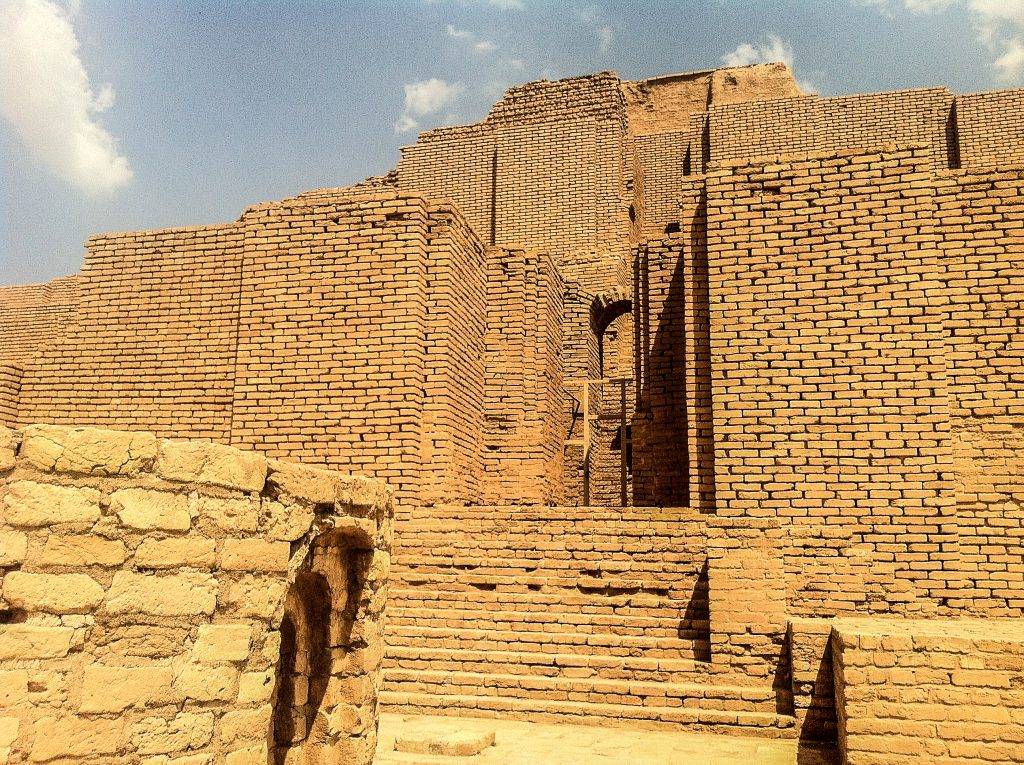
| Ziggurat of Dur-Kurigalzu The Ziggurat of Dur-Kurigalzu, located near the modern city of Baghdad, Iraq, is an ancient Mesopotamian temple complex built by King Kurigalzu I. Key features include its multi-tiered construction and well-preserved core, standing as a testament to the architectural prowess of the Kassite period. Period: Constructed around the 14th century BC. | The Ziggurat of Ur The Ziggurat of Ur, located near Nasiriyah in southern Iraq, is one of the best-preserved and most famous ziggurats in Mesopotamia. Key features include its massive rectangular base, three tiers of terraces, and a grand staircase leading to the temple at the top, dedicated to the moon god Nanna. Period: Constructed in the 21st century BC during the Third Dynasty of Ur. |
| Ziggurat of Nippur The Ziggurat of Nippur, located in the ancient city of Nippur in central Iraq, is an important religious site dedicated to the Sumerian god Enlil. Key features include the remains of a multi-tiered platform, which served as the foundation for a temple complex that was a major religious center for the Sumerians. Period: Constructed around the 21st century BC, with renovations during subsequent periods. | Ziggurat of Kish The Ziggurat of Kish, located in the ancient city of Kish near modern-day Al-Hillah in Iraq, is one of the oldest known ziggurats. Key features include its foundational remnants and its historical significance as one of the early centers of Sumerian civilization. Period: Constructed around the early 3rd millennium BC. |
| Ziggurat of Borsippa The Ziggurat of Borsippa, located near the ancient city of Babylon in Iraq, is known for its significant ruins, often associated with the temple of the god Nabu. Key features include its steep, multi-tiered design and its historical references as the “Tower of Babel” in later traditions. Period: Constructed during the reign of King Nebuchadnezzar II in the 6th century BC. | Ziggurat of Uruk The Ziggurat of Uruk, located in the ancient city of Uruk in southern Iraq, is part of one of the world’s oldest known cities. Key features include its base remains, indicating a grand structure that once stood in honor of the sky god Anu. Period: Constructed around the 4th millennium BC, with significant developments during the early dynastic period. |
| Etemenanki – Iraq Etemenanki, located in Babylon, Iraq, is an ancient ziggurat dedicated to the god Marduk. Key features include its massive multi-tiered structure, which is believed to have inspired the biblical Tower of Babel. The ziggurat’s remains indicate it was one of the largest and most impressive structures of its time. Period: Constructed during the late second millennium BC (circa 600 BC under Nebuchadnezzar II). |
Ziggurats in Iran
| Chogha Zanbil (Iran) Chogha Zanbil, located near Susa in Khuzestan Province, Iran, is an ancient Elamite complex known for its large ziggurat. Key features include the massive multi-tiered ziggurat dedicated to the god Inshushinak, surrounded by temples, palaces, and a defensive wall. It is one of the best-preserved examples of Elamite architecture. Period: Constructed in the 13th century BC. | Sialk Ziggurat The Sialk Ziggurat, located near Kashan in central Iran, is an ancient ziggurat and archaeological site. Key features include two platforms dating back to different periods, with the older ziggurat made from mud bricks and dating to the early part of the 3rd millennium BC. It provides valuable insights into early urbanization and architecture in Iran. Period: Occupied from the 4th millennium BC to the early 1st millennium BC. |
Pyramids Around the World FAQ
Where are the 3 pyramids in Egypt called?
The 3 most famous pyramids in Egypt, known collectively as the Giza Pyramid Complex, are located on the Giza Plateau, near Cairo. These are:
- The Great Pyramid of Giza (also known as the Pyramid of Khufu or Cheops): This is the largest of the three pyramids and is one of the Seven Wonders of the Ancient World. It was built as a tomb for the pharaoh Khufu (Cheops).
- The Pyramid of Khafre (Chephren): This is the second-largest of the Giza pyramids and was built as a tomb for Khafu’s son, Pharaoh Khafre. It is slightly smaller than the Great Pyramid and is accompanied by the Great Sphinx.
- The Pyramid of Menkaure: This is the smallest of the three main Giza pyramids and was built for Pharaoh Menkaure, the successor to Khafre.
These pyramids were built during Egypt’s Fourth Dynasty (c. 2613–2494 BCE) and are among the oldest, largest, and best-preserved structures from ancient Egypt. They have become iconic symbols of Egypt’s ancient civilization.
How old are the Pyramids in Egypt?
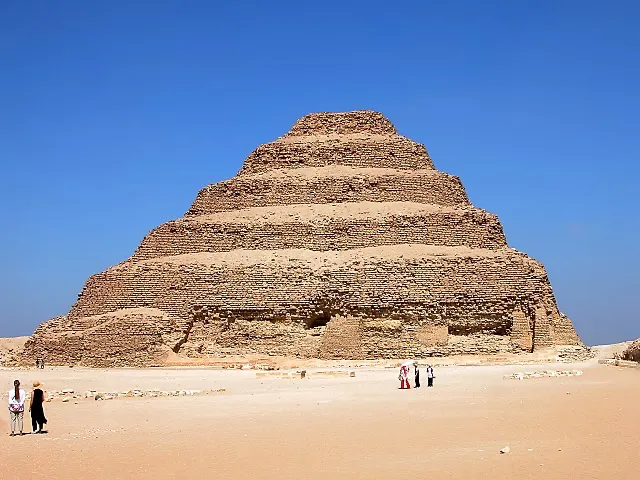
The pyramids in Egypt are among the oldest man-made structures in the world, with their construction dating back to ancient times. Here’s an overview of the ages of some of the most notable pyramids:
The Great Pyramid of Giza
- Age: Approximately 4,500 years old.
- Construction Period: Built around 2580-2560 BCE.
- Significance: It is the oldest of the Seven Wonders of the Ancient World and the most famous pyramid in Egypt.
The Pyramid of Djoser
- Age: Approximately 4,700 years old.
- Construction Period: Built around 2670 BCE.
- Significance: This step pyramid is considered the earliest colossal stone building in Egypt and was designed by the architect Imhotep.
The Pyramids of Sneferu
- The Bent Pyramid
- Age: Approximately 4,600 years old.
- Construction Period: Built around 2600 BCE.
- Significance: Known for its unique shape, transitioning from a steep angle to a shallower one.
- The Red Pyramid
- Age: Approximately 4,600 years old.
- Construction Period: Built around 2600 BCE.
- Significance: The first true smooth-sided pyramid.
The Pyramid of Khafre
- Age: Approximately 4,500 years old.
- Construction Period: Built around 2570 BCE.
- Significance: Known for its preserved casing stones at the top and the Great Sphinx of Giza, which is part of its complex.
Summary
The pyramids of Egypt date back to approximately 4,500 to 4,700 years ago, with the Pyramid of Djoser being the oldest among the notable ones. These ancient structures stand as a testament to the ingenuity and architectural prowess of the ancient Egyptians.
Are pyramids of Giza aligned with stars?
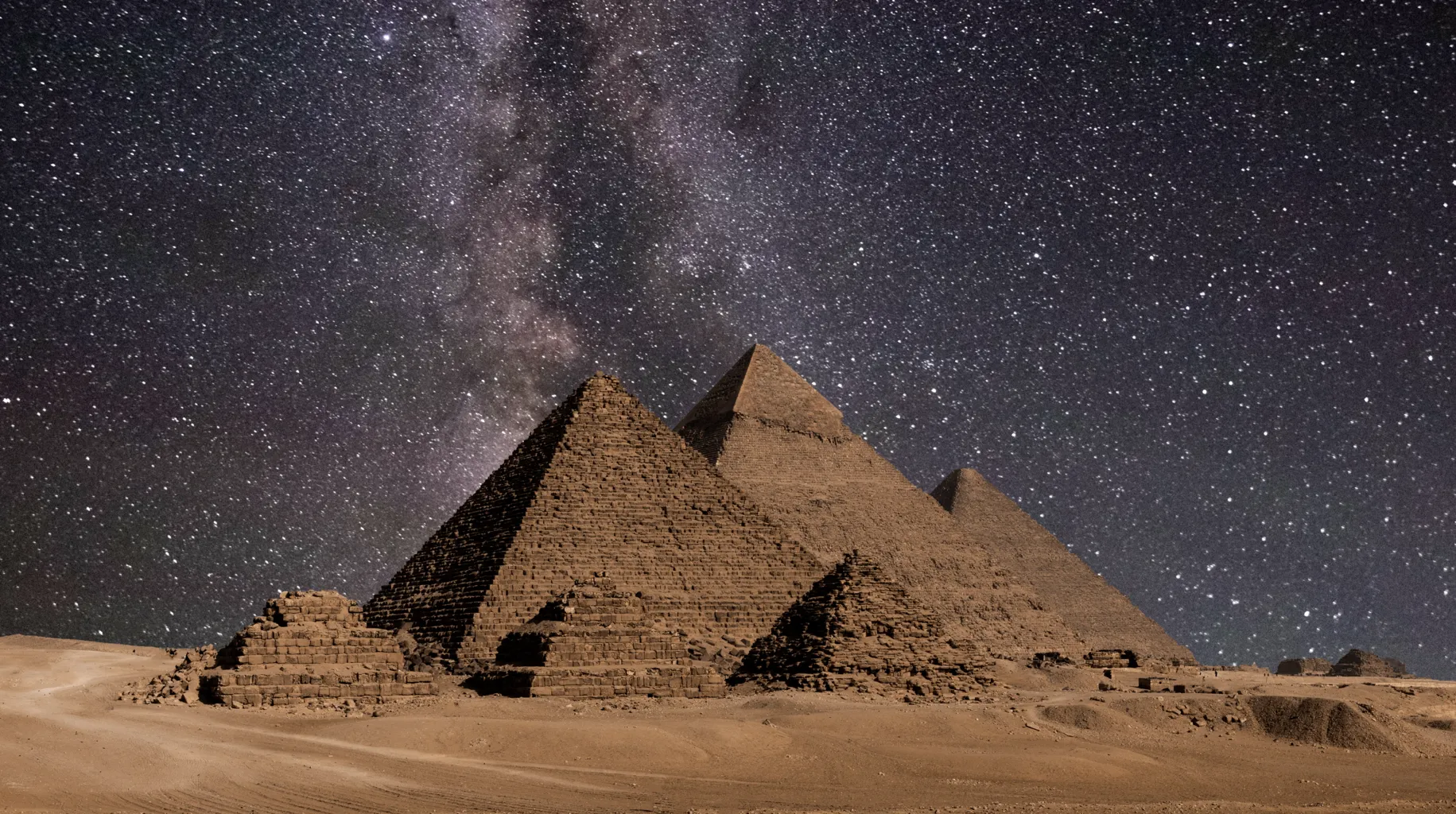
Yes, the Pyramids of Giza are aligned with stars. Specifically, the three main pyramids are said to align with the belt stars of the Orion constellation. This alignment is thought to reflect the Egyptians’ astronomical knowledge and religious significance attached to Orion, associating it with Osiris, the god of the afterlife. This star alignment also reflects the impressive precision of ancient Egyptian engineering and astronomy.
Did Aliens Build the Pyramids?
No, aliens did not build the pyramids. The construction of the pyramids, particularly the Great Pyramid of Giza, is well-documented and attributed to the ancient Egyptians. Here are some key points explaining how the pyramids were built:
- Human Labor: Tens of thousands of skilled laborers and workers were involved in the construction process. Evidence suggests they were well-fed and housed, indicating they were not slaves but a dedicated workforce.
- Engineering Techniques: The ancient Egyptians used advanced engineering techniques and tools for their time. They employed simple machines such as ramps, levers, and sledges to move and position the massive stone blocks.
- Archaeological Evidence: Archaeological findings, including tools, worker camps, and construction plans, support the human origin of the pyramid construction. These discoveries align with historical records and inscriptions found in and around the pyramids.
- Historical Records: Ancient Egyptian writings and inscriptions provide detailed accounts of the pharaohs commissioning the pyramids and the extensive planning and resources allocated for their construction.
- Scientific Studies: Modern scientific studies, including geological and structural analysis, corroborate the techniques and materials used by the Egyptians. These studies further disprove the necessity of extraterrestrial intervention.
The combination of these factors provides a comprehensive understanding that the pyramids were built by human ingenuity and effort, not by aliens.
When were the Giza pyramids built?
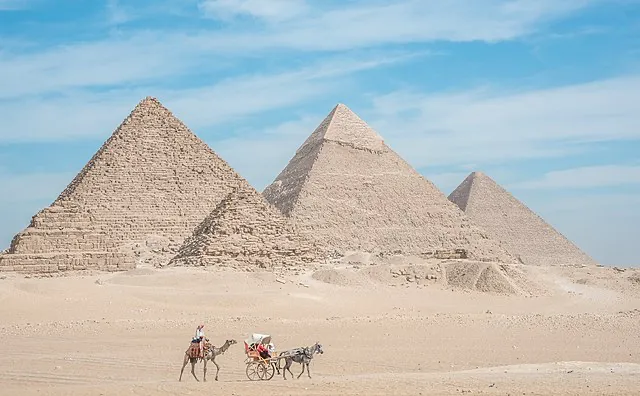
The Pyramids of Giza were constructed during Egypt’s Fourth Dynasty, mainly between 2580 and 2510 BCE. The Great Pyramid of Giza, the oldest and largest, is believed to have been completed around 2560 BCE. These structures served as monumental burial sites for Pharaohs Khufu, Khafre, and Menkaure.
How Long Did It Take to Build an Average Pyramid?
The construction time for pyramids in ancient Egypt varied depending on their size, complexity, and the resources available. Here’s an overview of the construction times for some of the most notable pyramids:
The Great Pyramid of Giza
- Construction Time: Approximately 20 years.
- Factors: The project required a large workforce, advanced planning, and continuous effort to complete this massive structure.
The Pyramid of Djoser
- Construction Time: Estimated around 19 years.
- Factors: As the first step pyramid, it involved innovative architectural techniques and careful coordination.
The Bent Pyramid
- Construction Time: Estimated around 15 years.
- Factors: The unique change in angle during construction may have influenced the time required to complete it.
The Red Pyramid
- Construction Time: Estimated around 17 years.
- Factors: As the first successful attempt at a true smooth-sided pyramid, it involved overcoming significant engineering challenges.
Average Construction Time
On average, building a pyramid in ancient Egypt likely took between 15 to 20 years. This estimate accounts for the planning, quarrying of stones, transportation, and the actual construction process. With the duration influenced by factors such as the pyramid’s size, design complexity, and available workforce.
How tall are the Pyramids of Giza?
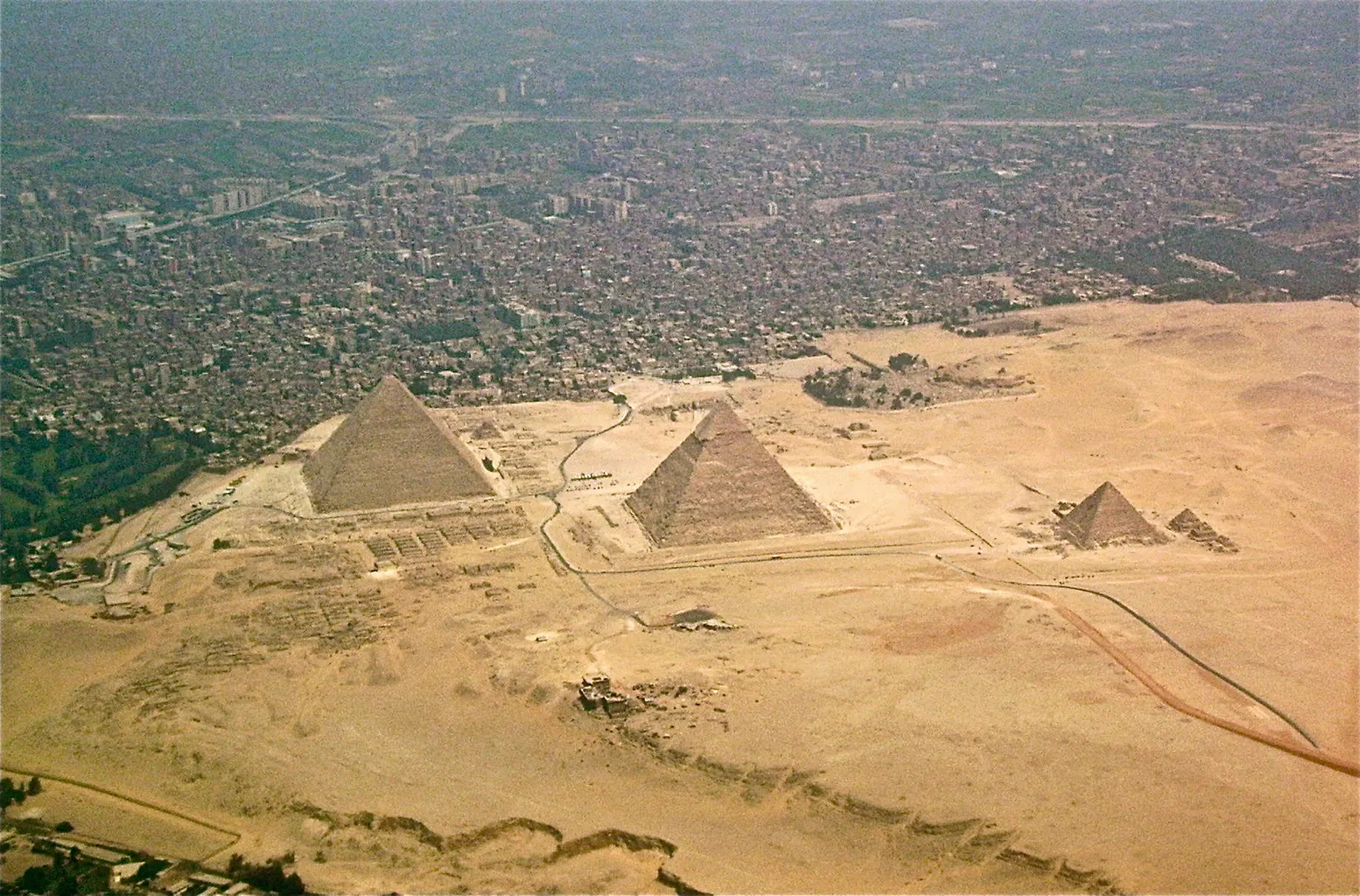
The original heights of the three Giza pyramids are as follows:
- Khufu (Great Pyramid): Originally about 146.6 meters (481 feet), now approximately 138.8 meters (455 feet) due to the loss of the outer casing stones and capstone.
- Khafre: Originally around 143.5 meters (471 feet), currently about 136.4 meters (448 feet).
- Menkaure: Originally about 65.5 meters (215 feet), now around 62 meters (203 feet).
These heights have slightly decreased over time due to erosion and removal of their outer layers.
Did slaves build the Pyramids of Giza?
The construction of the pyramids, especially those at Giza, was likely carried out by a large workforce of skilled laborers, not slaves. This workforce may have included farmers during the Nile’s flood season and professional artisans. Recent archaeological findings suggest these workers were well-fed and housed in a nearby temporary city. The theory that slaves built the pyramids is now largely discredited among scholars.
How many sides do Pyramids have?
A traditional Egyptian pyramid has five sides: four triangular sides that meet at a point at the top and a square base. However, from a three-dimensional perspective, these structures are considered to have four sides. The confusion sometimes arises because the base, technically the fifth “side,” is not always counted when describing the sloped surfaces that constitute the visible architecture of a pyramid.
What country has the most discovered Pyramids?
Sudan has the most pyramids, with over 200 discovered. These are known as Nubian pyramids, built by the ancient Kushite kingdoms, differing from Egyptian pyramids in their size, design, and density.
Are Pyramids mentioned in the bible?
Pyramids as specific structures are not directly mentioned in the Bible. While Egypt and its kings (pharaohs) are frequently mentioned, specific references to the pyramids themselves are not found in the biblical texts. The story of the Israelites’ slavery and exodus from Egypt is a significant part of the Bible, but it does not include details about pyramid construction.
Are the Pyramids Obelisks?
No, pyramids and obelisks are different types of structures. Pyramids are massive architectural structures with a square base and four triangular sides converging to a point at the top. Obelisks, on the other hand, are tall, narrow, four-sided, tapering monuments with a pyramidion (a miniature pyramid shape) at the top. They were both used in ancient Egyptian architecture but served different purposes and have distinct shapes.
How far are the Giza Pyramids from Cairo?
The Pyramids of Giza are located about 13 kilometers (8 miles) from the center of Cairo, Egypt. This distance means they are quite close to the city and easily accessible for visitors.
Why Did the Egyptians Build Pyramids?
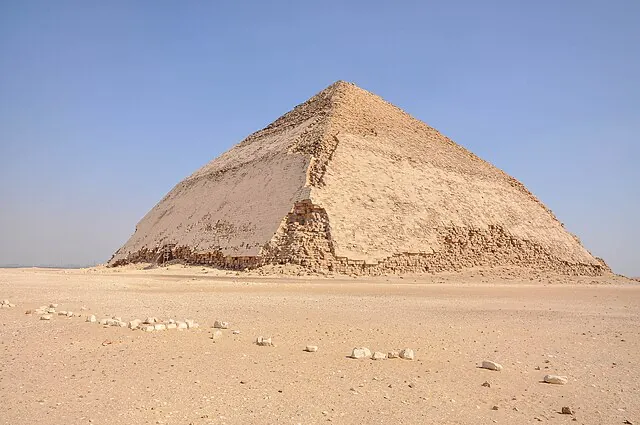
The ancient Egyptians built pyramids primarily as tombs for their pharaohs and queens. Here are the main reasons behind the construction of these monumental structures:
- Religious Beliefs: The pyramids were built as part of the Egyptians’ elaborate religious beliefs in the afterlife. They believed that the pharaoh, upon death, would ascend to the heavens and join the gods, particularly the sun god Ra.
- Monuments of Power: Pyramids served as powerful symbols of the pharaoh’s divine status and their absolute power. The grandeur and scale of these structures were intended to demonstrate the pharaoh’s ability to mobilize and command resources and labor.
- Protection of the Pharaoh: The pyramids were designed to protect the deceased pharaoh’s body and his possessions, which were buried with him to be used in the afterlife. The complex internal structures and hidden chambers were meant to deter tomb robbers.
- Cultural Significance: Building pyramids was a continuation of earlier burial practices, where high-ranking officials were buried in mastabas. The evolution from mastabas to pyramids marked a significant cultural and architectural advancement.
- Legacy and Immortality: Pyramids were constructed to ensure the pharaoh’s legacy endured for eternity. They were meant to be everlasting monuments that would keep the memory of the pharaoh alive and honor his reign.
How many Underwater Pyramids are there?
The concept of underwater pyramids remains a subject of intrigue and speculation. Known underwater pyramid-like structures include the Yonaguni Monument near Japan, a submerged structure discovered near the Azores, and reported findings off the coast of Cuba. Each of these locations features structures that have sparked debates regarding their origins—whether they are man-made, natural formations, or perhaps even remnants of ancient civilizations. So far there is no conclusive proof they are indeed underwater man-made Pyramids.
What are Egypt pyramids made of?
The pyramids in Egypt are primarily constructed from the following materials:
- Limestone: The primary material used for the core structure of the pyramids. The casing stones, which gave the pyramids their smooth, angled sides, were made of high-quality Tura limestone, a finer grade of limestone.
- Granite: Used in the construction of interior chambers and passages. Granite was sourced from Aswan, located south of Cairo, and transported to the pyramid sites. It is particularly noted for its use in the King’s Chamber of the Great Pyramid of Giza.
- Mudbrick: Used for the construction of smaller pyramids, valley temples, and other auxiliary buildings. Mudbricks were more commonly used in earlier pyramids and in the later phases of pyramid construction.
- Basalt and Alabaster: These stones were used for the floors of the pyramid temples and causeways. Basalt was used for paving the temple floors, and alabaster was used for decorative elements.
- Gypsum Mortar: This was used as a bonding material to hold the limestone blocks together. It helped to fill gaps between the blocks and ensure the stability of the structure.
These materials were chosen for their availability, durability, and the ease with which they could be quarried, transported, and worked into the necessary shapes for construction.
How many stones in the great pyramid?
The Great Pyramid of Giza, also known as the Pyramid of Khufu, is estimated to have been constructed with approximately 2.3 million stone blocks. These blocks vary in size and weight, with the average weight being around 2.5 tons. Some of the larger blocks, particularly those used in the King’s Chamber, weigh as much as 80 tons.

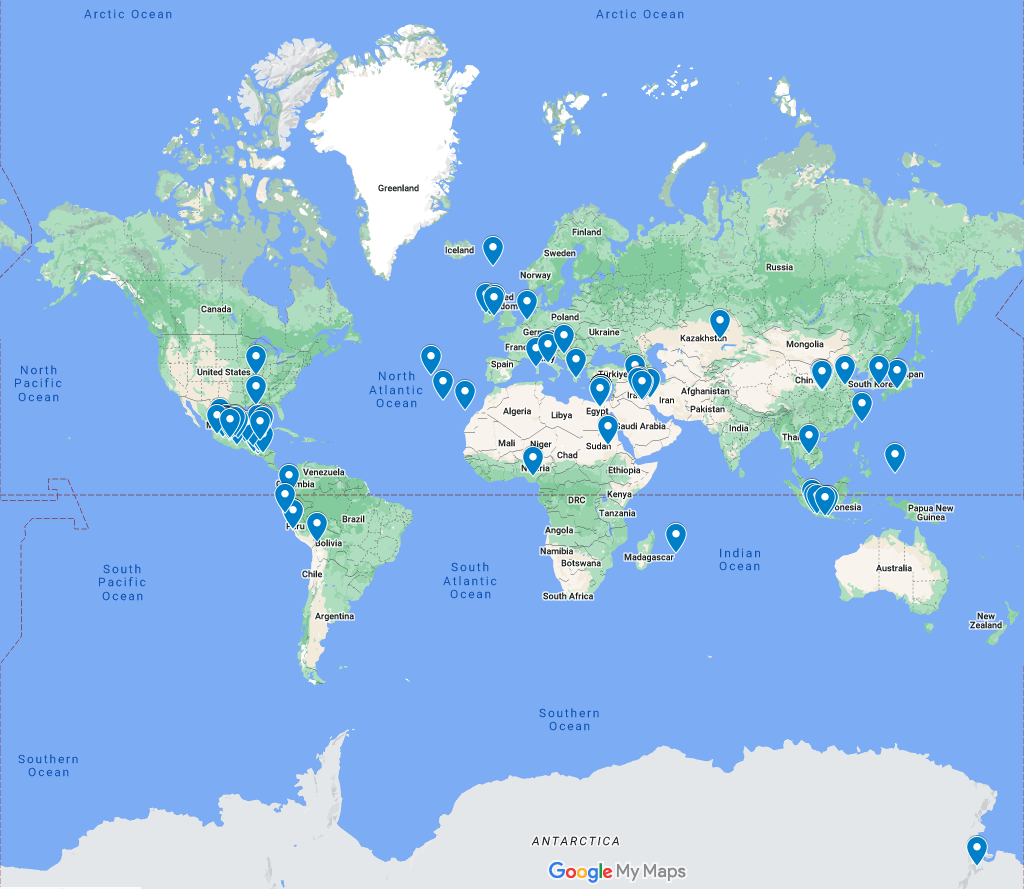
You missed La Huaca del Sol and La Huaca de la Luna in Trujillo, Perú. They were built by the Moche tribe, supposedly around the 800’s, I believe
These have now been added 🙂
Very interesting and informative
Modern: Edmonton, Alberta, Canada. Muttart Conservatory and City Hall. Keep up the good work!
Thank you – I’ve added Muttart Conservatory. If you have the names of the others please let me know 🙂
Thank you! Here is the other, Edmonton City Hall.
https://www.travelalberta.com/listings/edmonton-city-hall-11919/
Tepanecas Pyramid in Mazatepetl, Magdalena Contreras Mexico City.
Zirahuato Pyramids, San Felipe Los Alzati, in Zitácuaro Michoacán, México.
Hi there. These are two archeological sites I remember from the top of my head which are not listed in your compilation. I will try to send you more names of sites for you to consider, with text and pictures to be shared with your followers.
Keep up the good work.
Amazing! I have researched and published both of those. Very little information around on them, so they’re quite unknown (online). Appreciate it.
Thank you very much for your fascinating documentaries!
There is also the Couhard pyramid (1st century) in the graveyard of Autun, France. Autun was a Roman town. I read (a long time ago) that some archaeologists believe that this pyramid bears witness to a cult of Isis brought by the Romans.
Amazing! Thank you for this, I’ve created a blog post and added it to the list above. Great find.
Hi, I saw pyramids in Tonga. They have an incredible Trilithon as well.
What about pyramids in Antarctica?
They’re speculative, but are on the list above in the speculative section
Hello.
Daniel López again.
There are two other sites worthy to be consider in your listing of Pyramids in Mexico. Both are in the State of Mexico (Estado de Mexico). The first on is Malinalco Archeological Site (Mexica civilization), and the other is The Otomi Ceremonial Center, a modern construction made in homage to the Otomi civilization. Both are fascinating places to visit, and a amusing in Central Mexico.
Cheers.
Thank you Daniel. I had Malinalco as a blog post but hadn’t added it to the list, I have now and the Otomi Ceremonial Center is incredible. I’ve added that to the modern ones. Appreciate it 🙂
Hi there. Daniel López again.
There is a Pyramid right in the city of Morelia, Michoacán, México, which is being rescued as an archeological site, because is supposed to be private property and there’s even a modern construction on top of if. Is called “Pirámide El Barreno”.
Hope you can get some info an insight about what is going on this site.
Cheers.